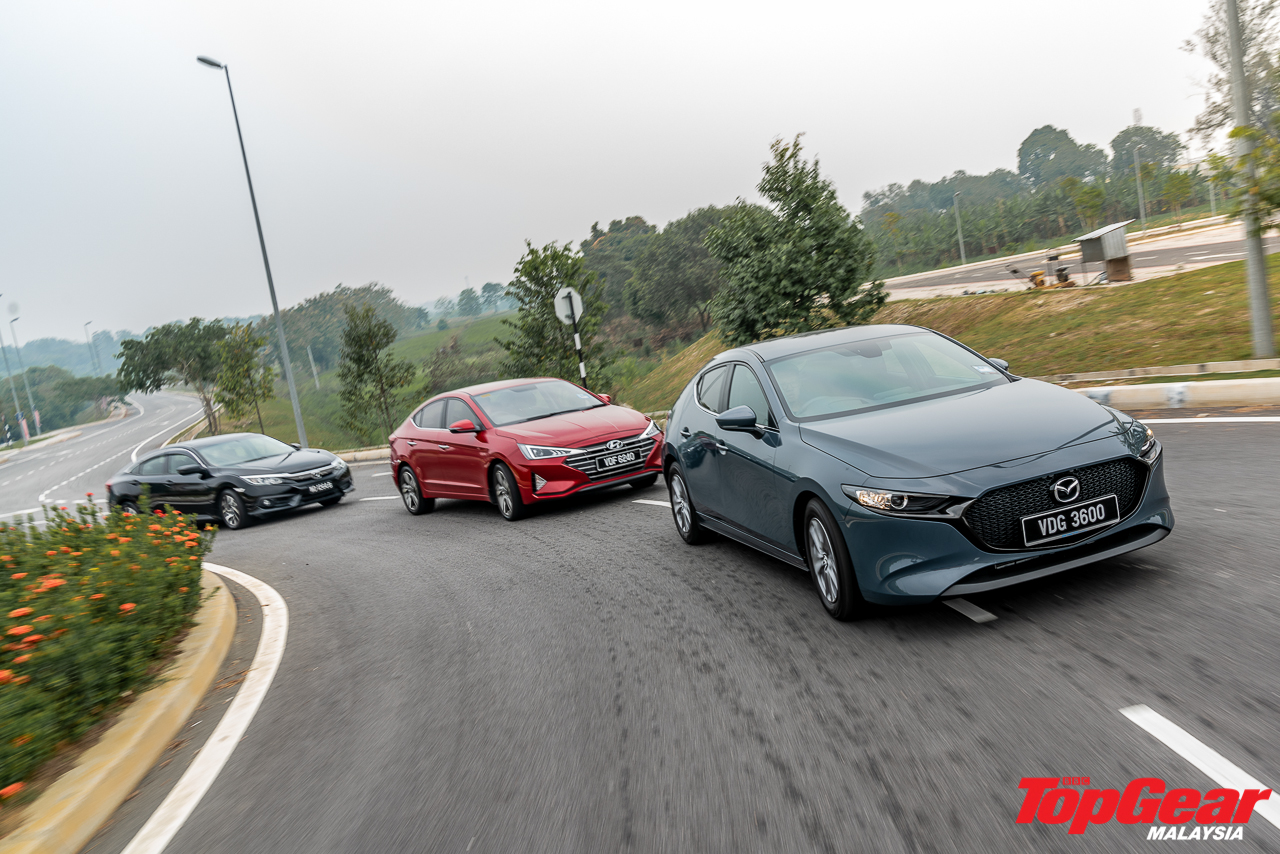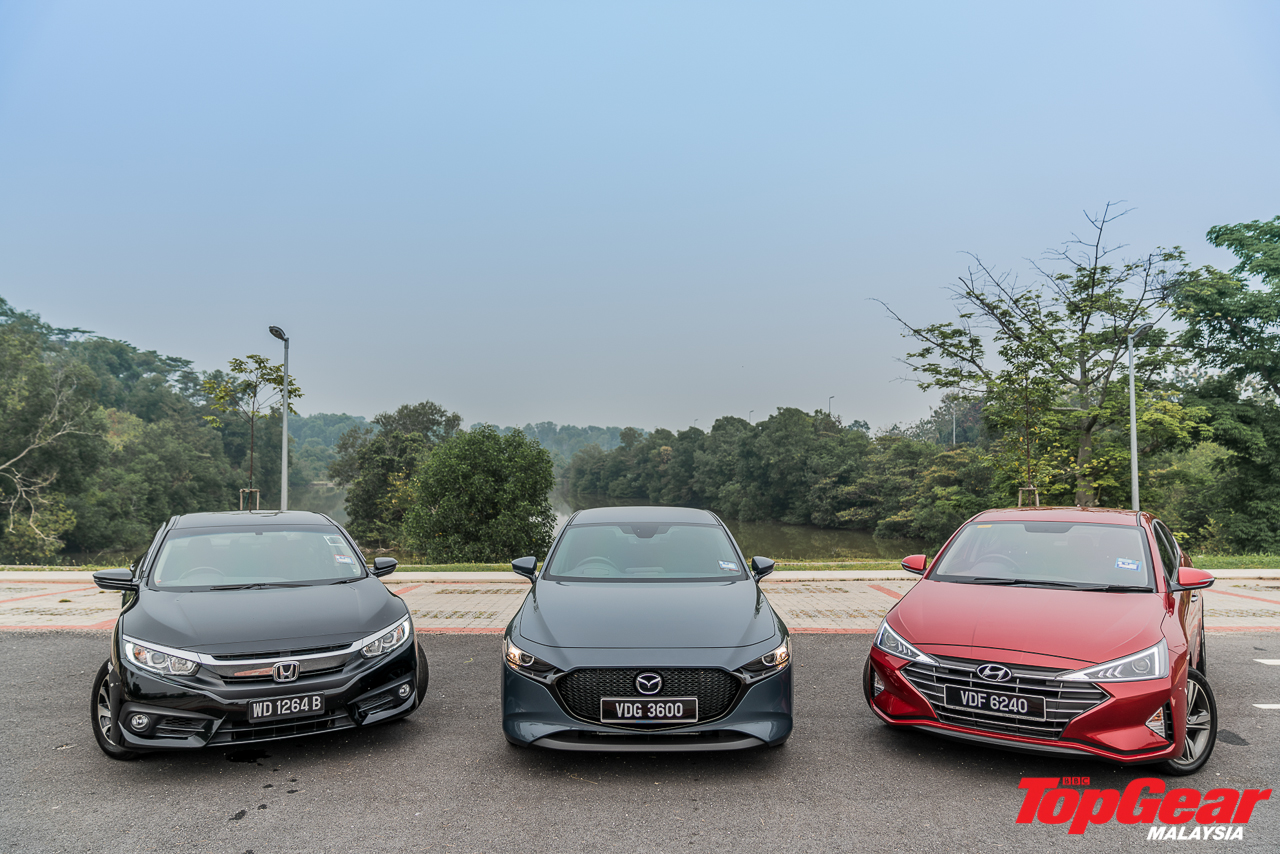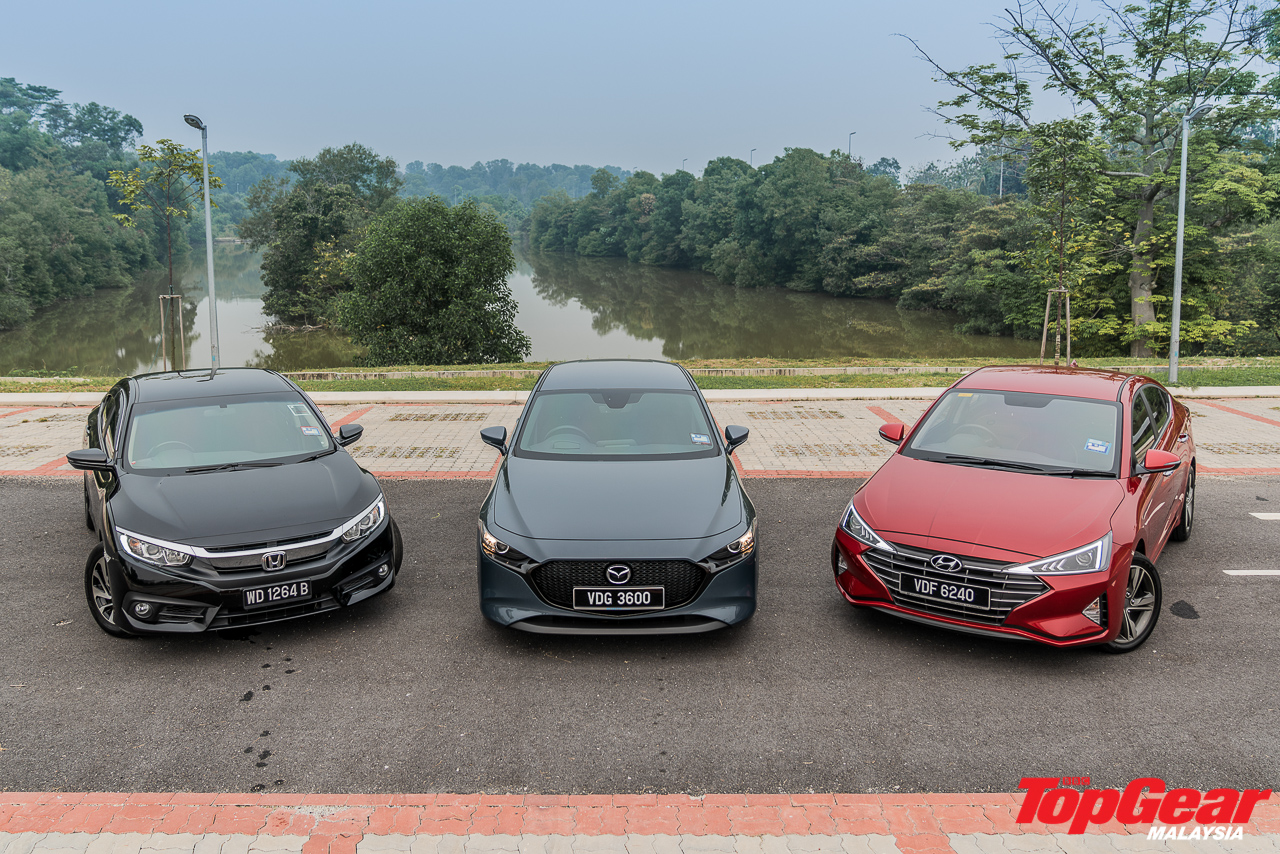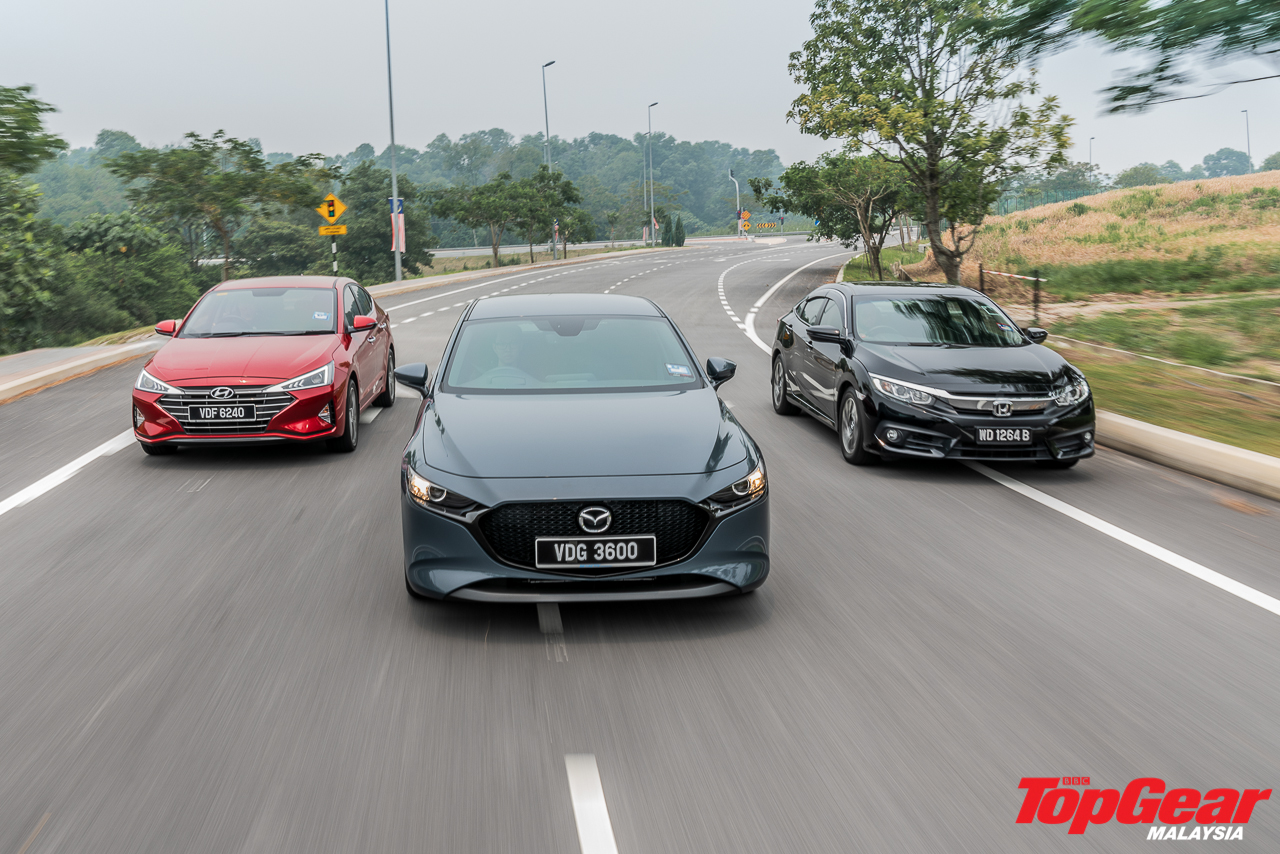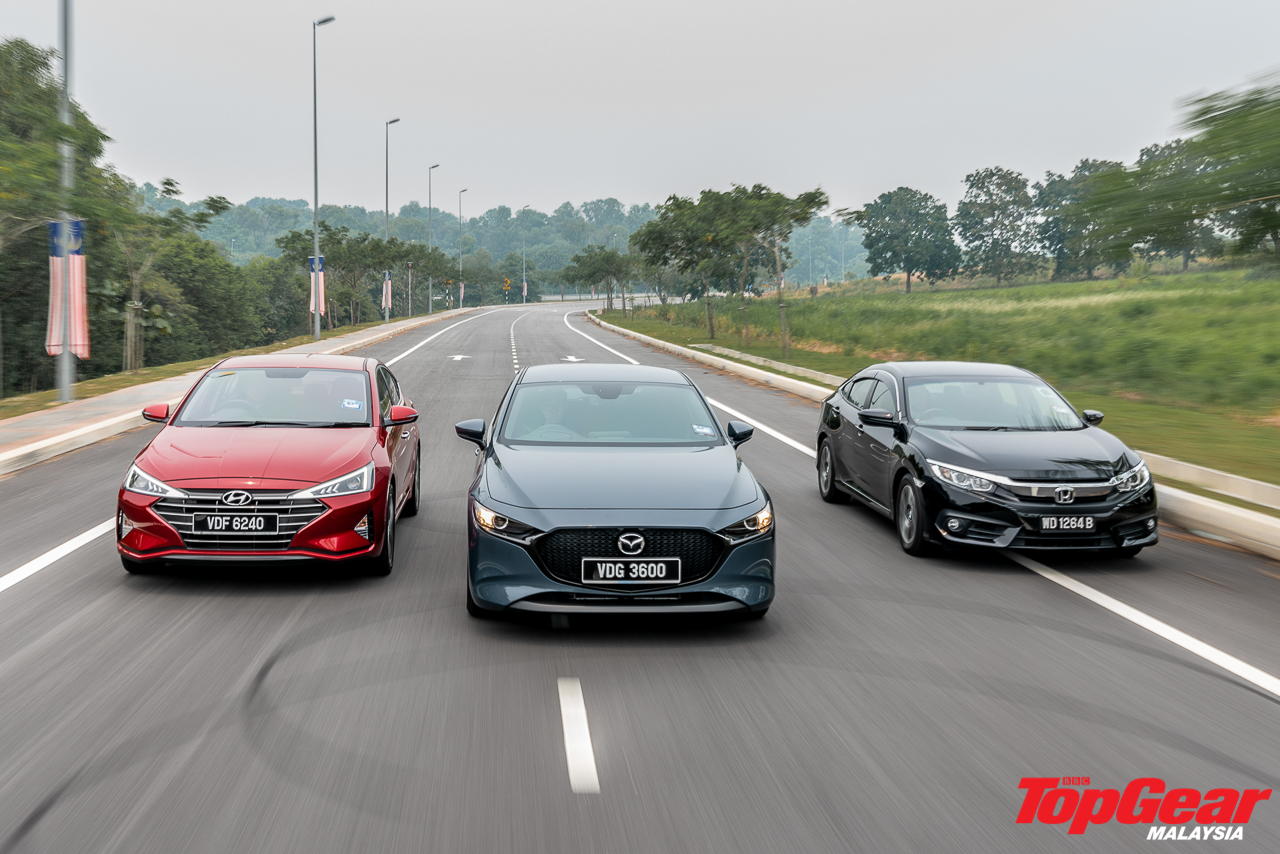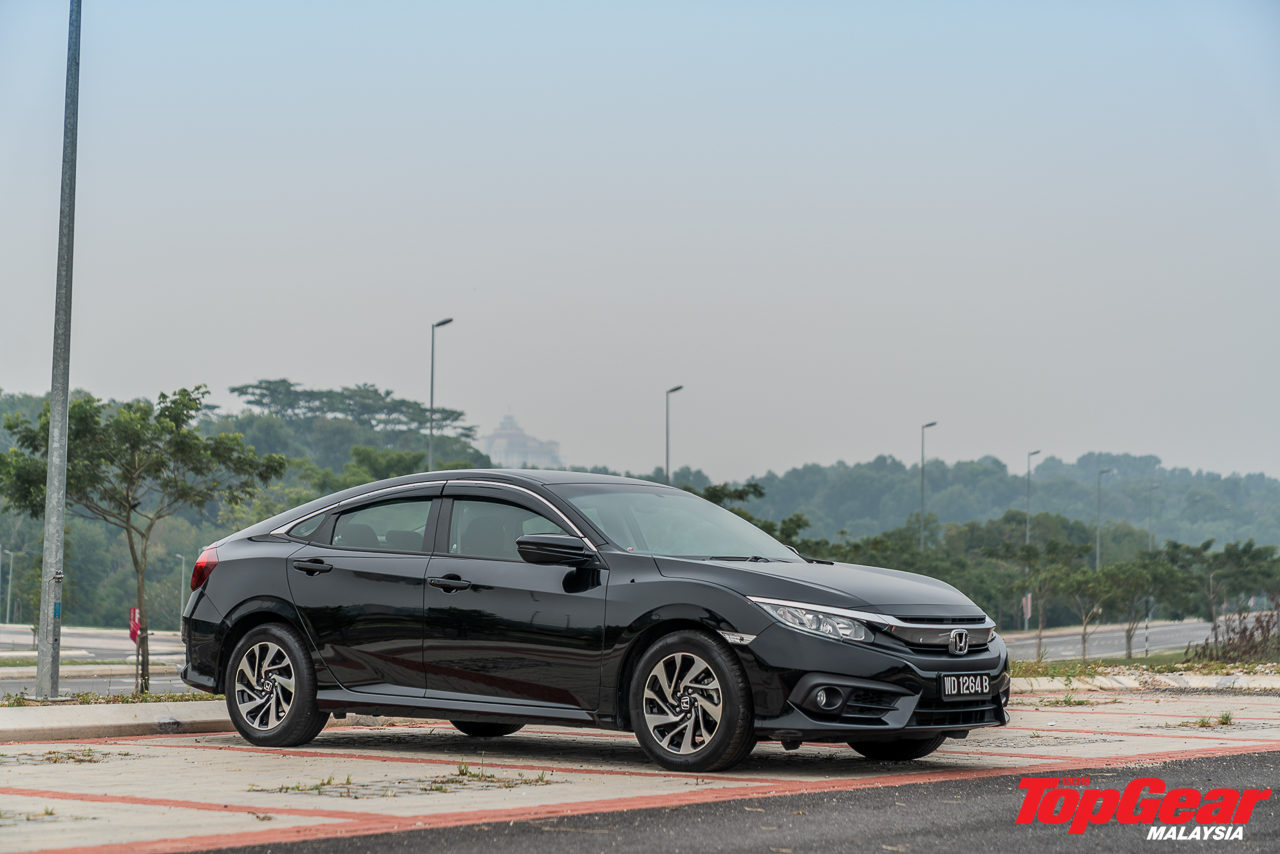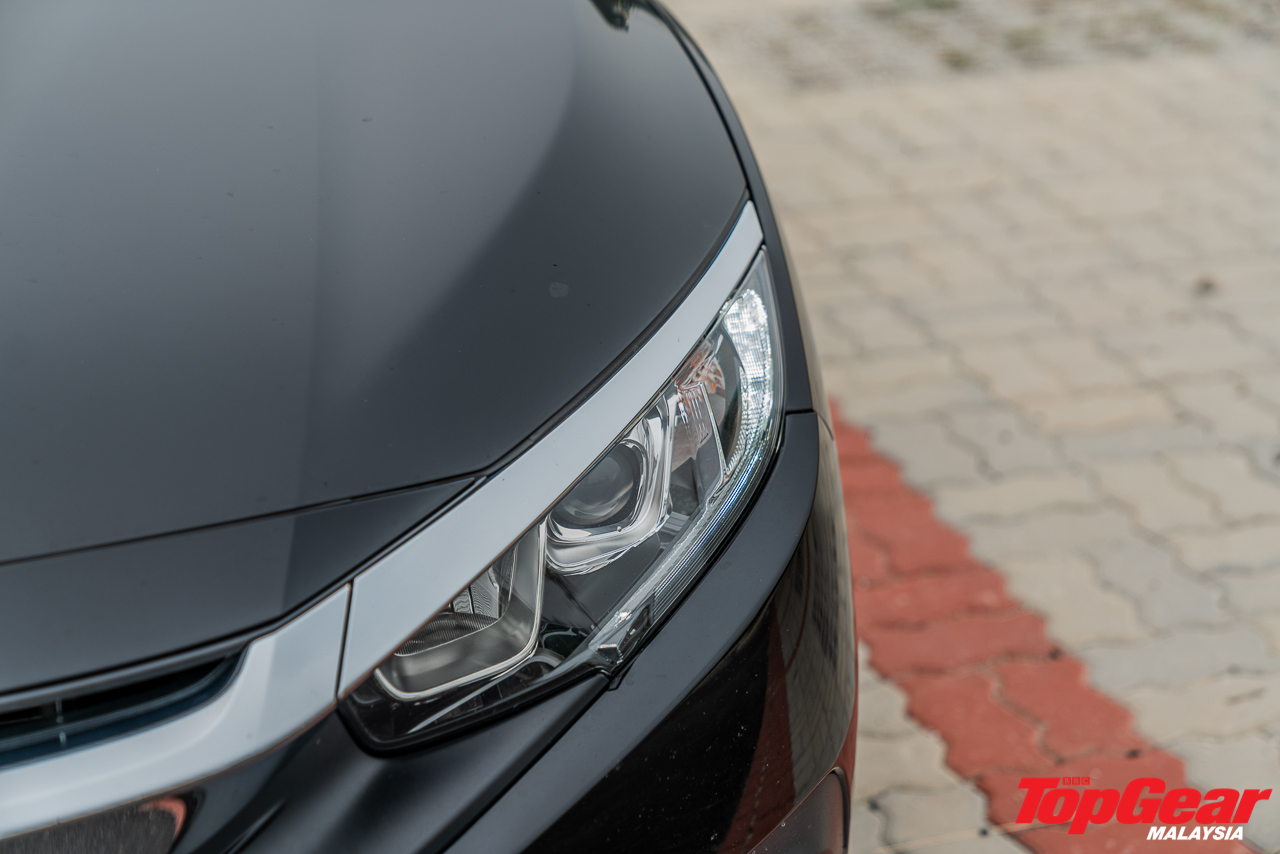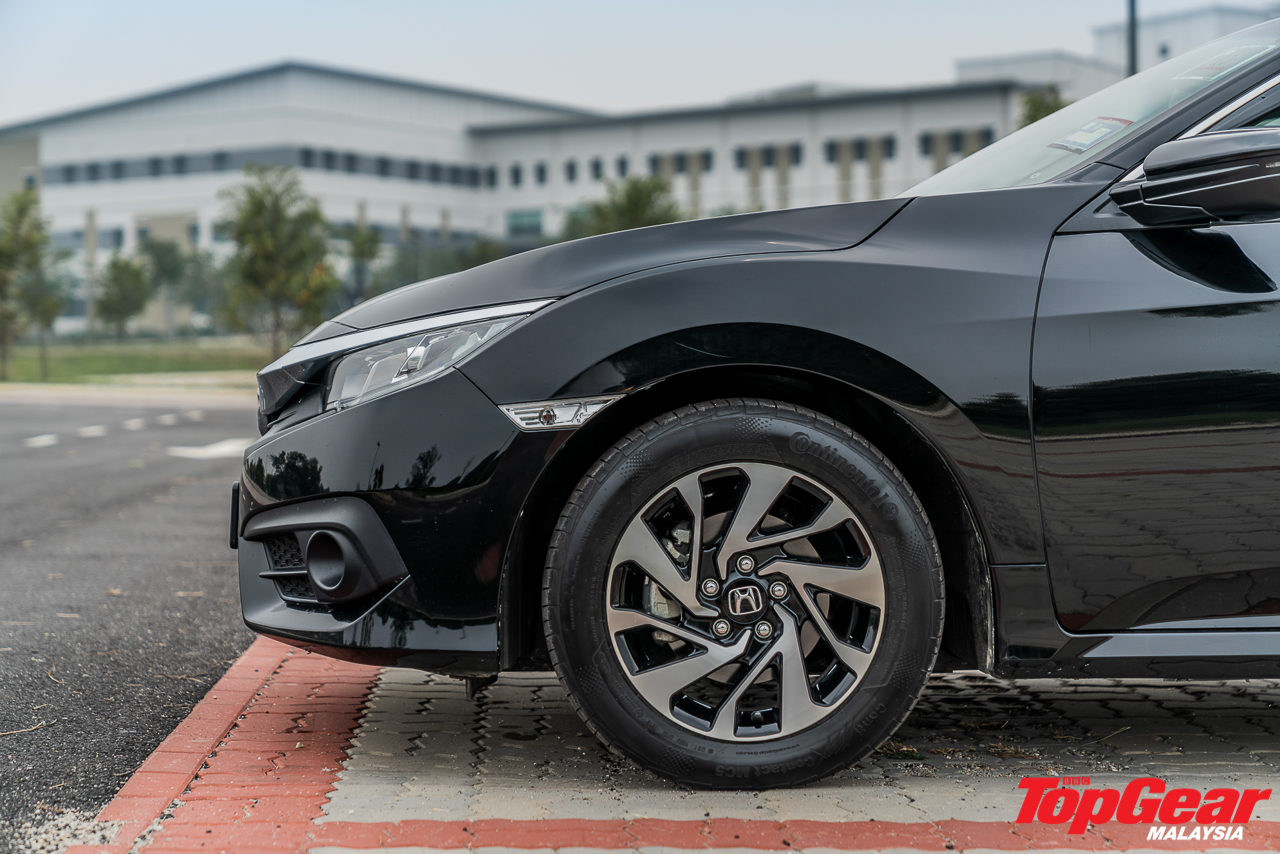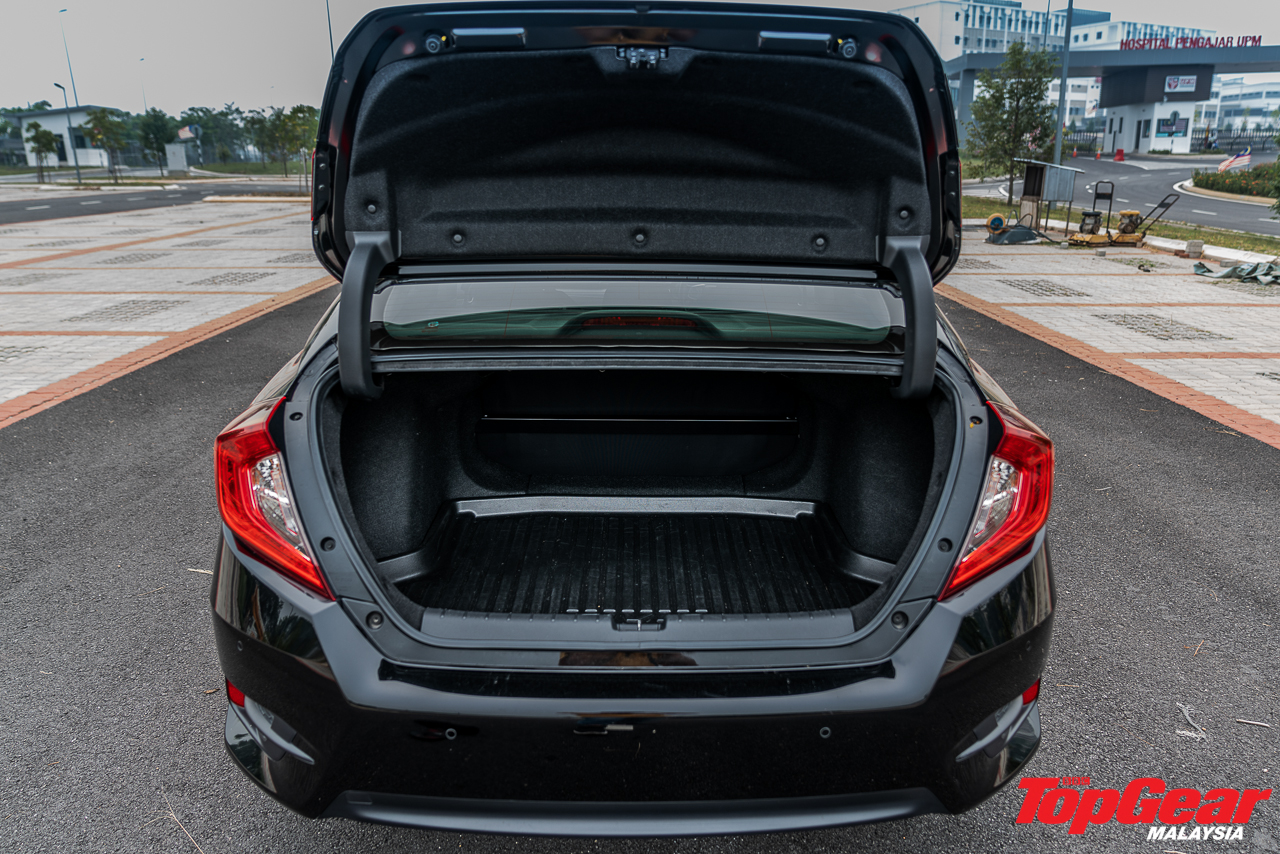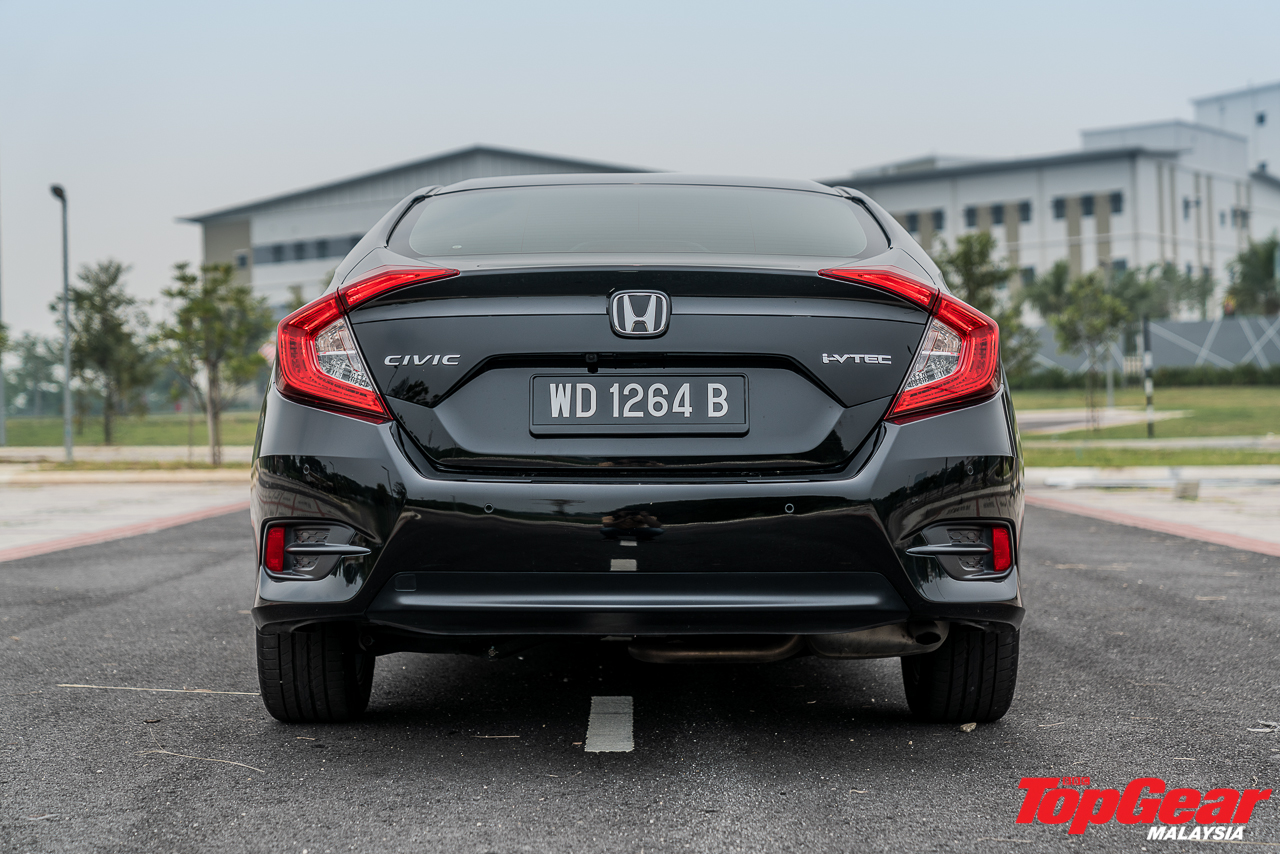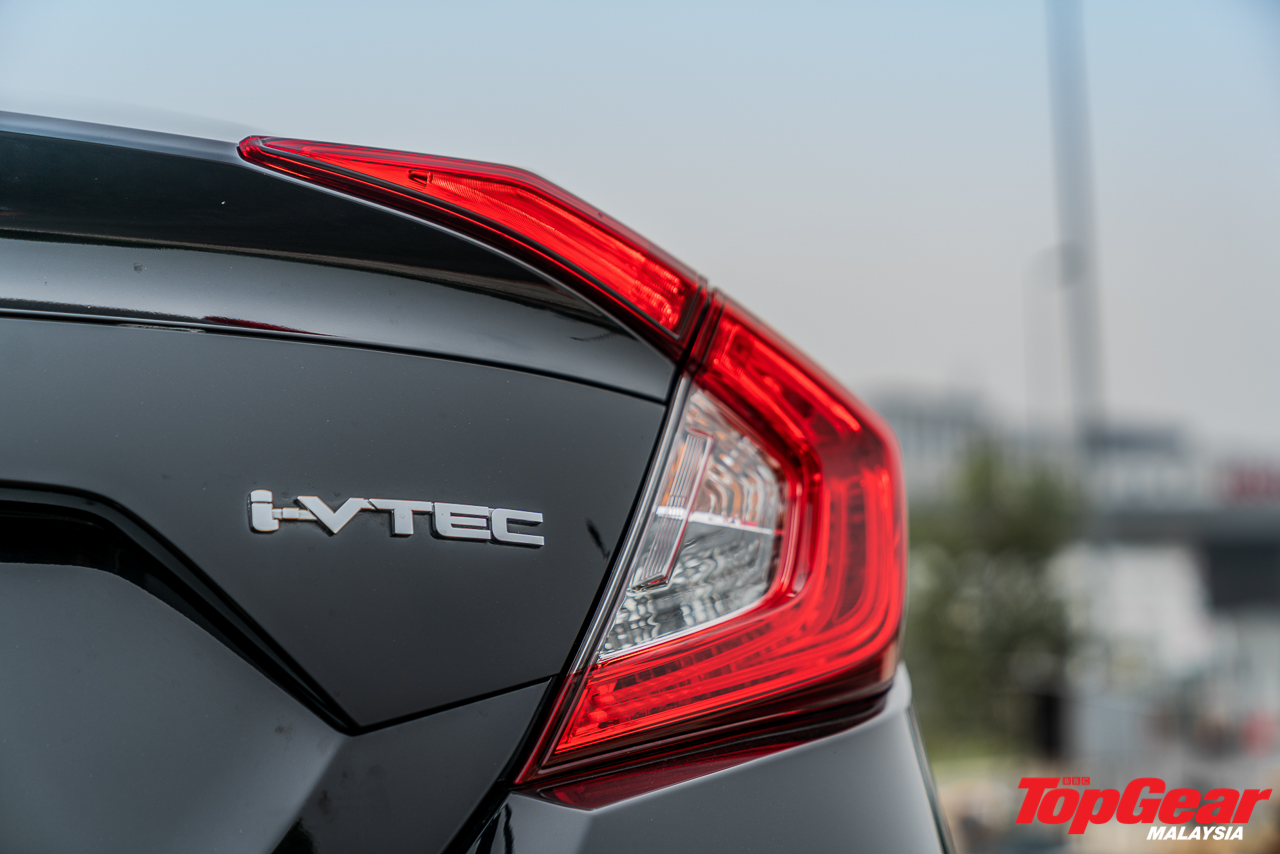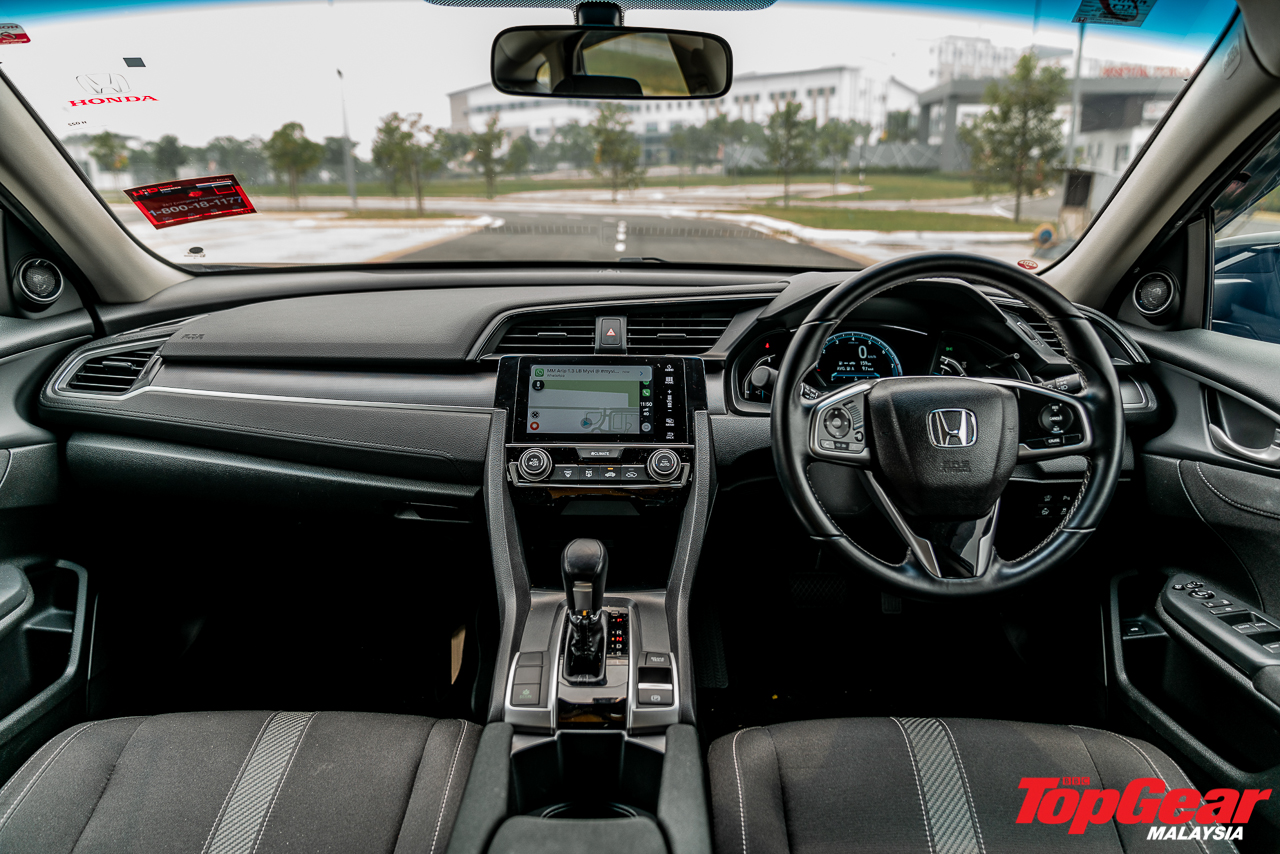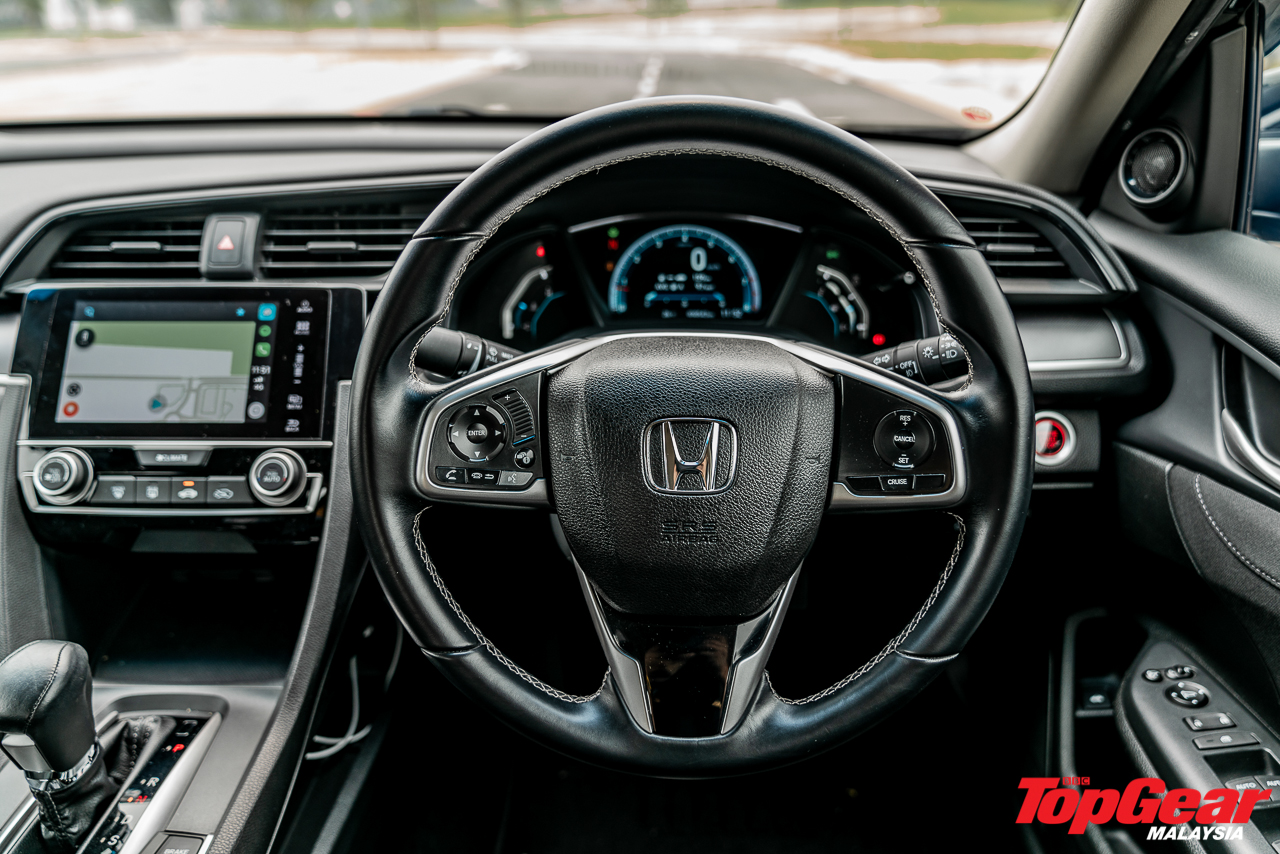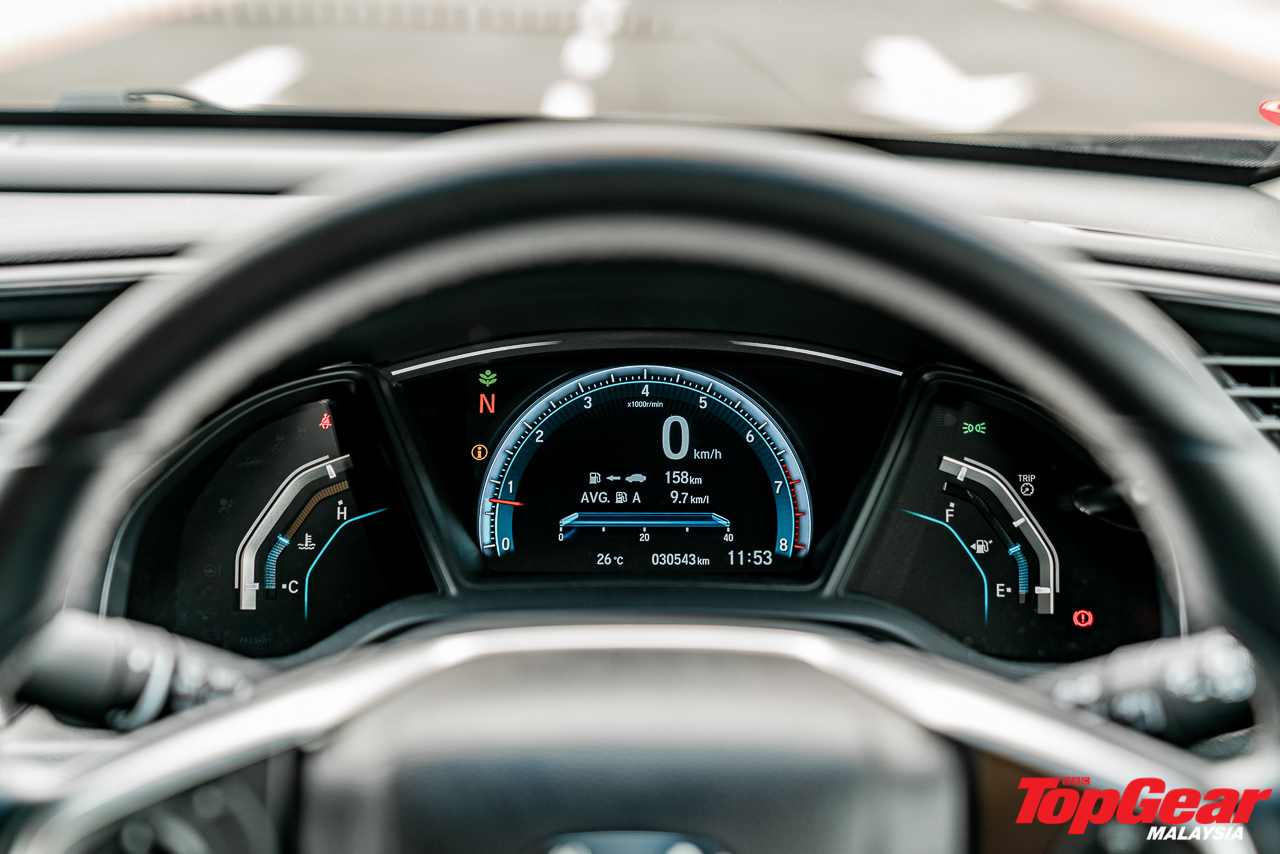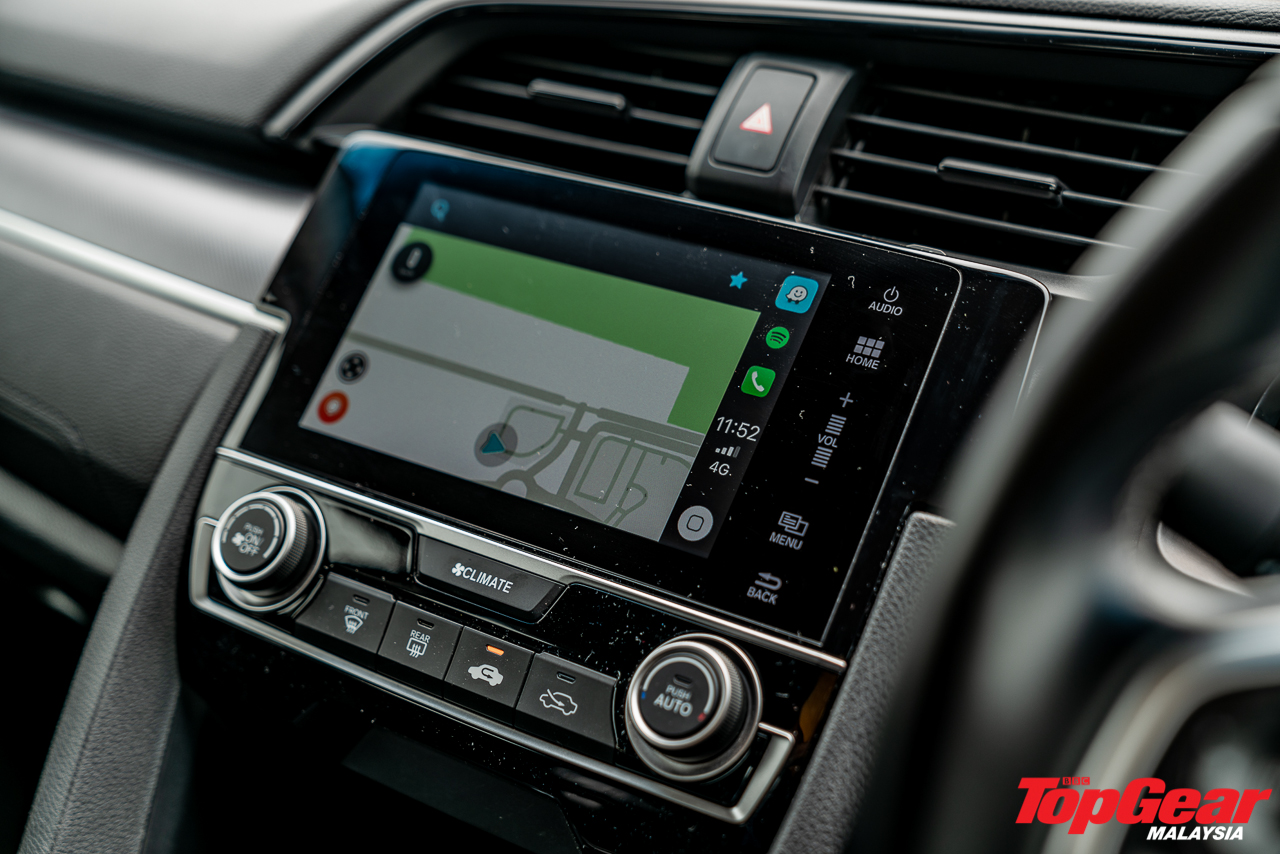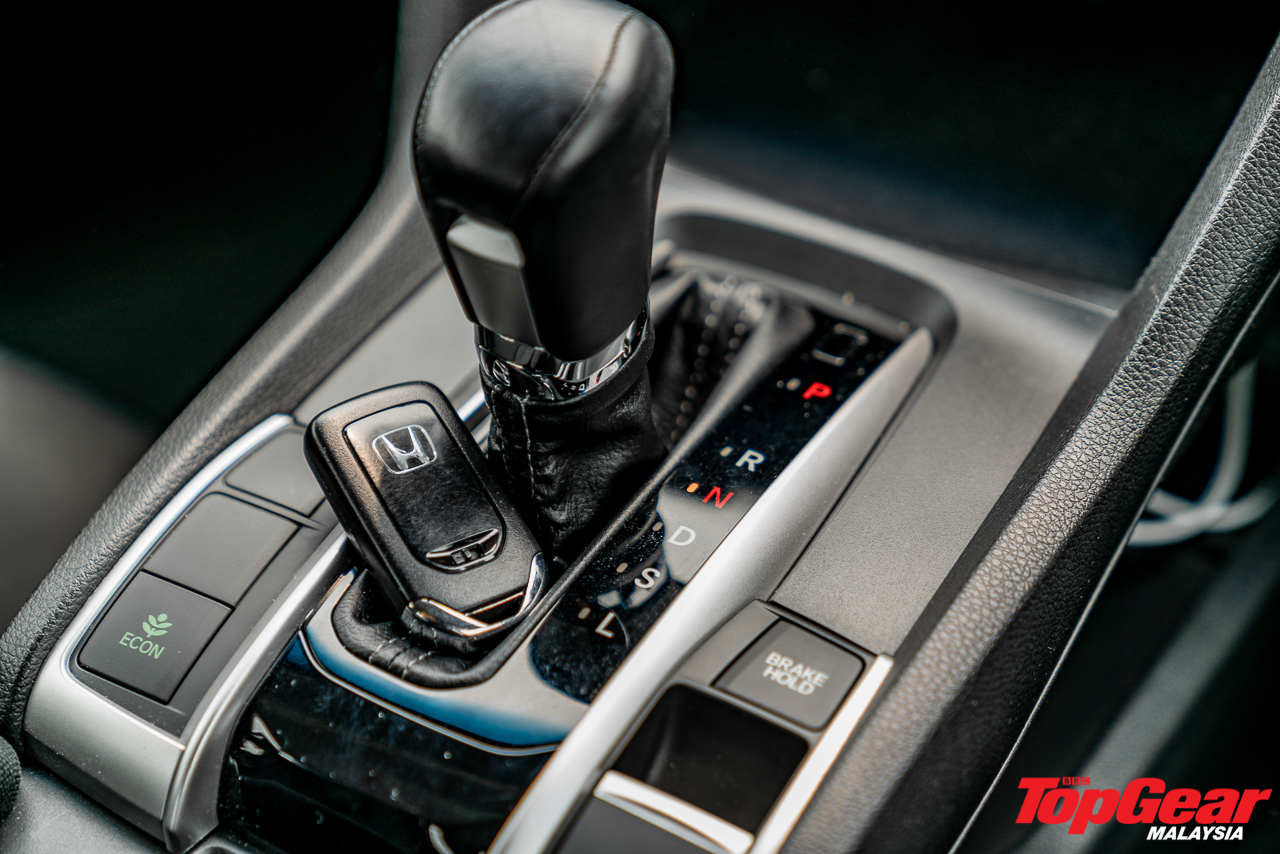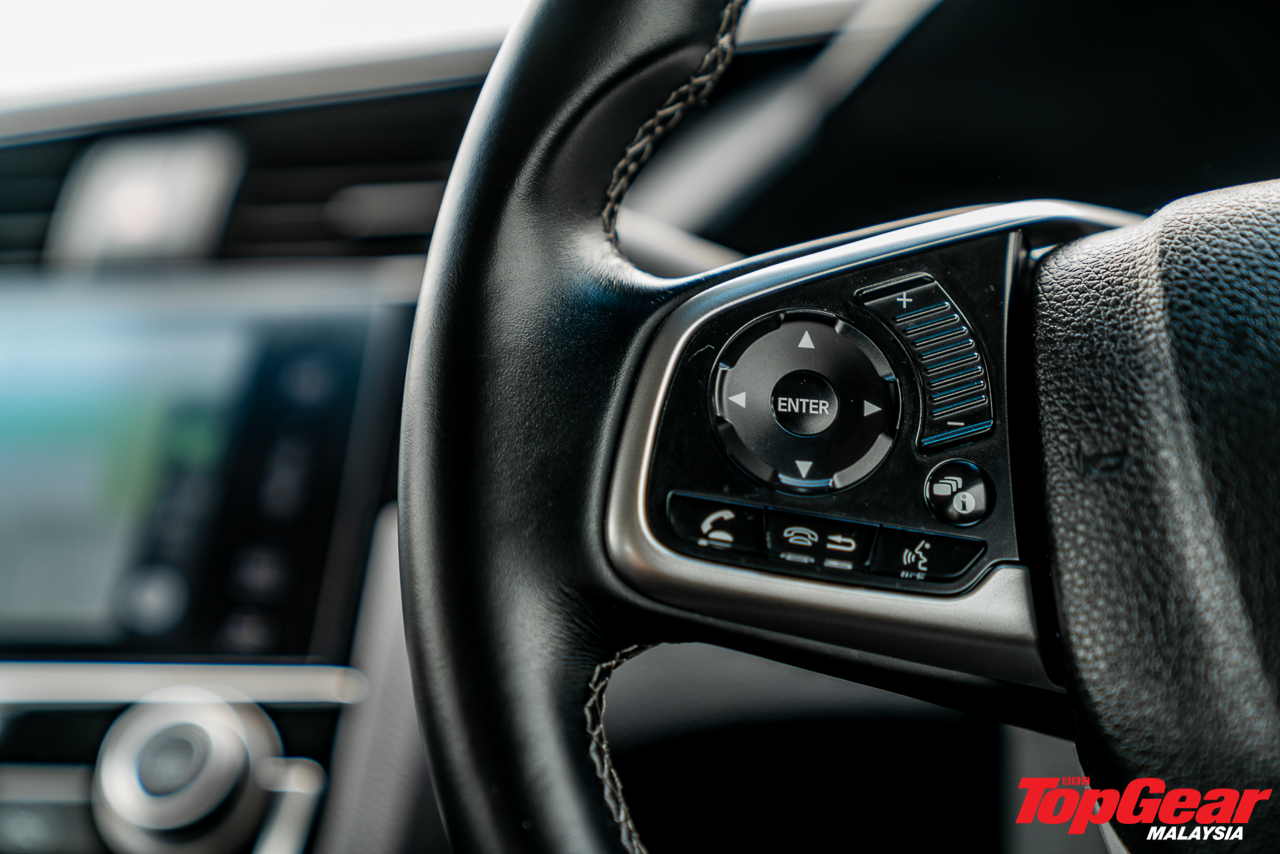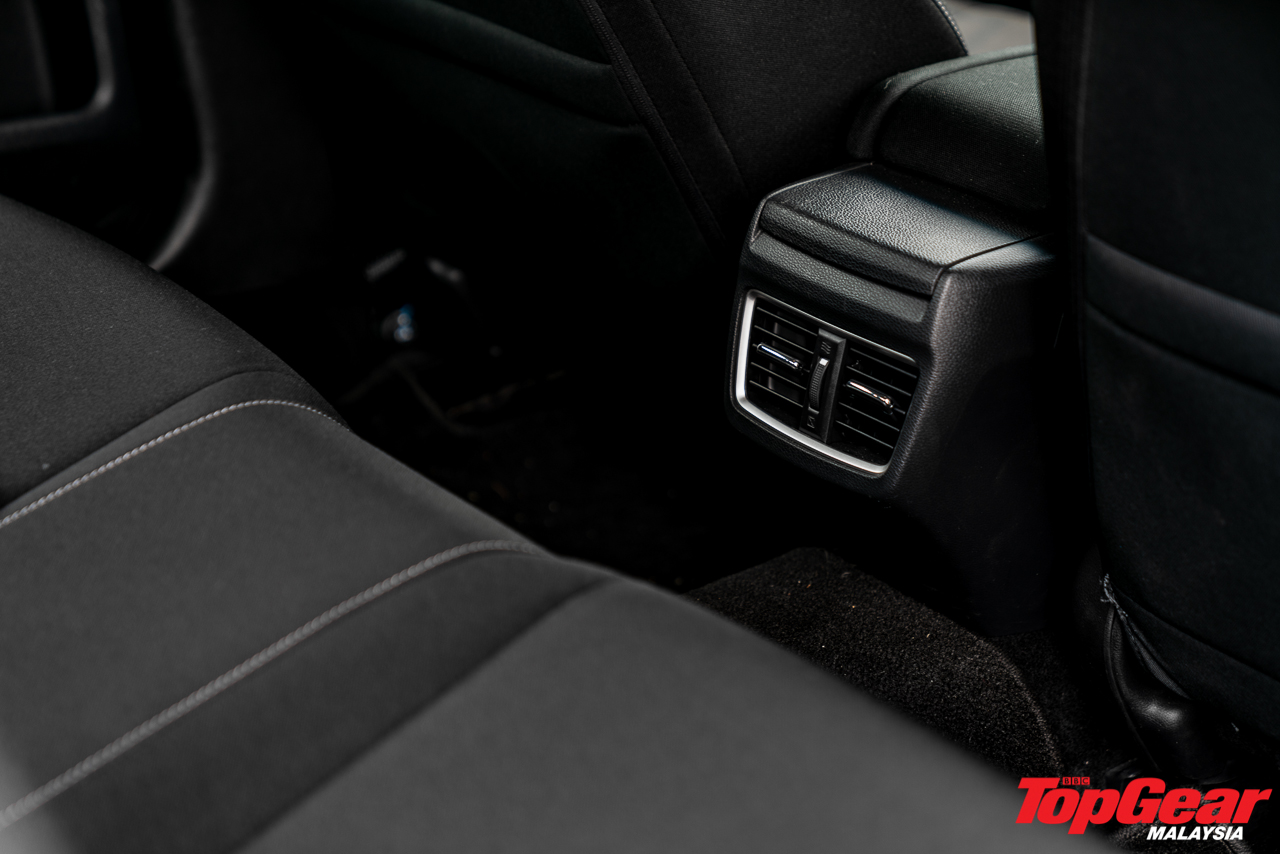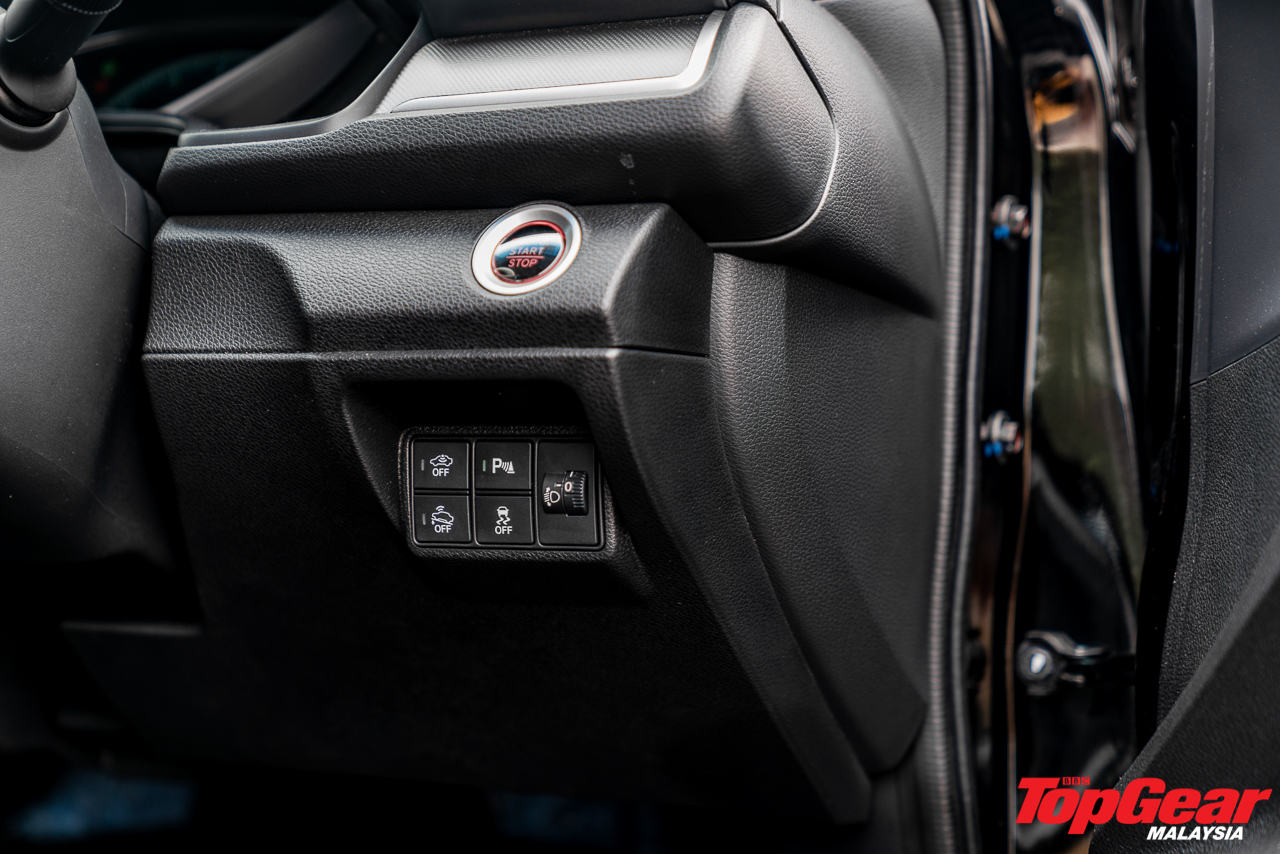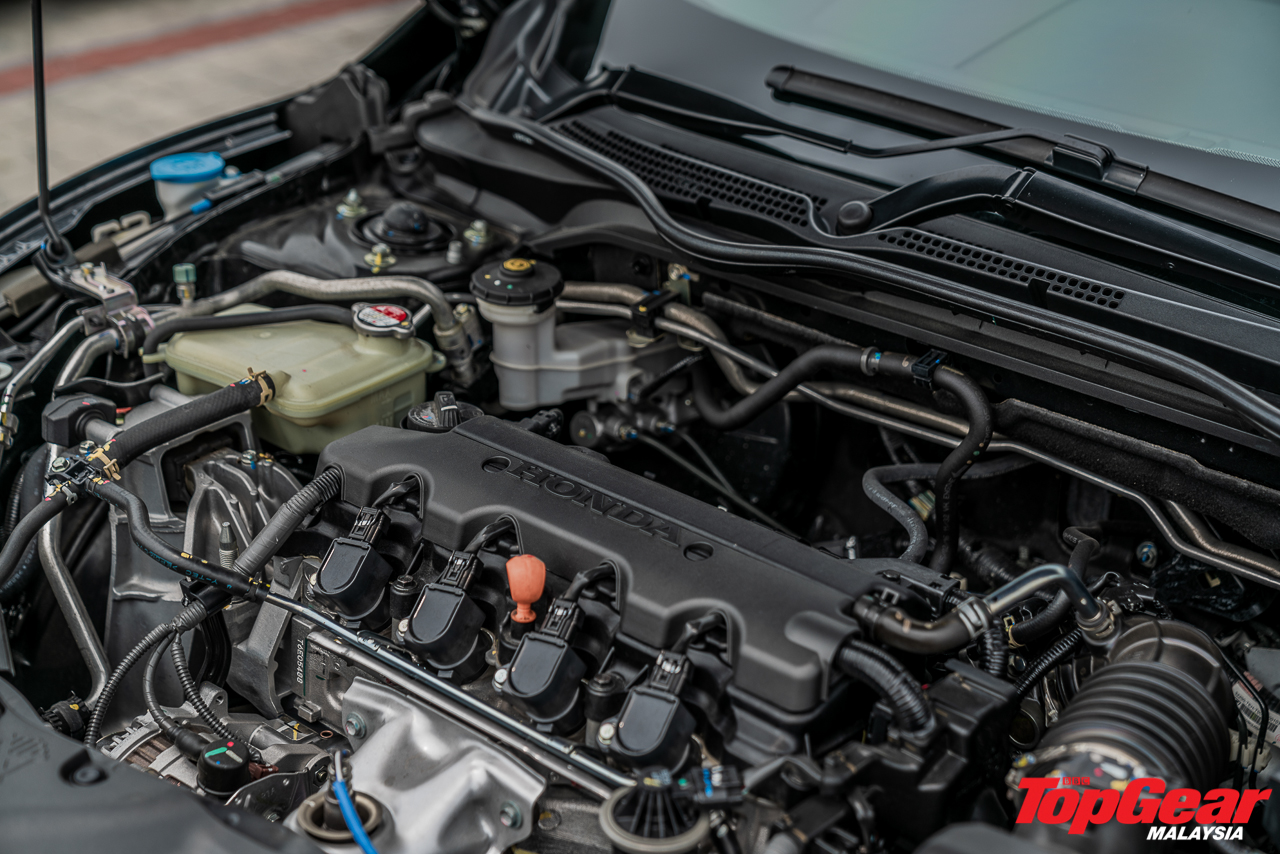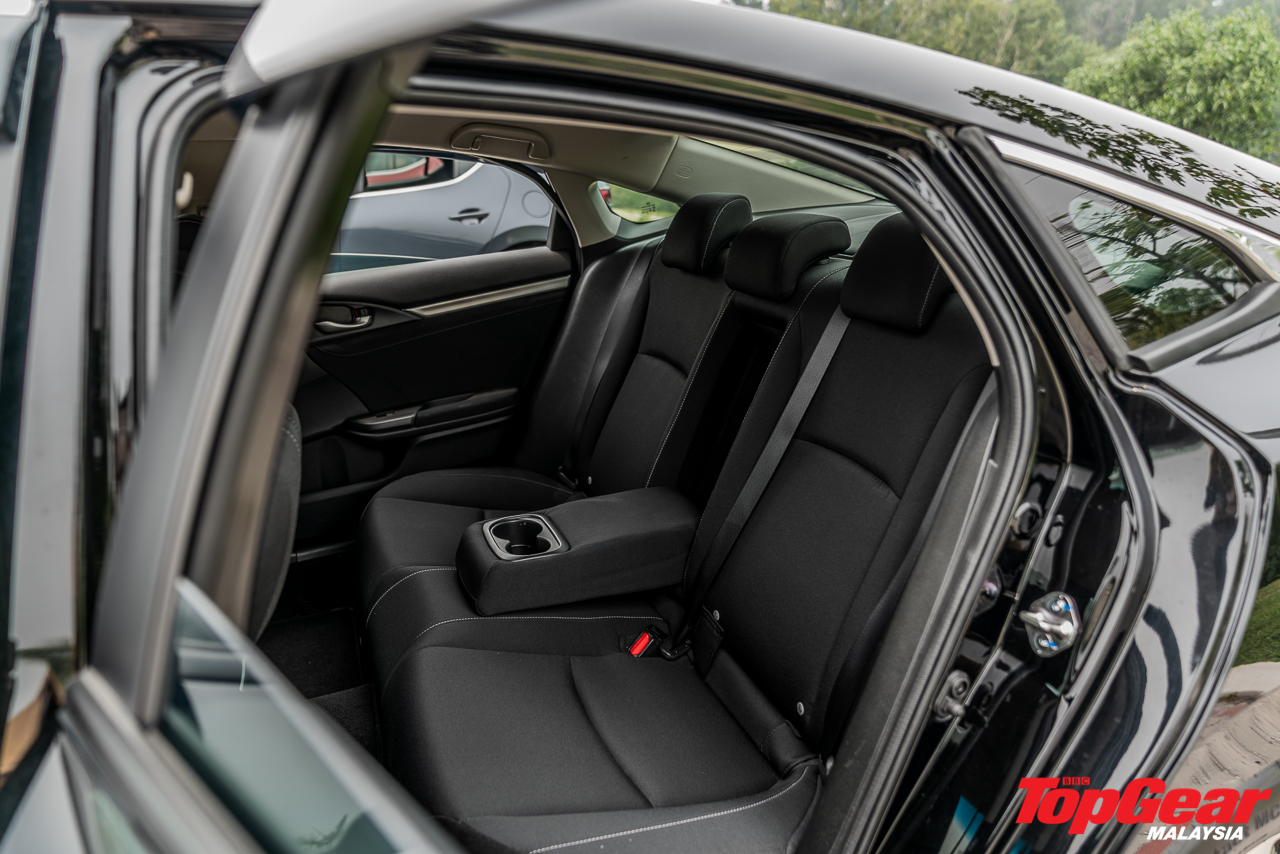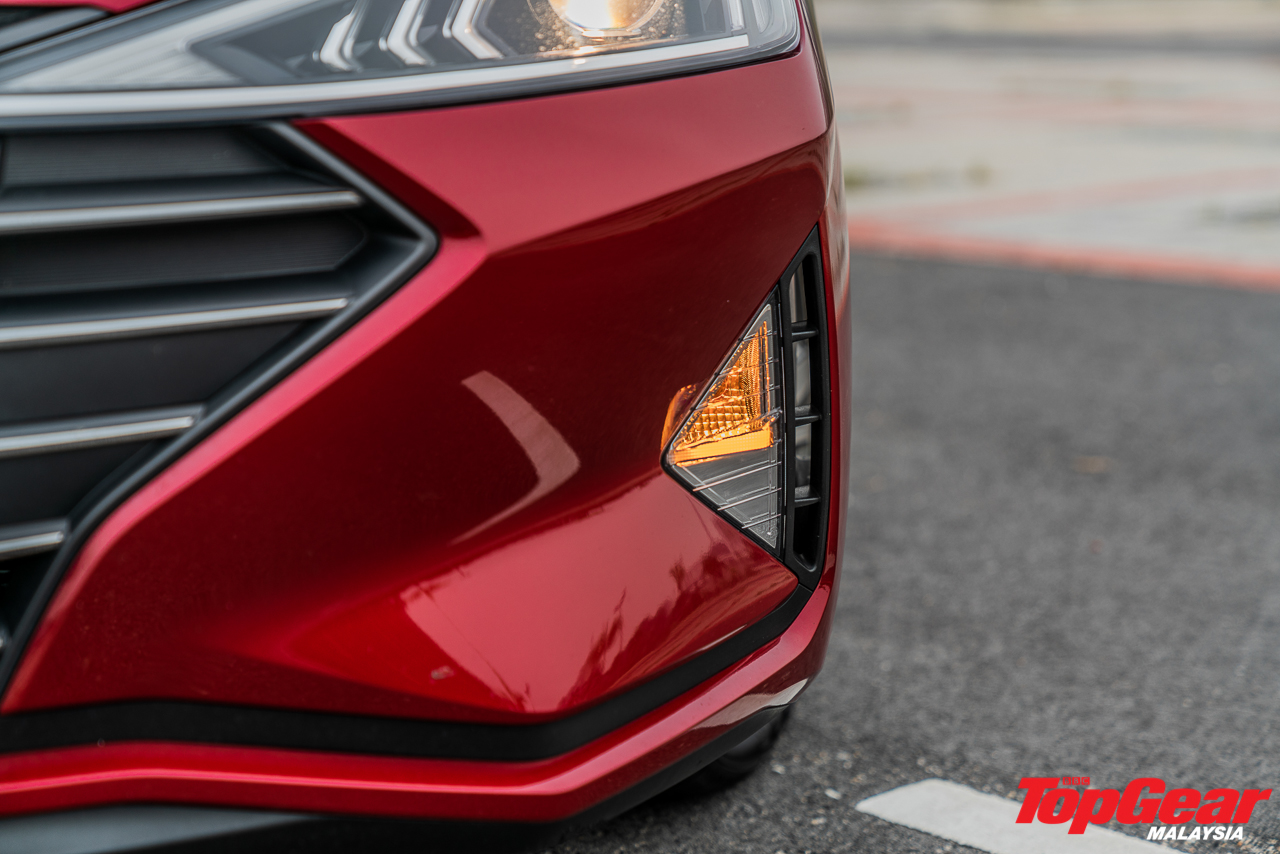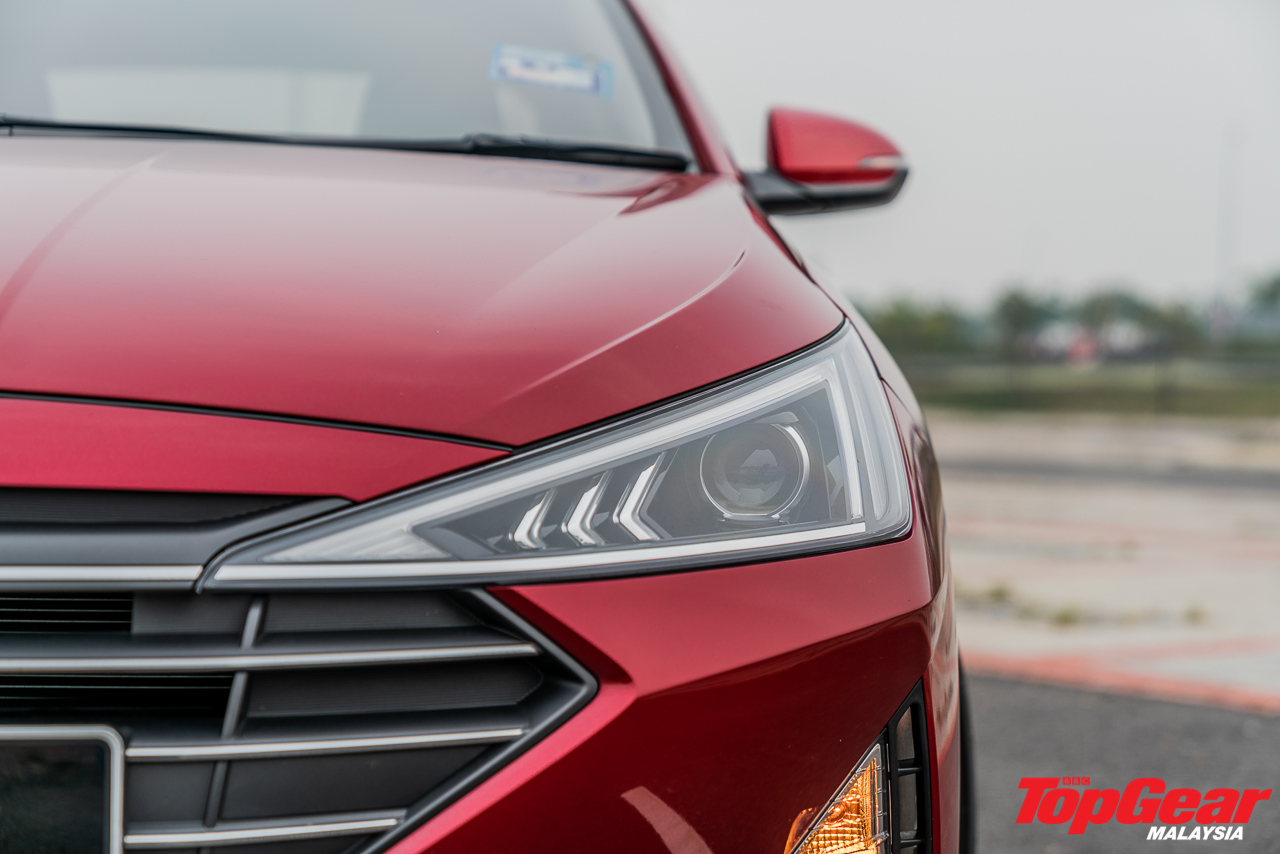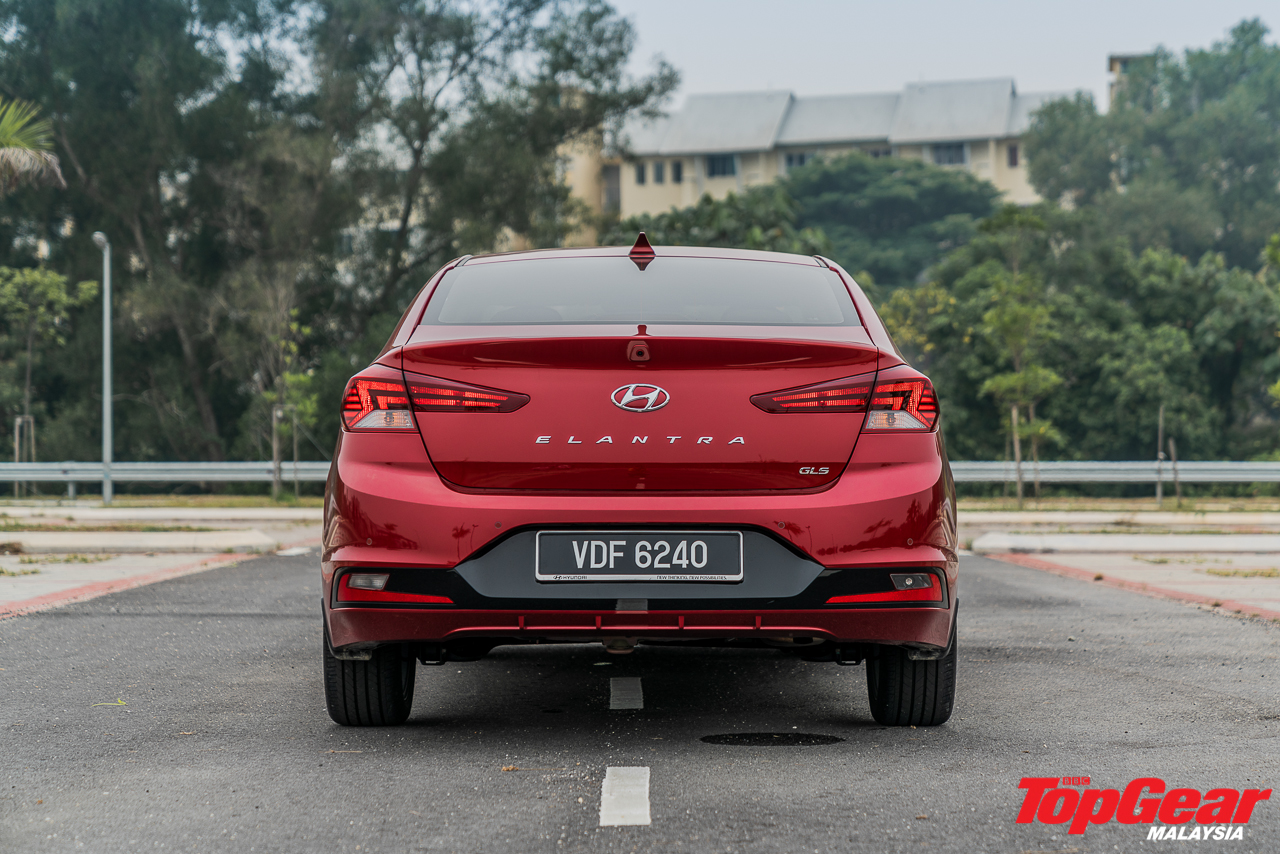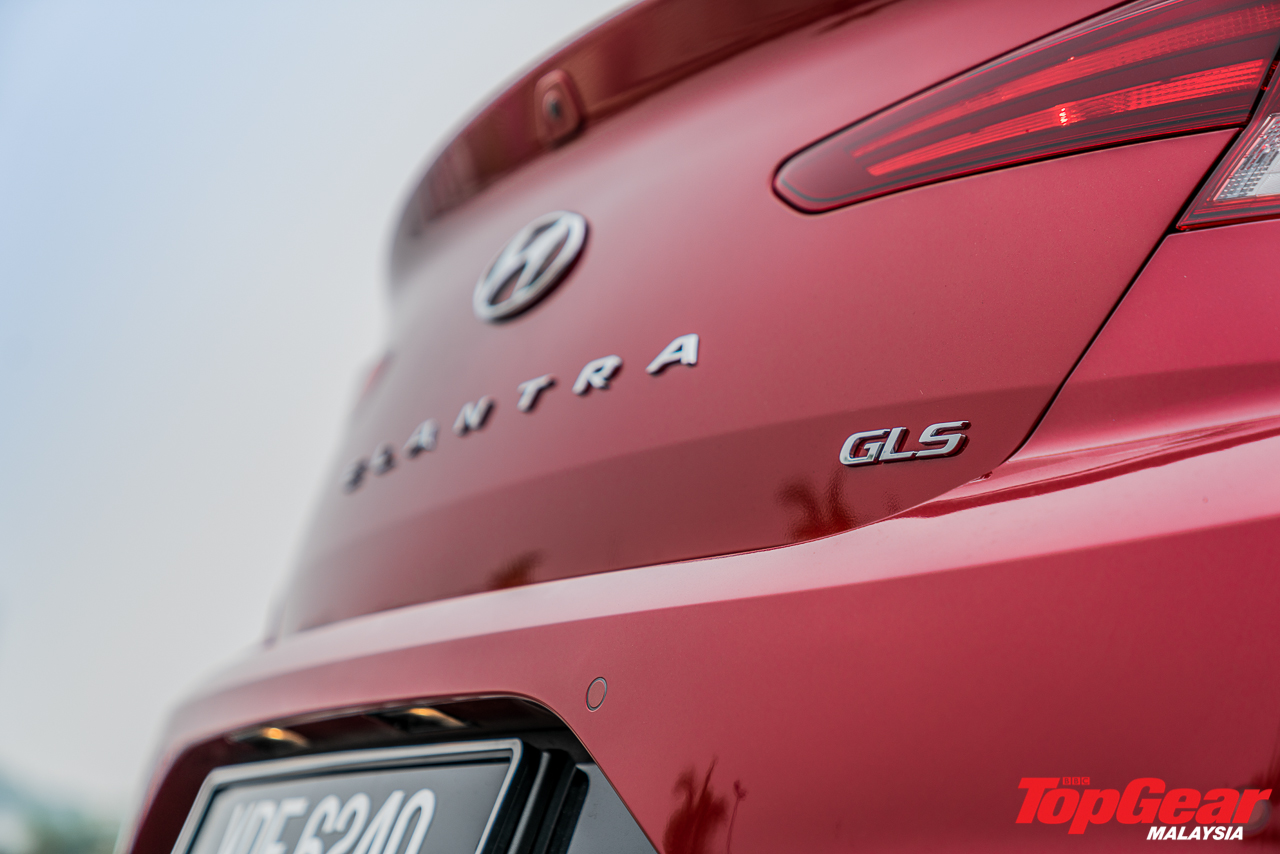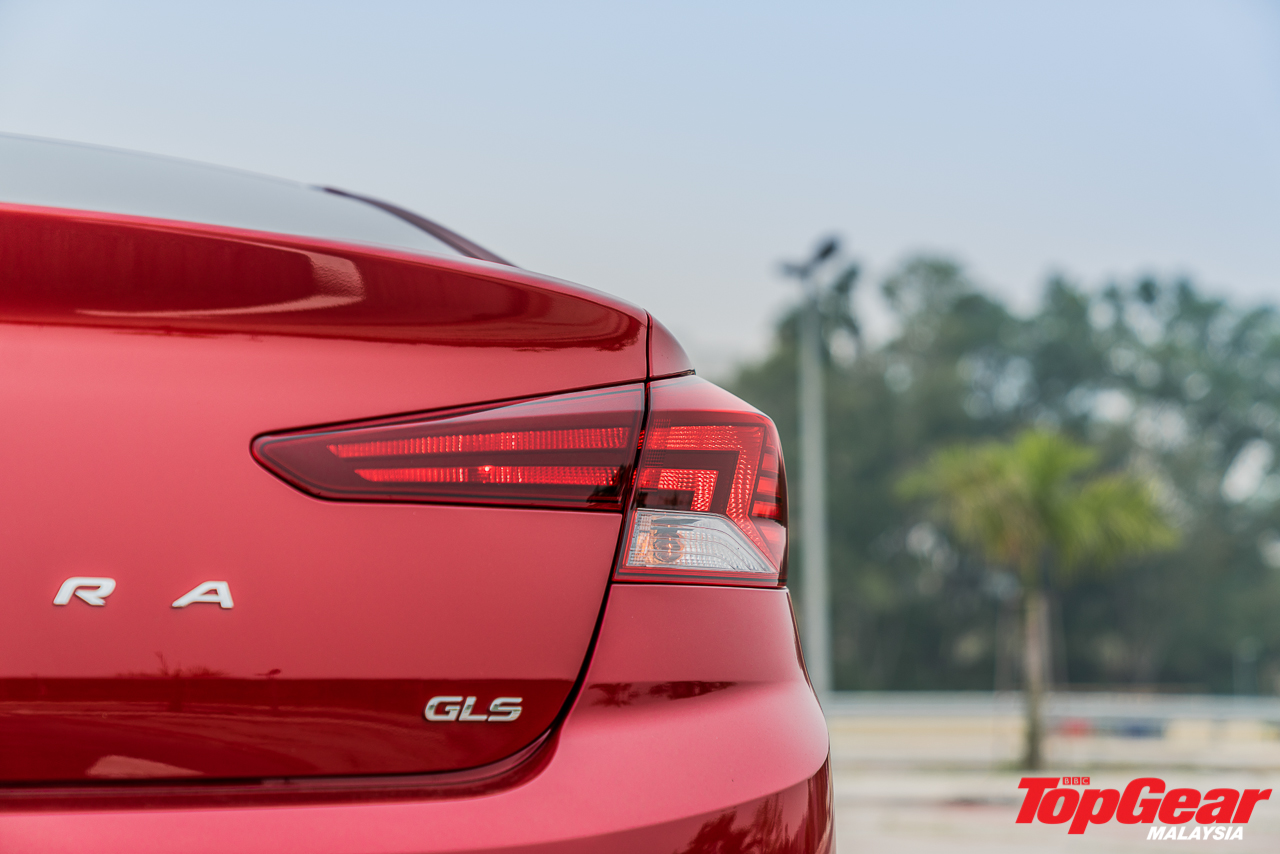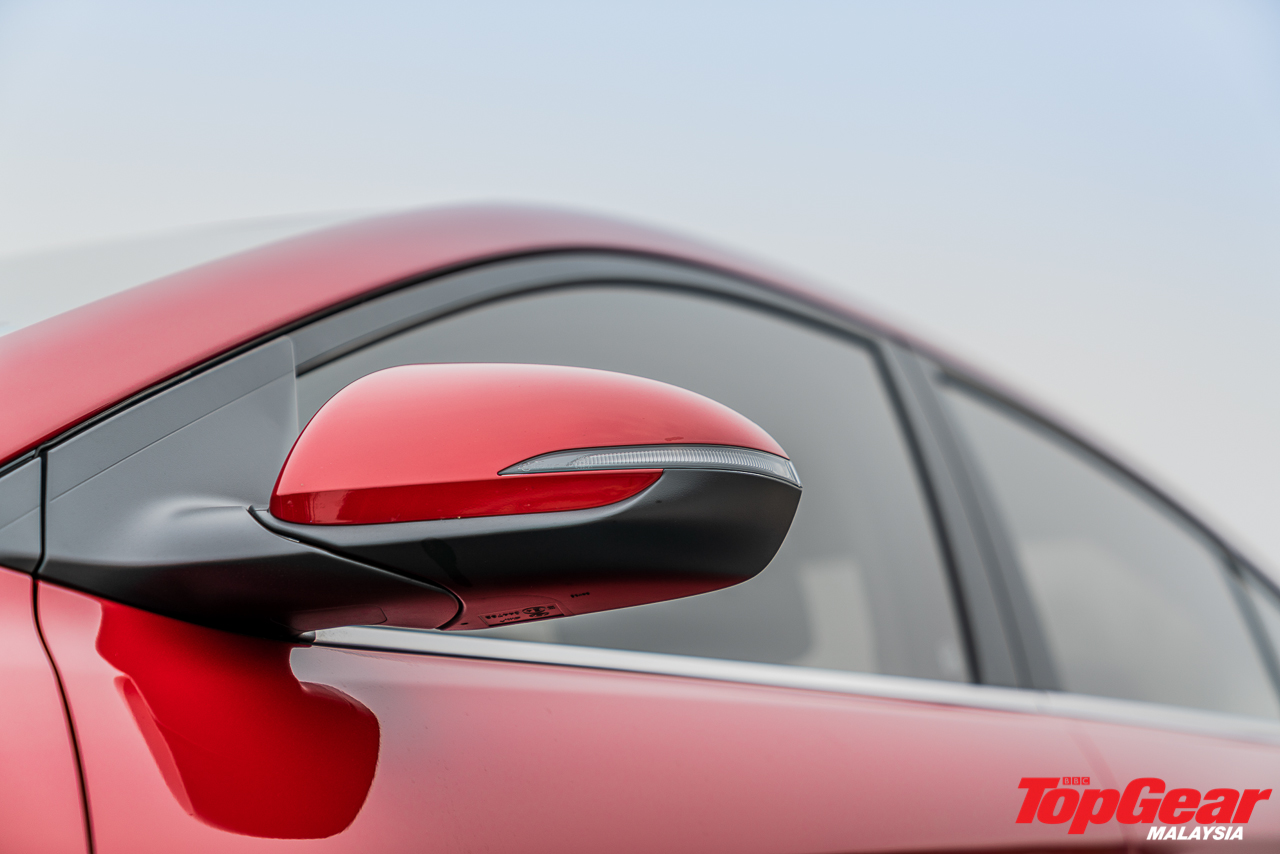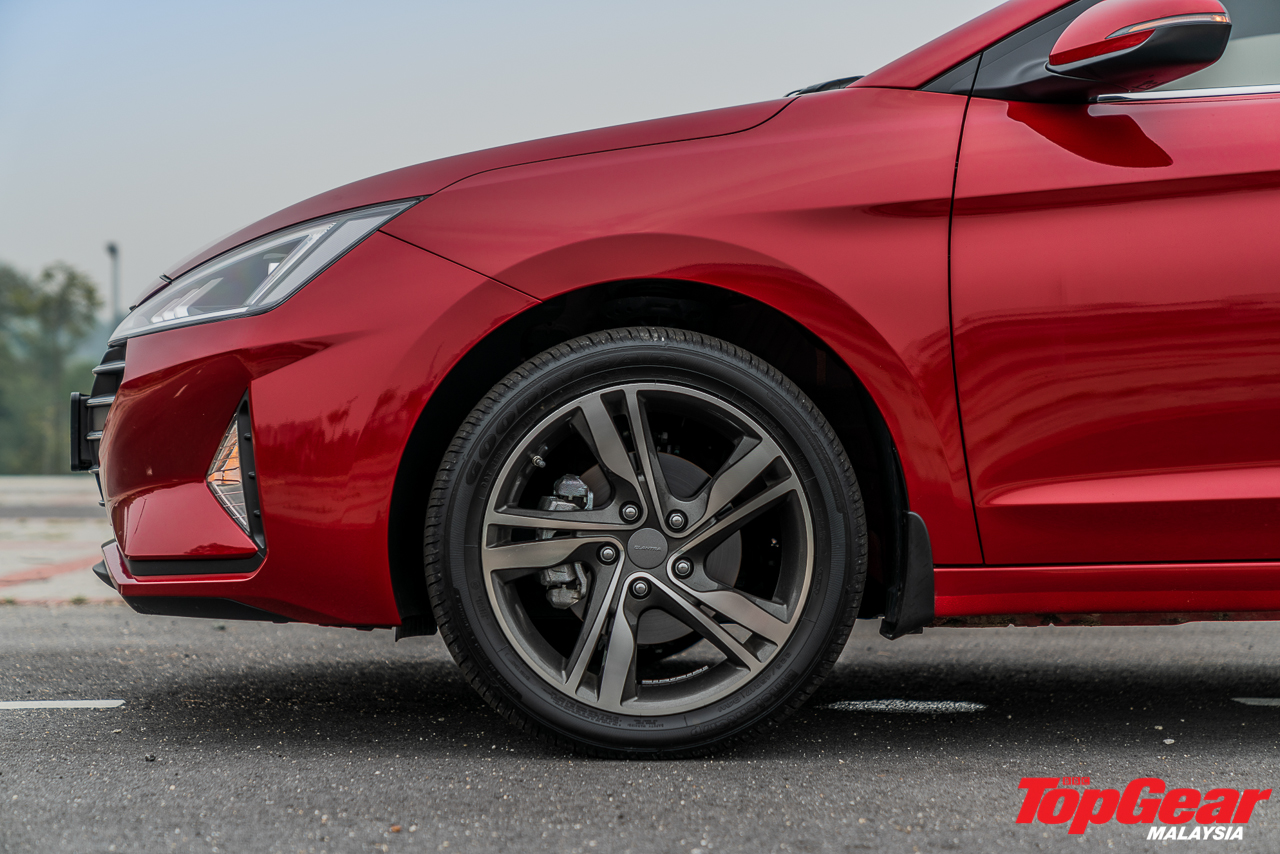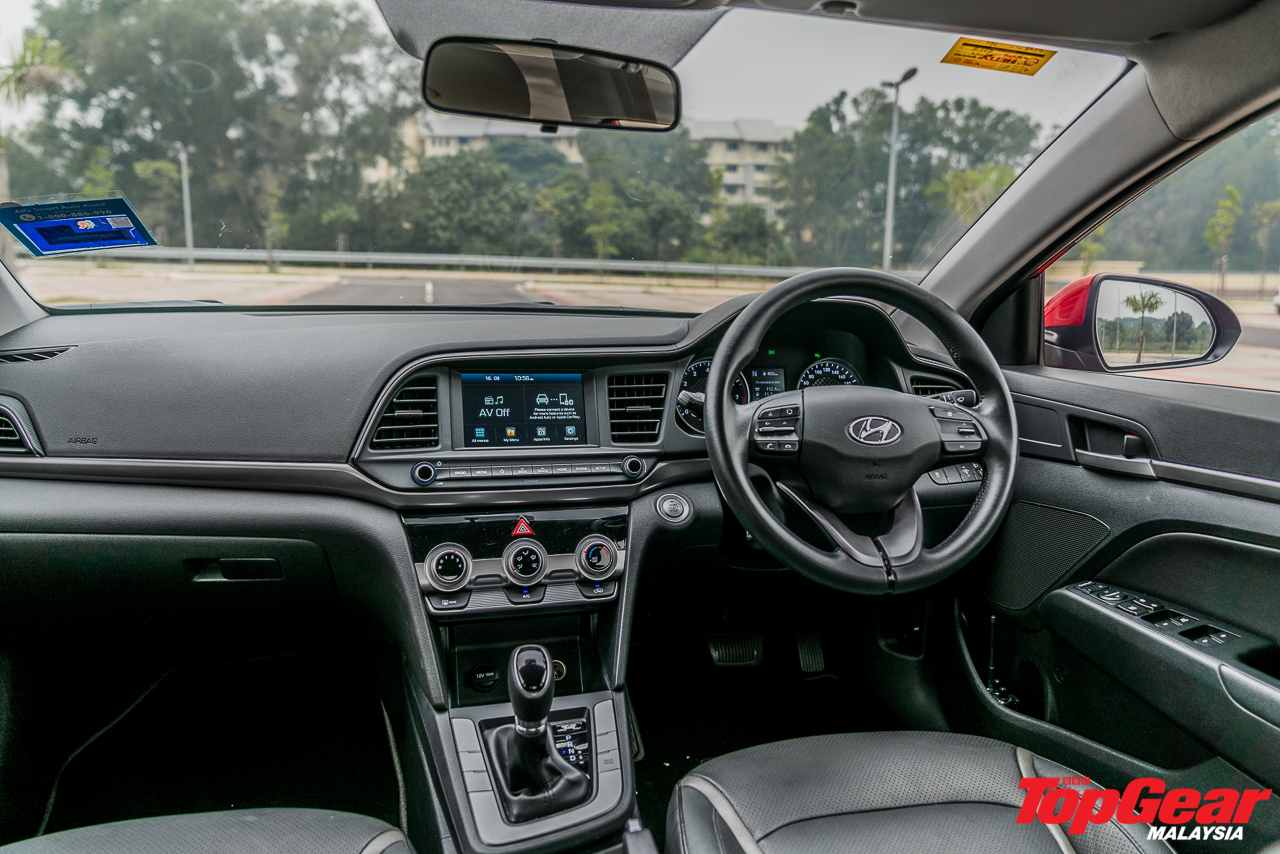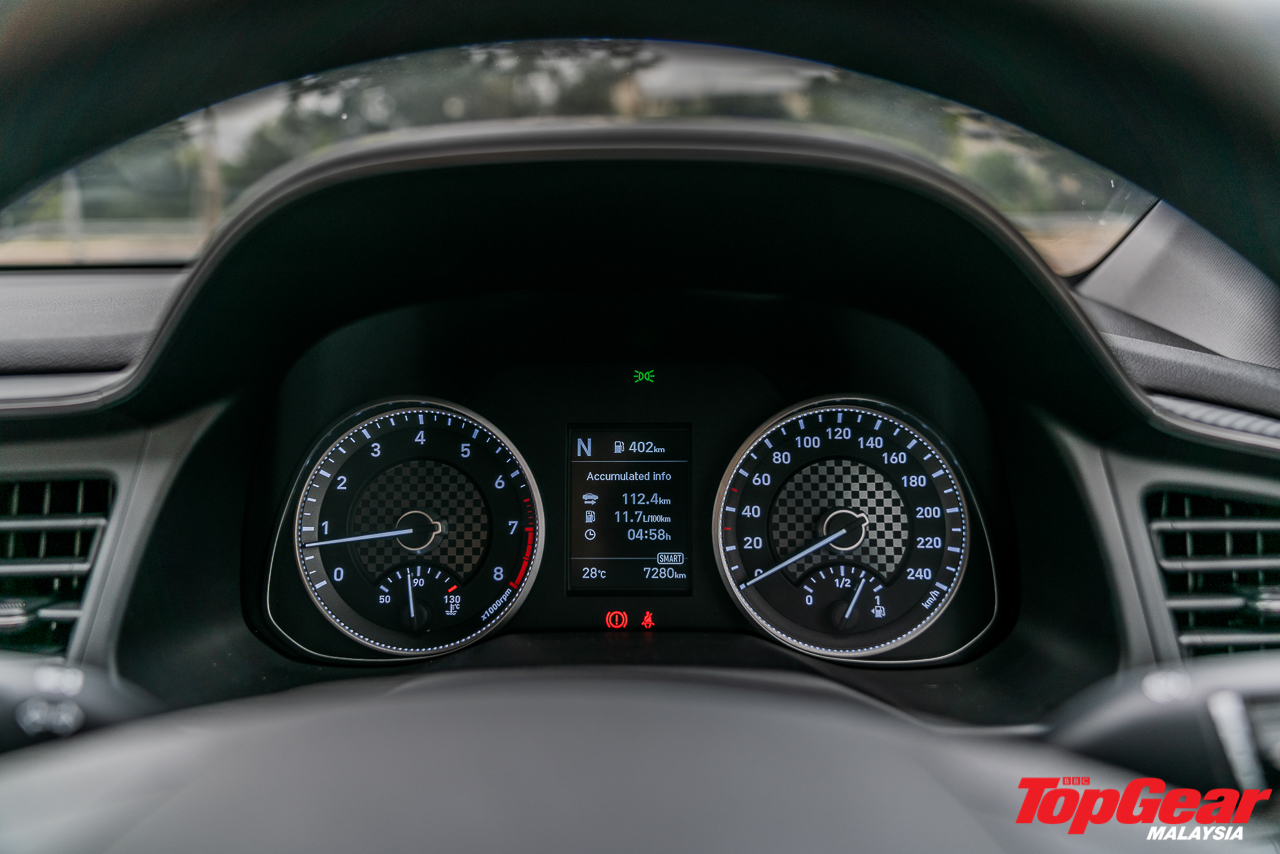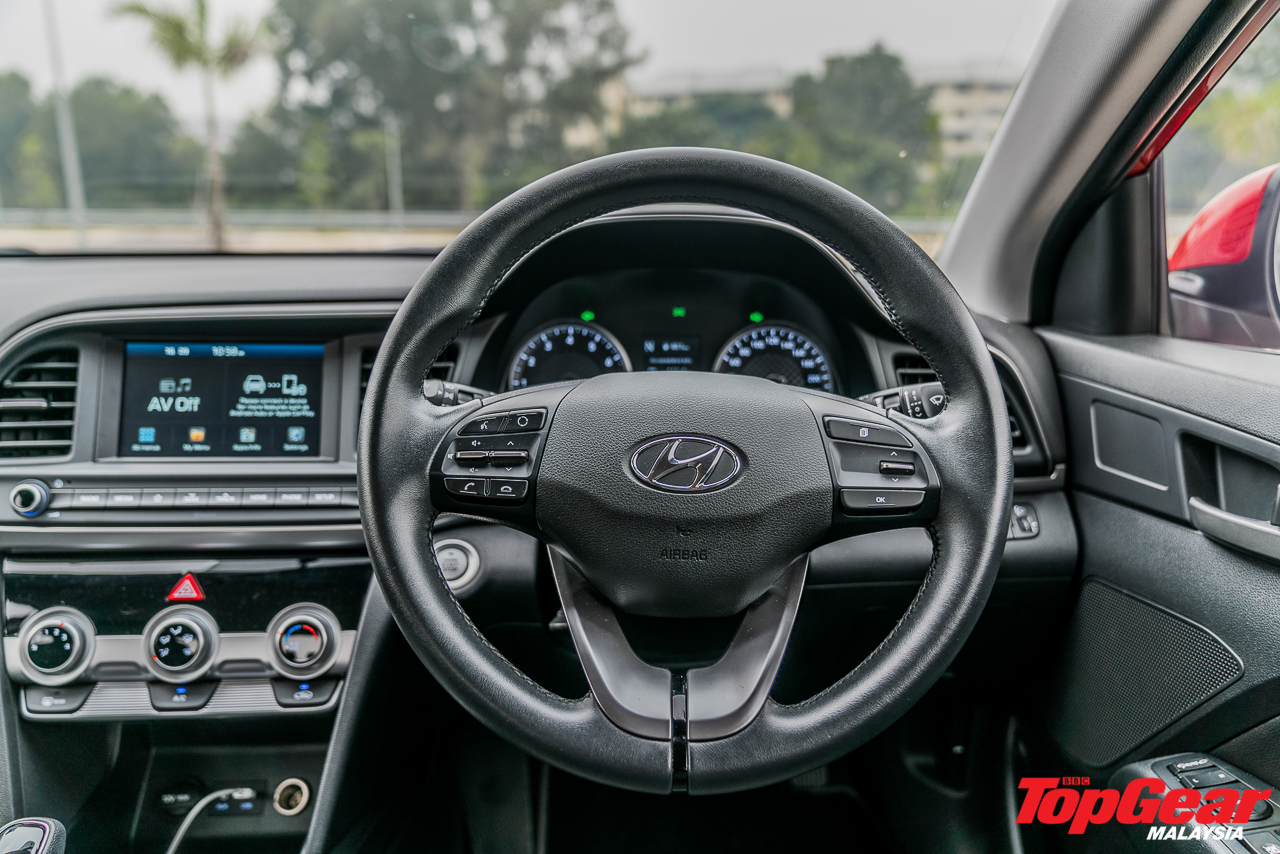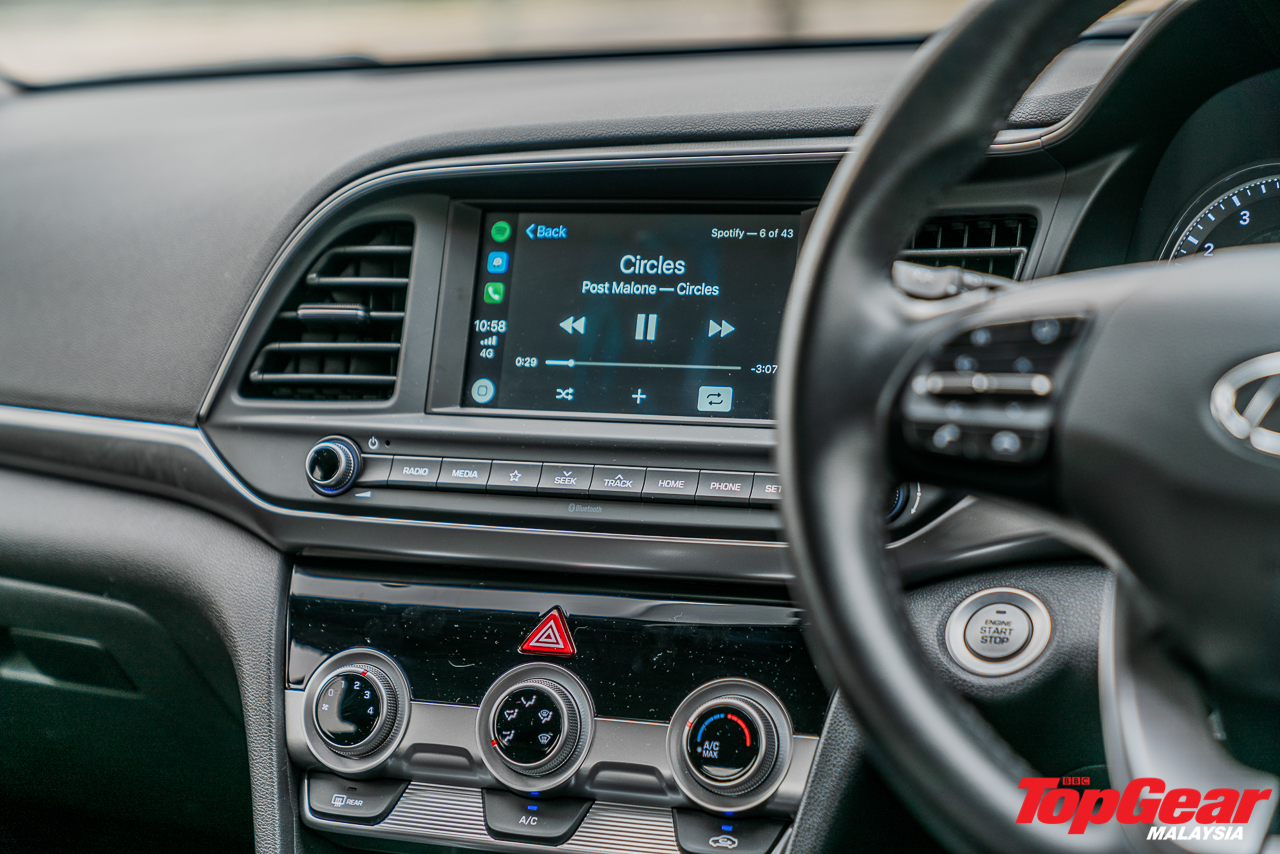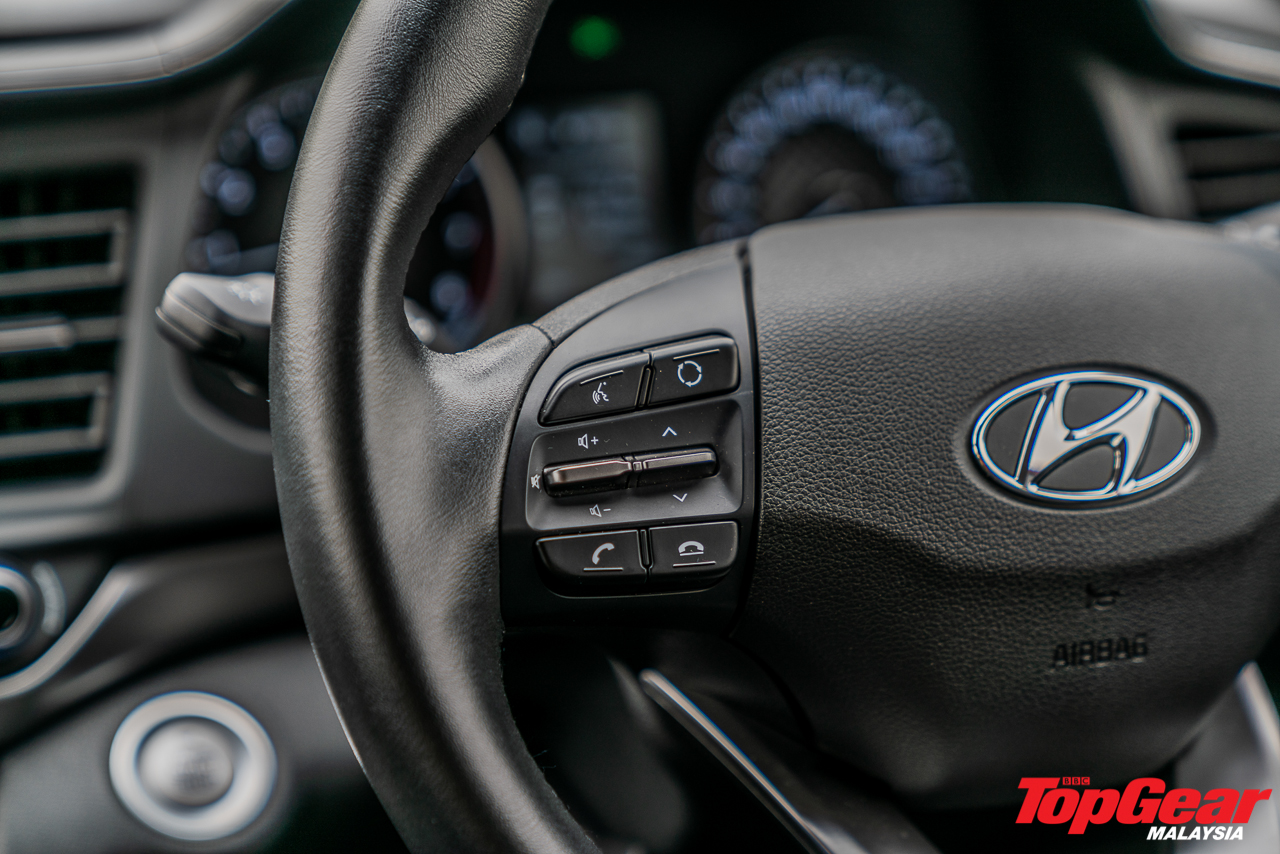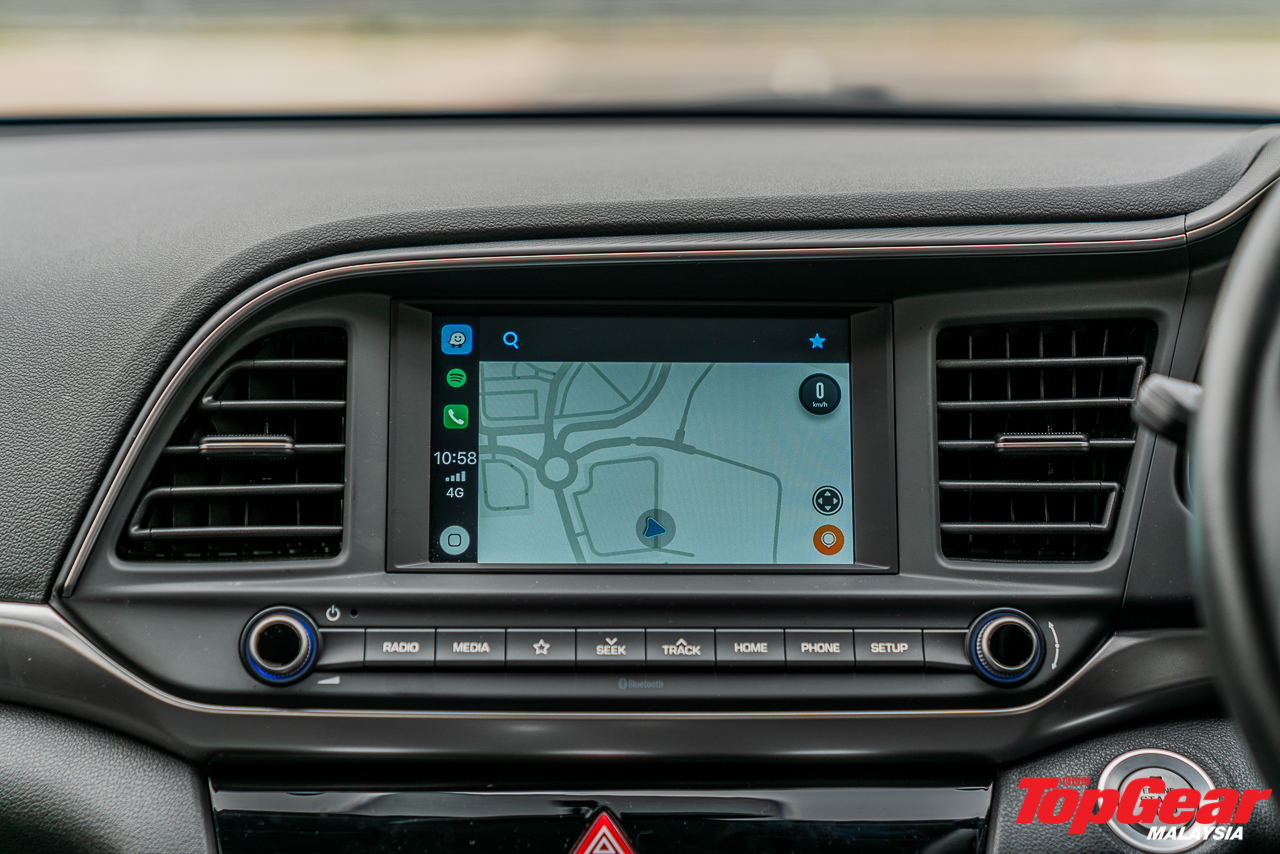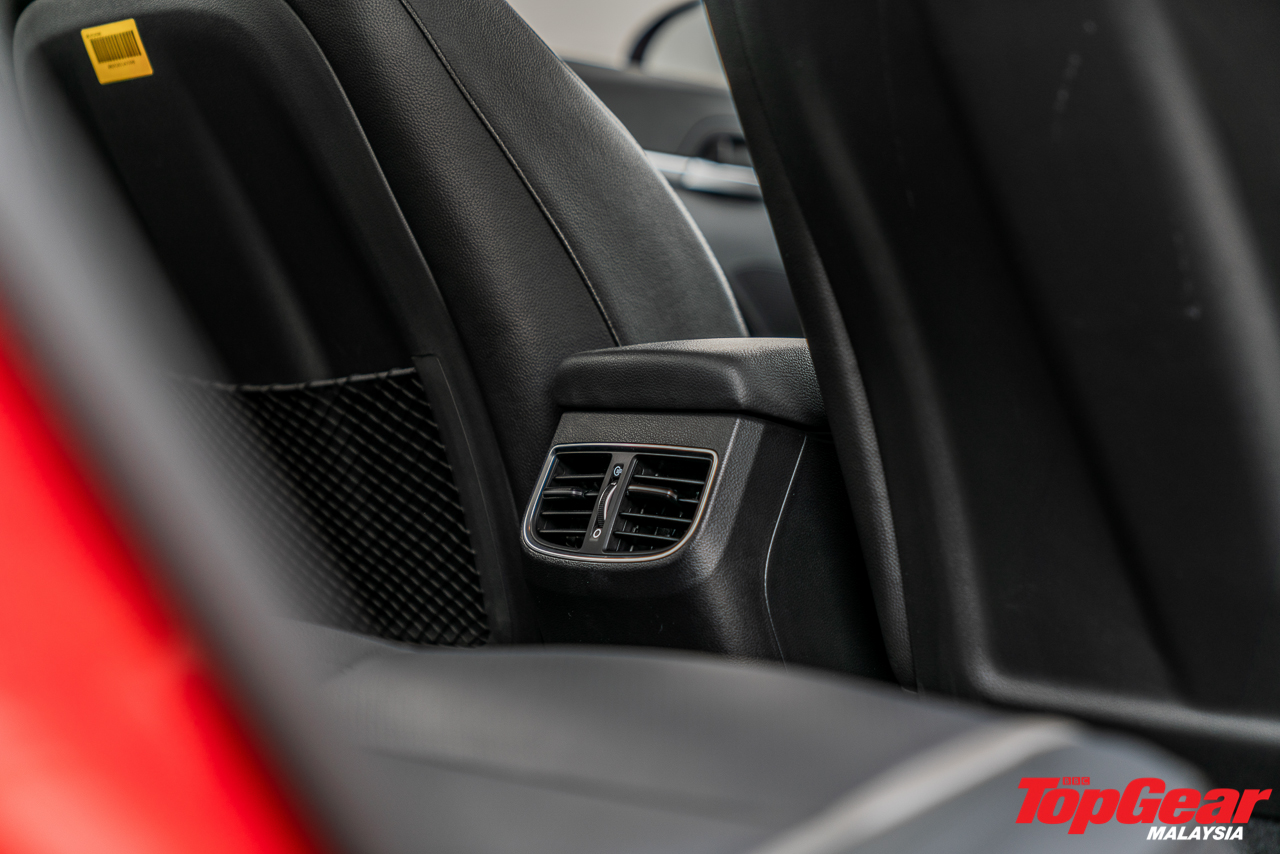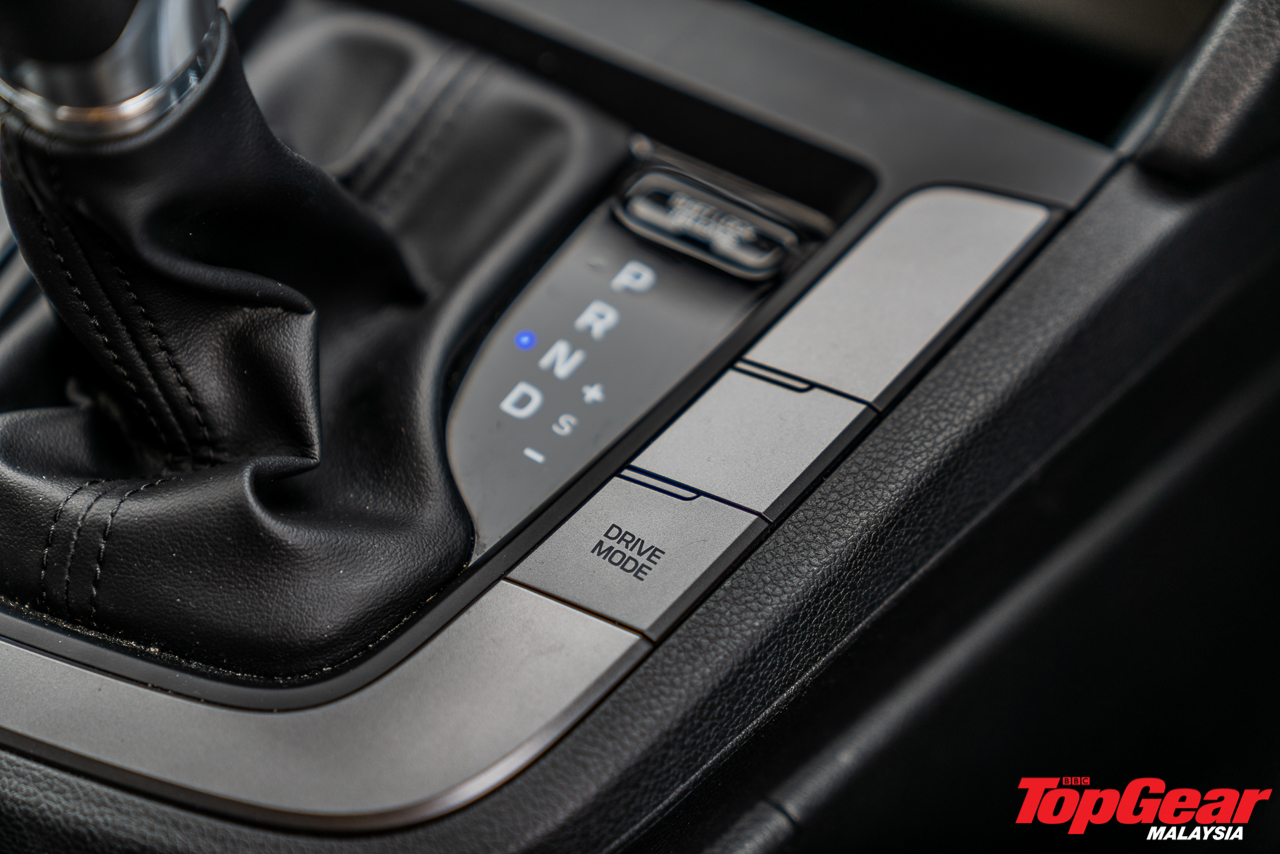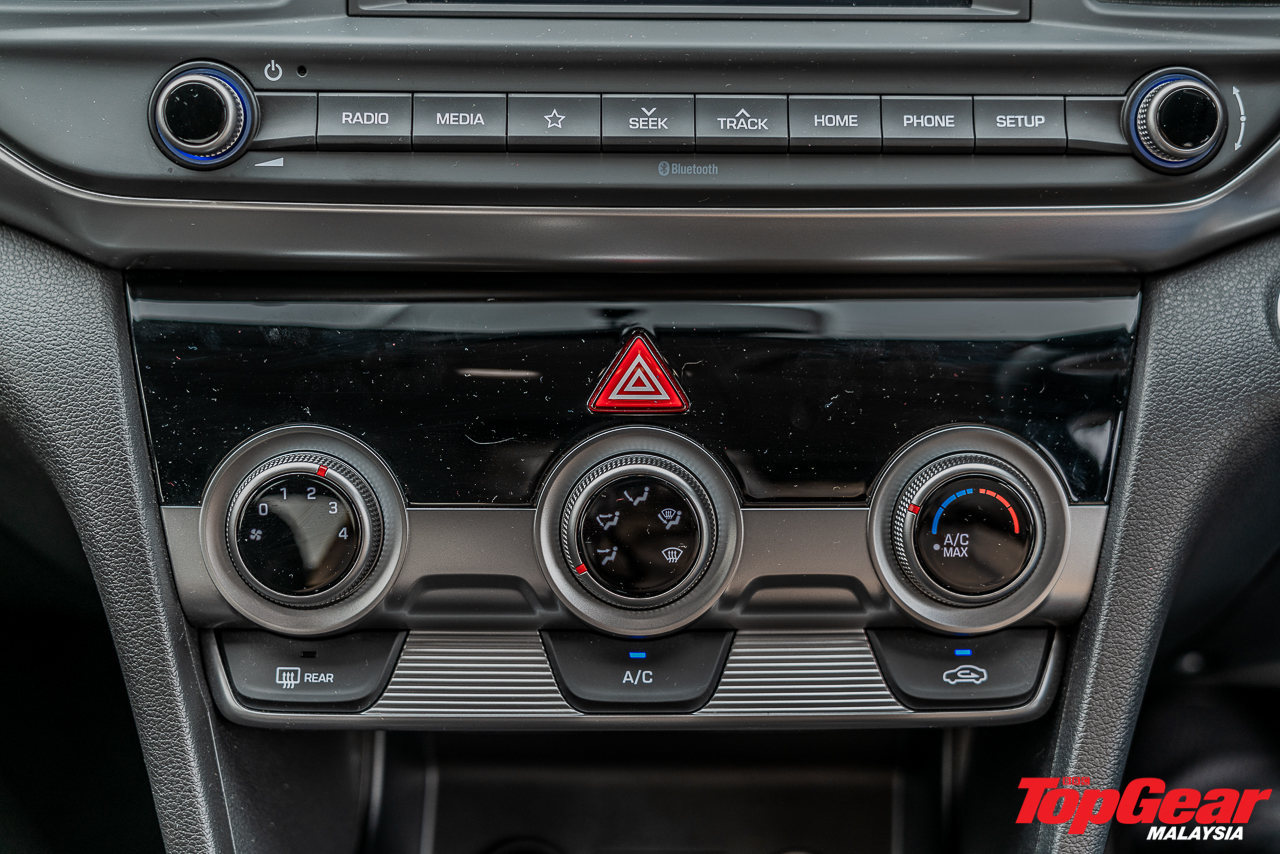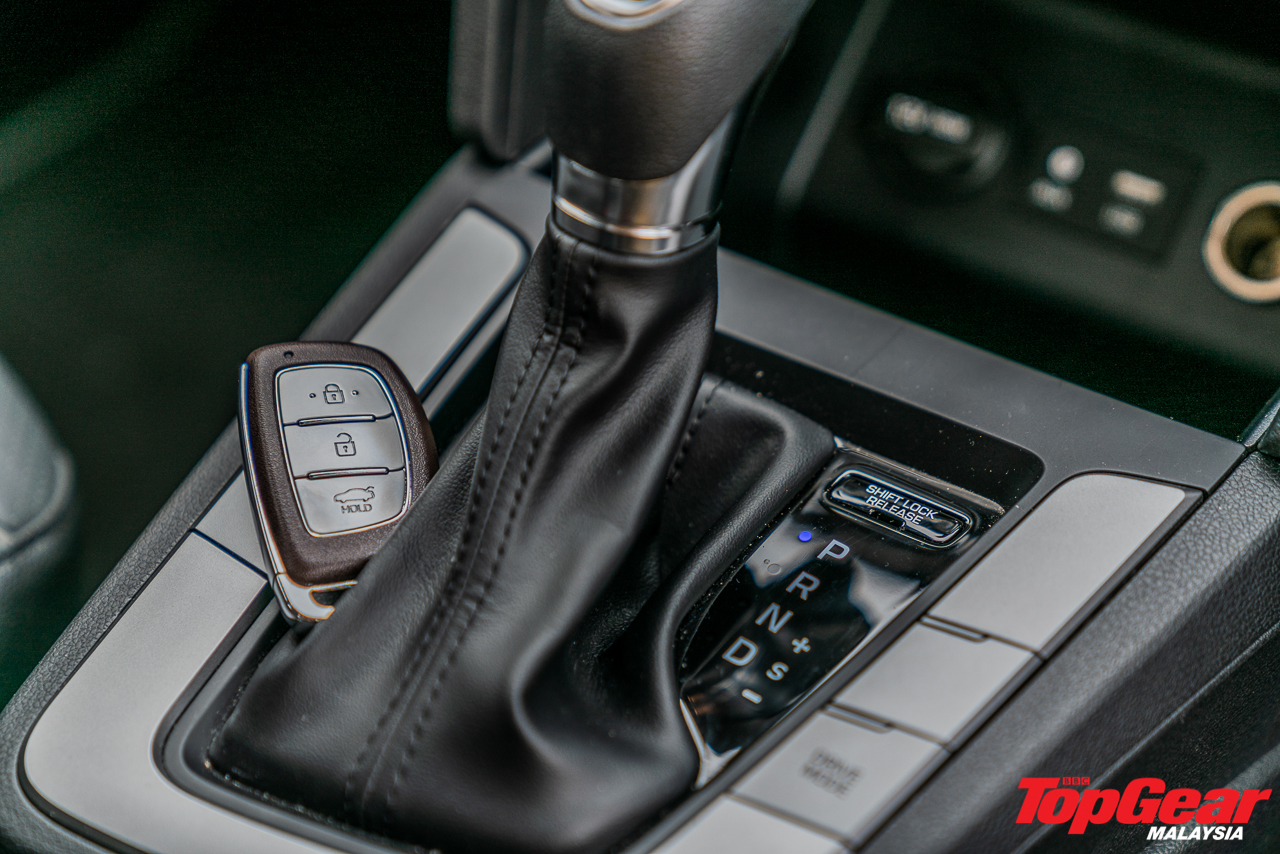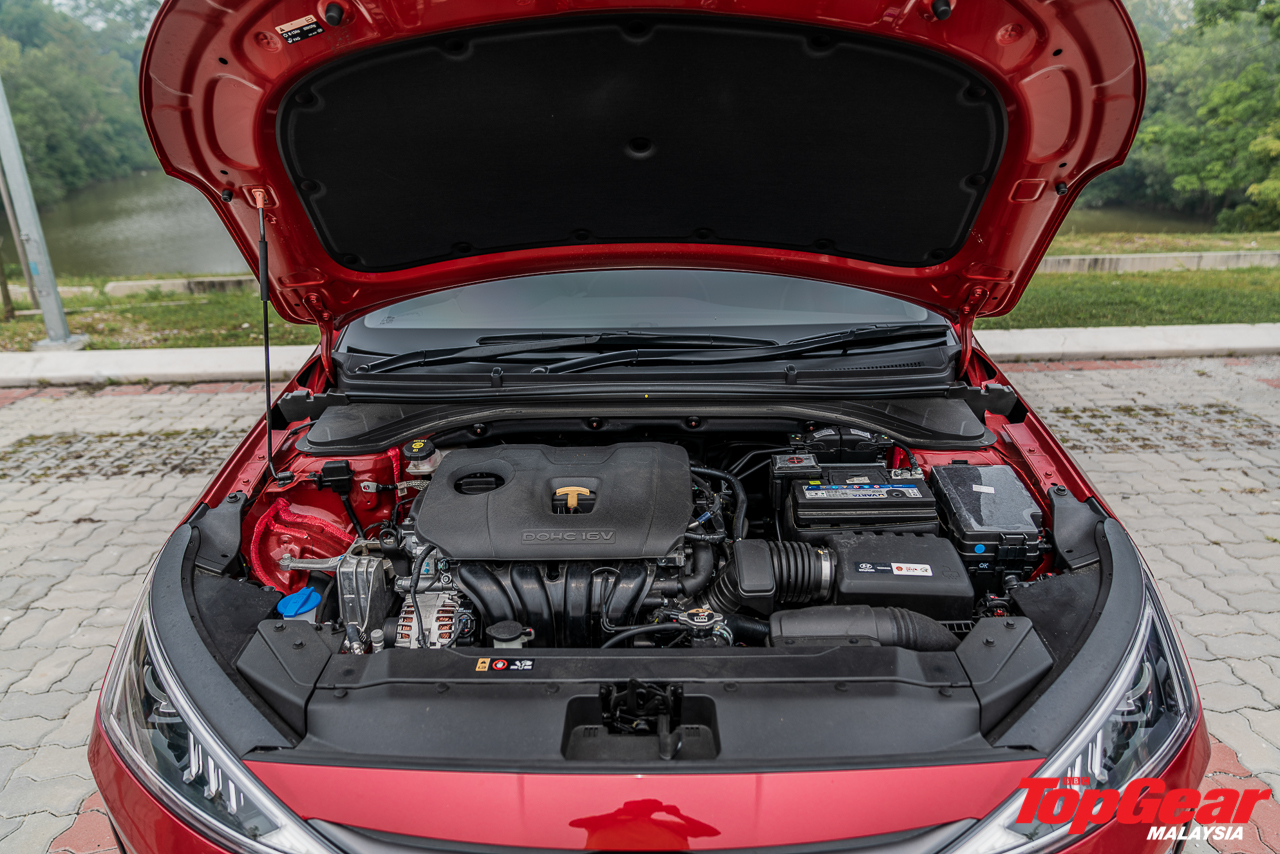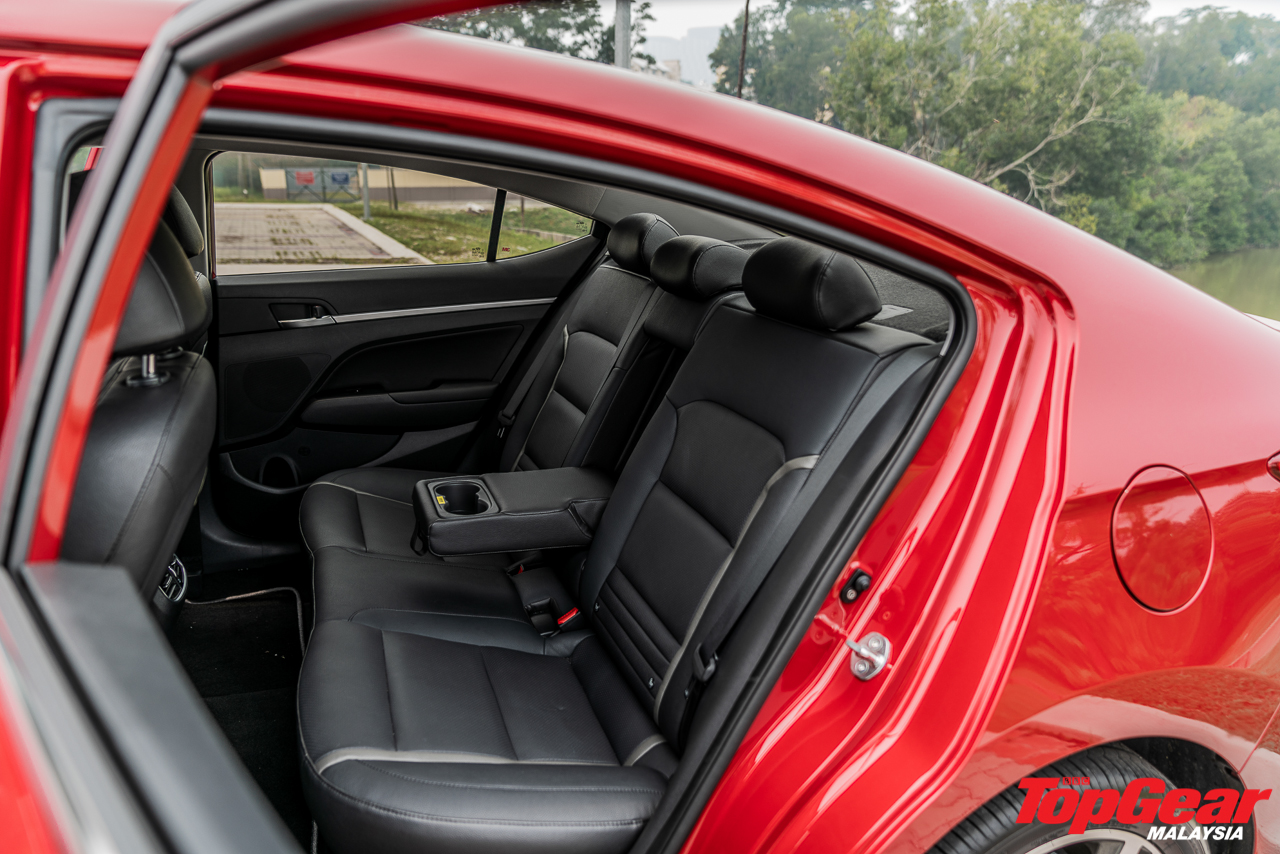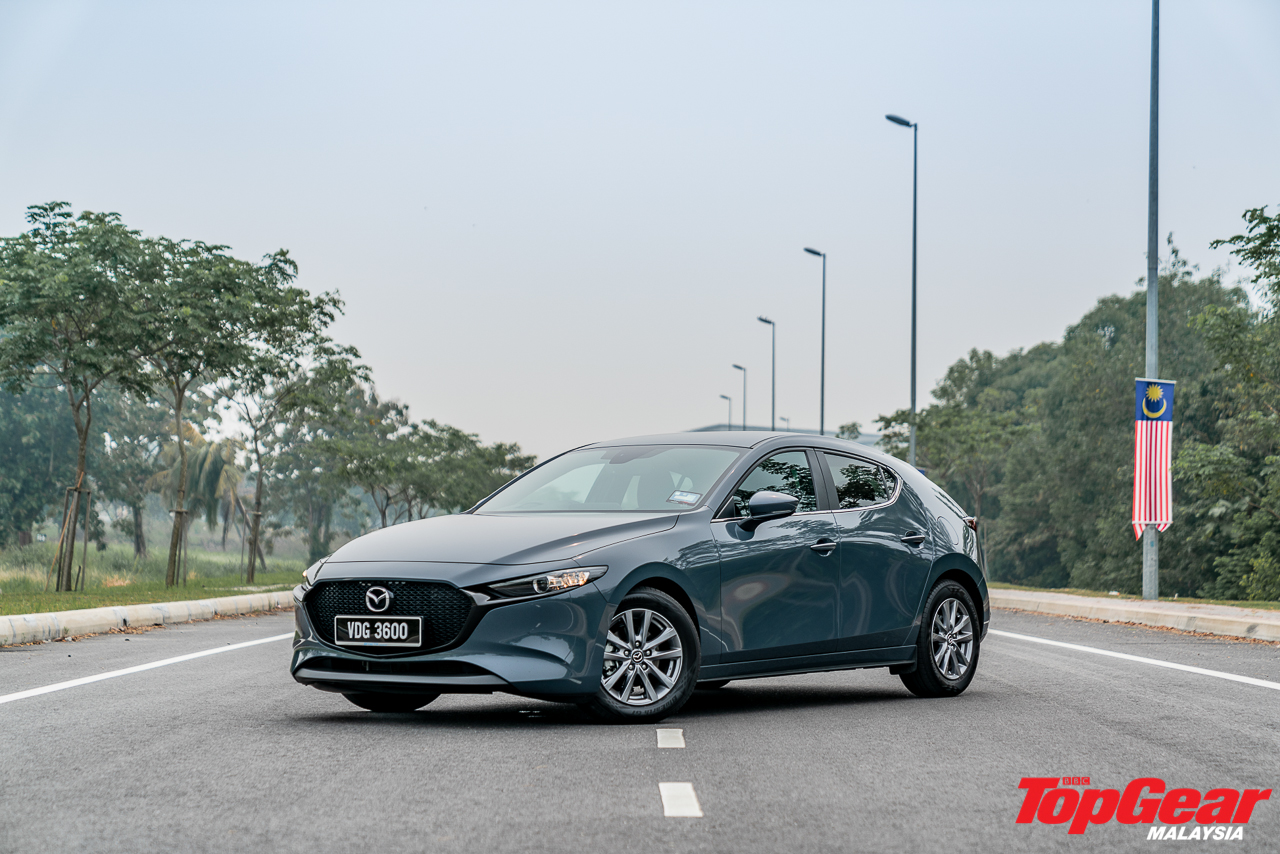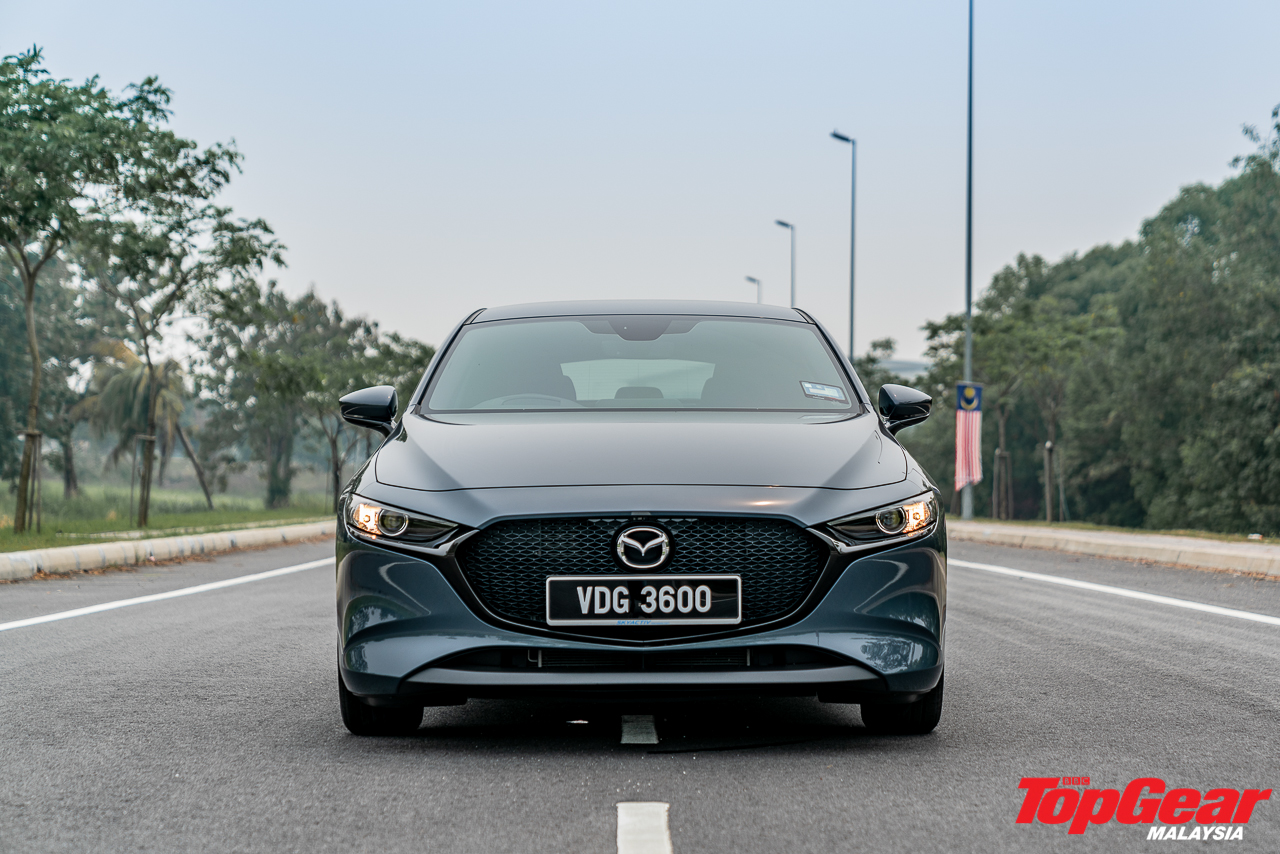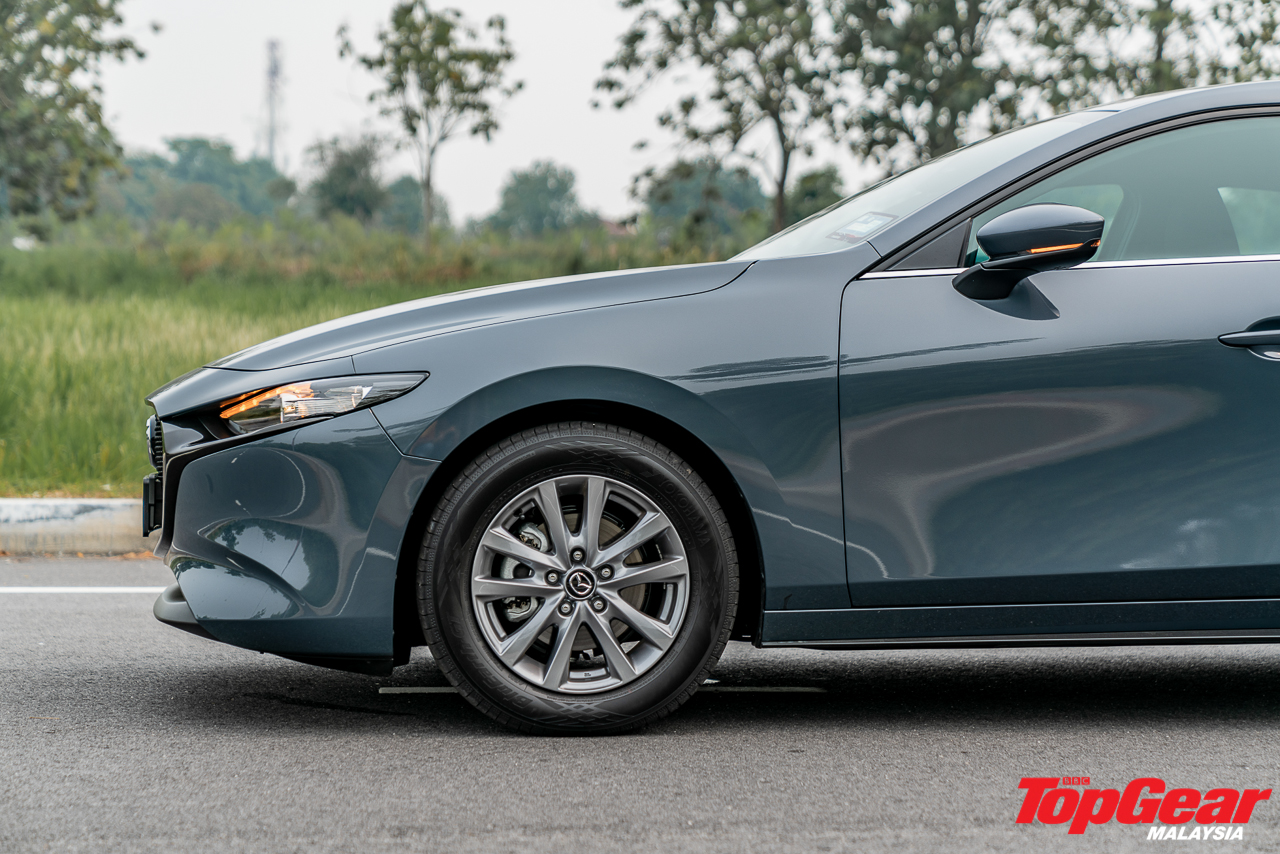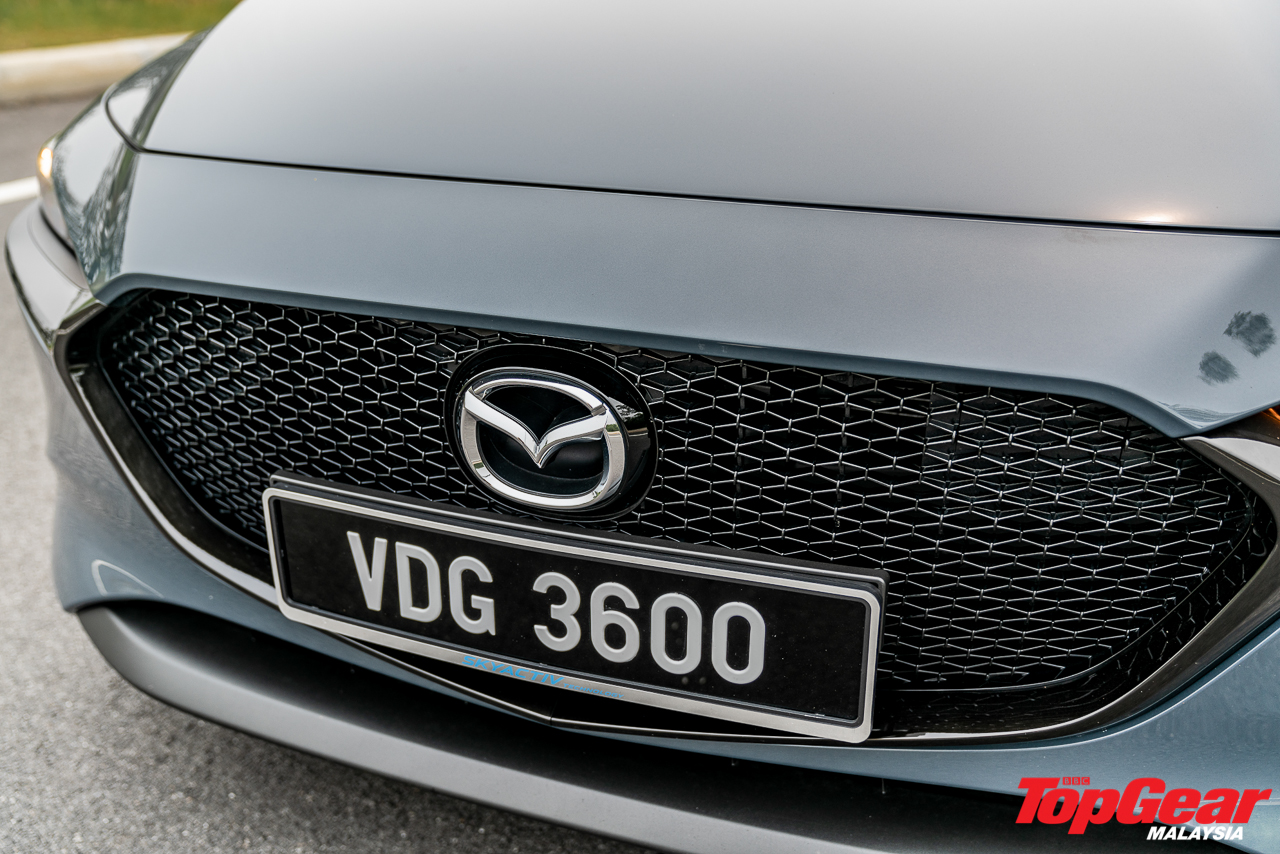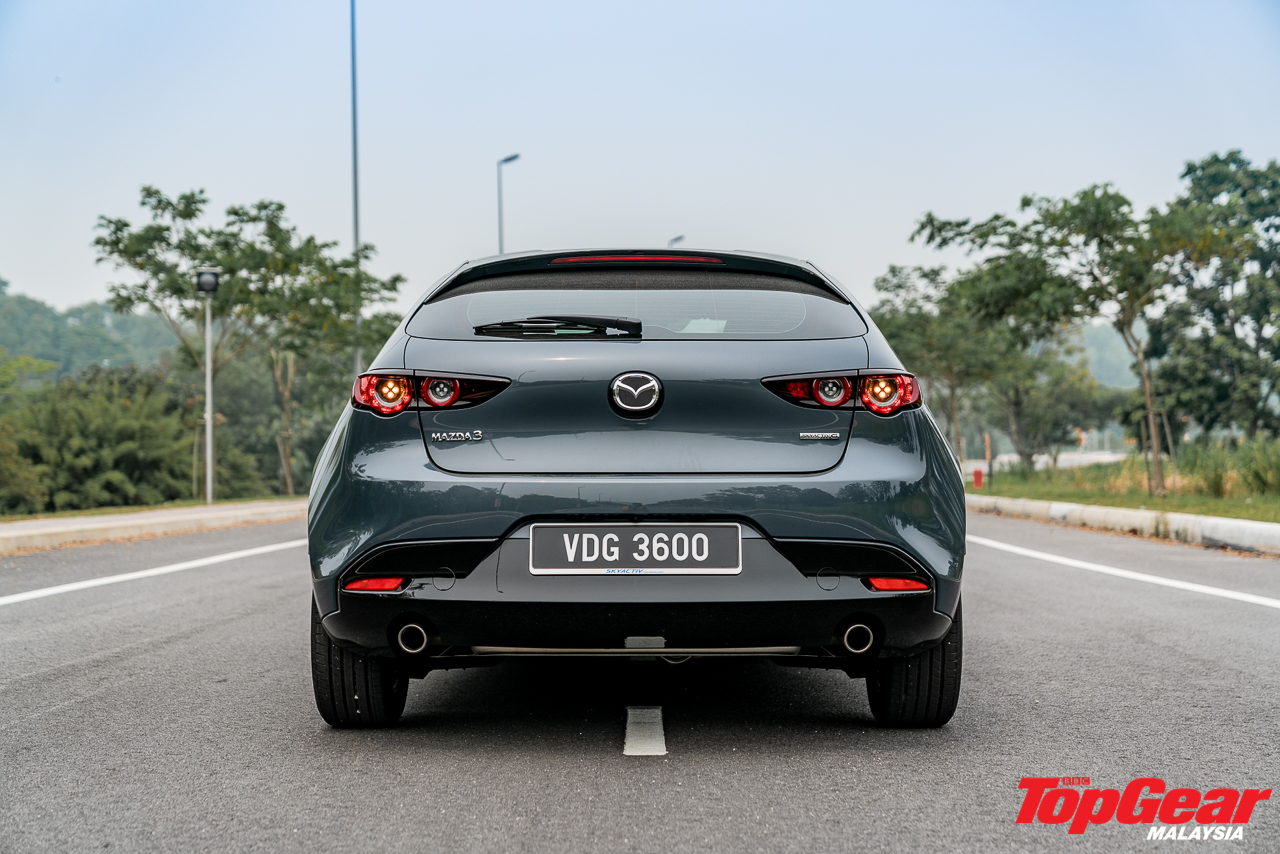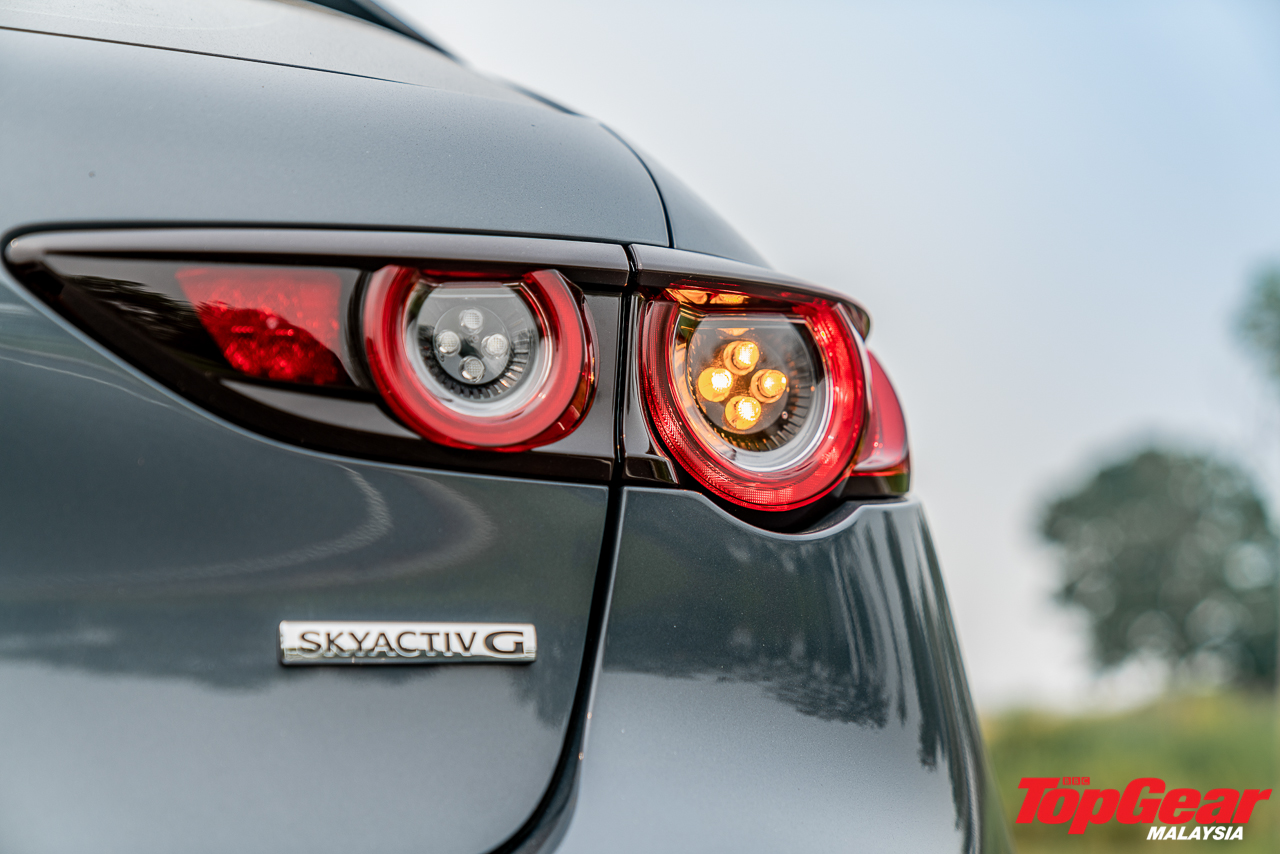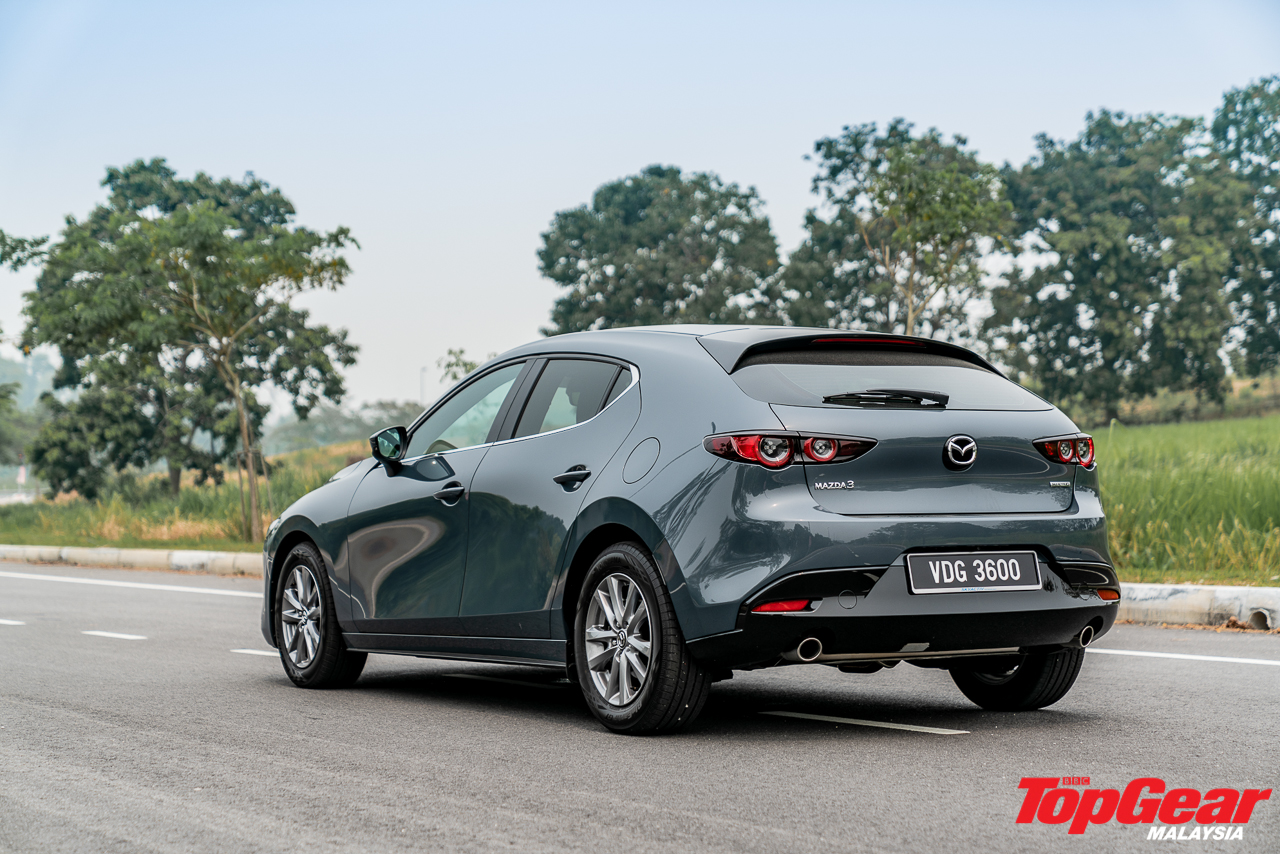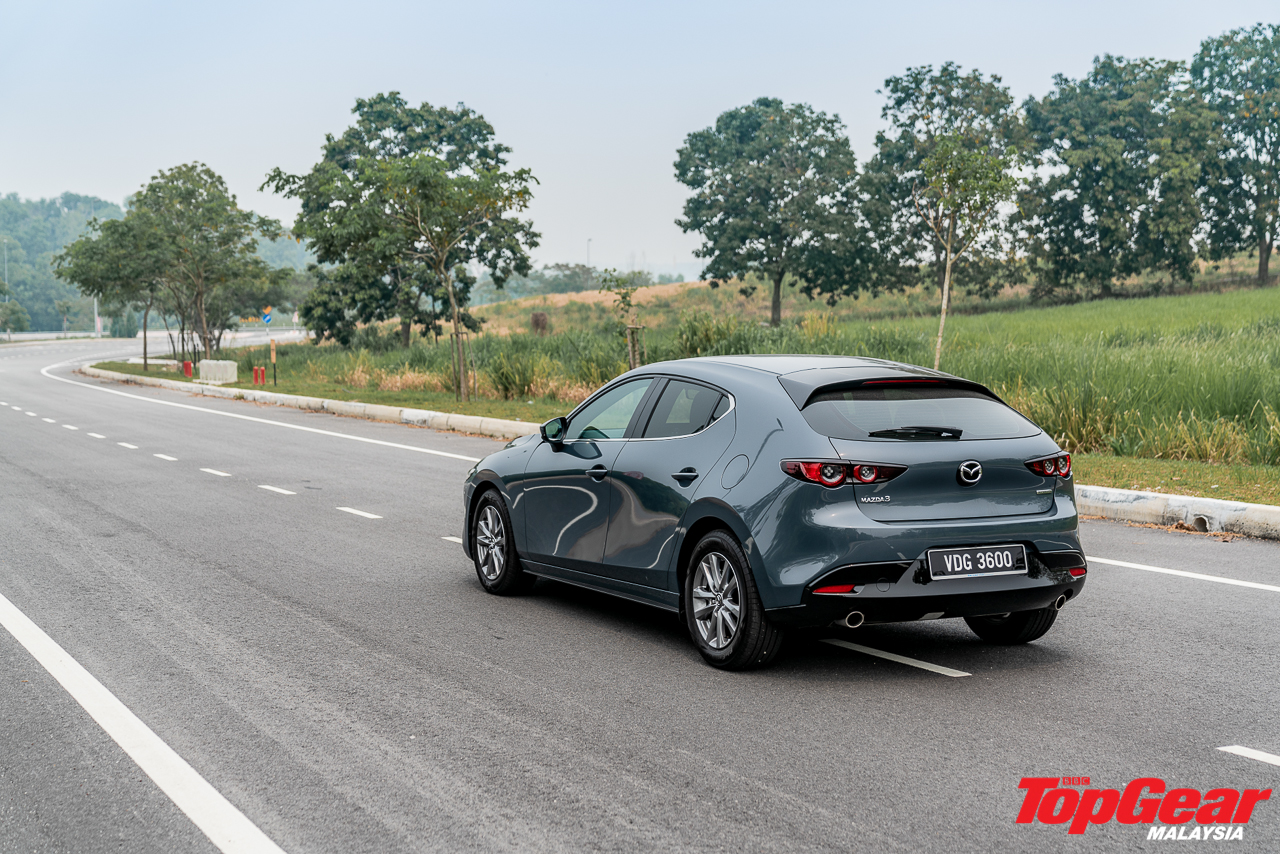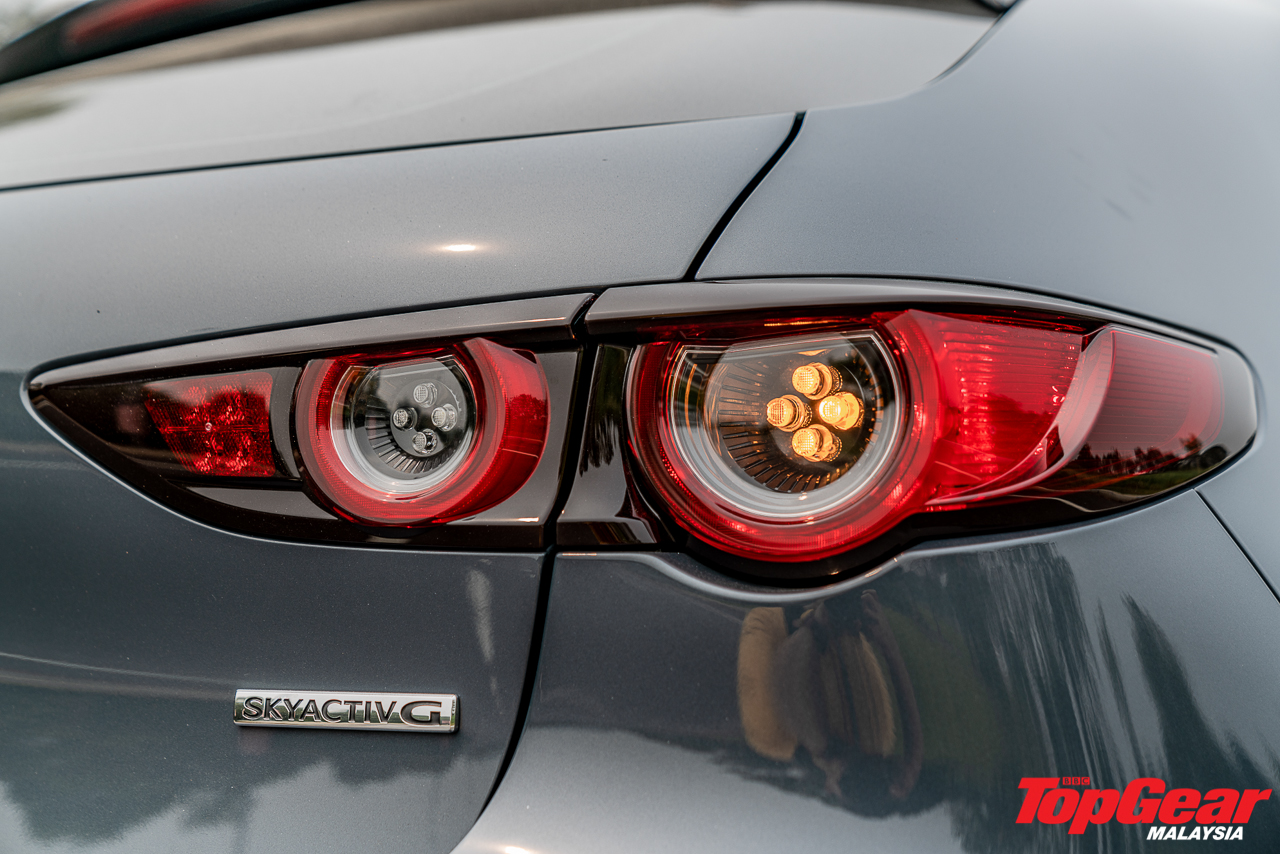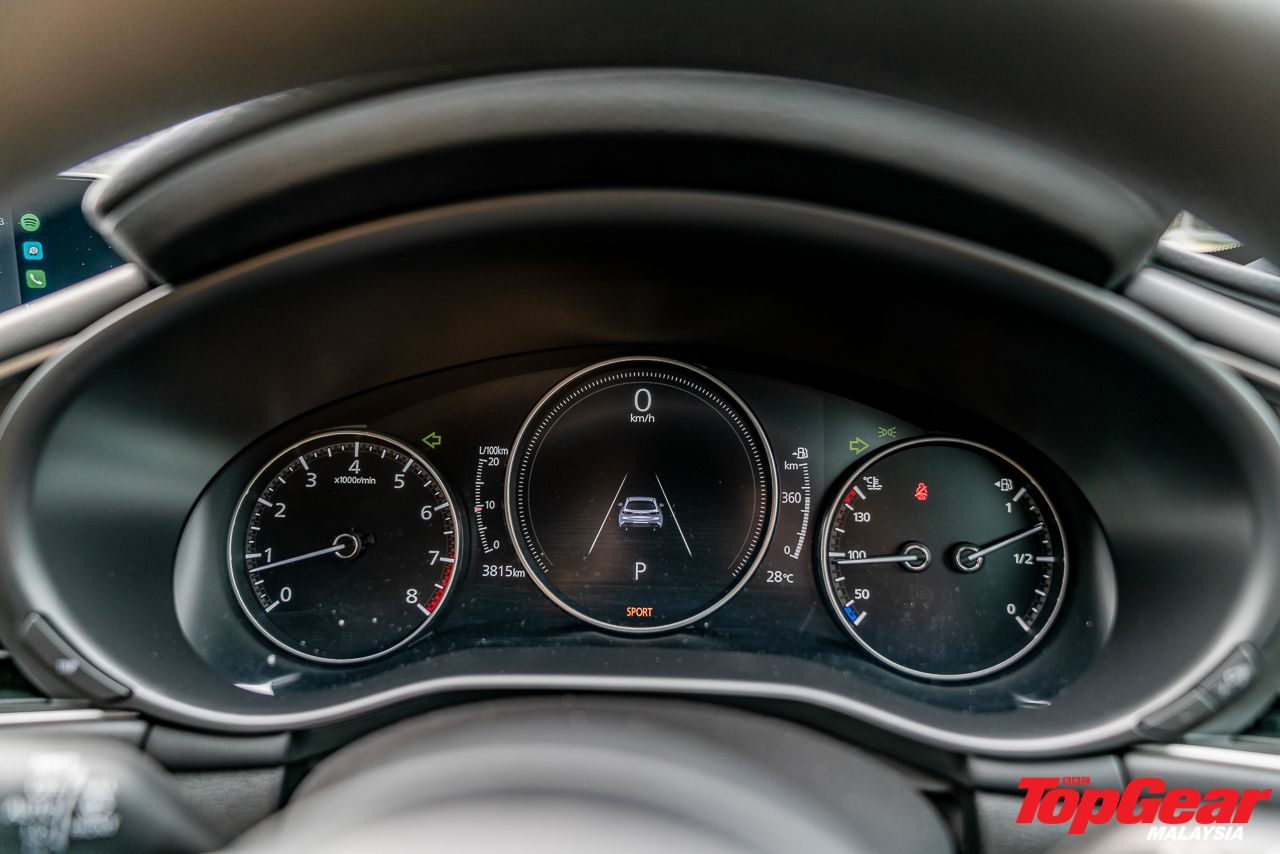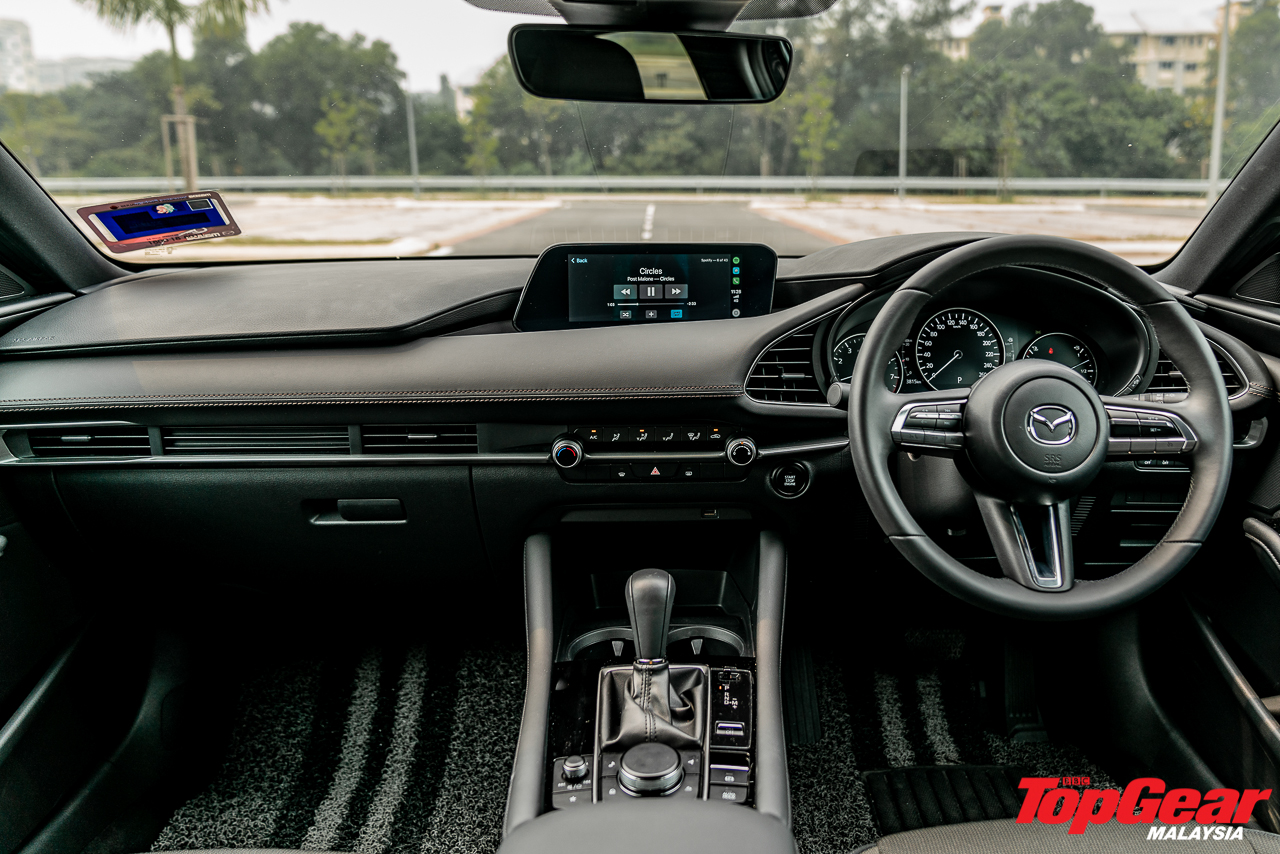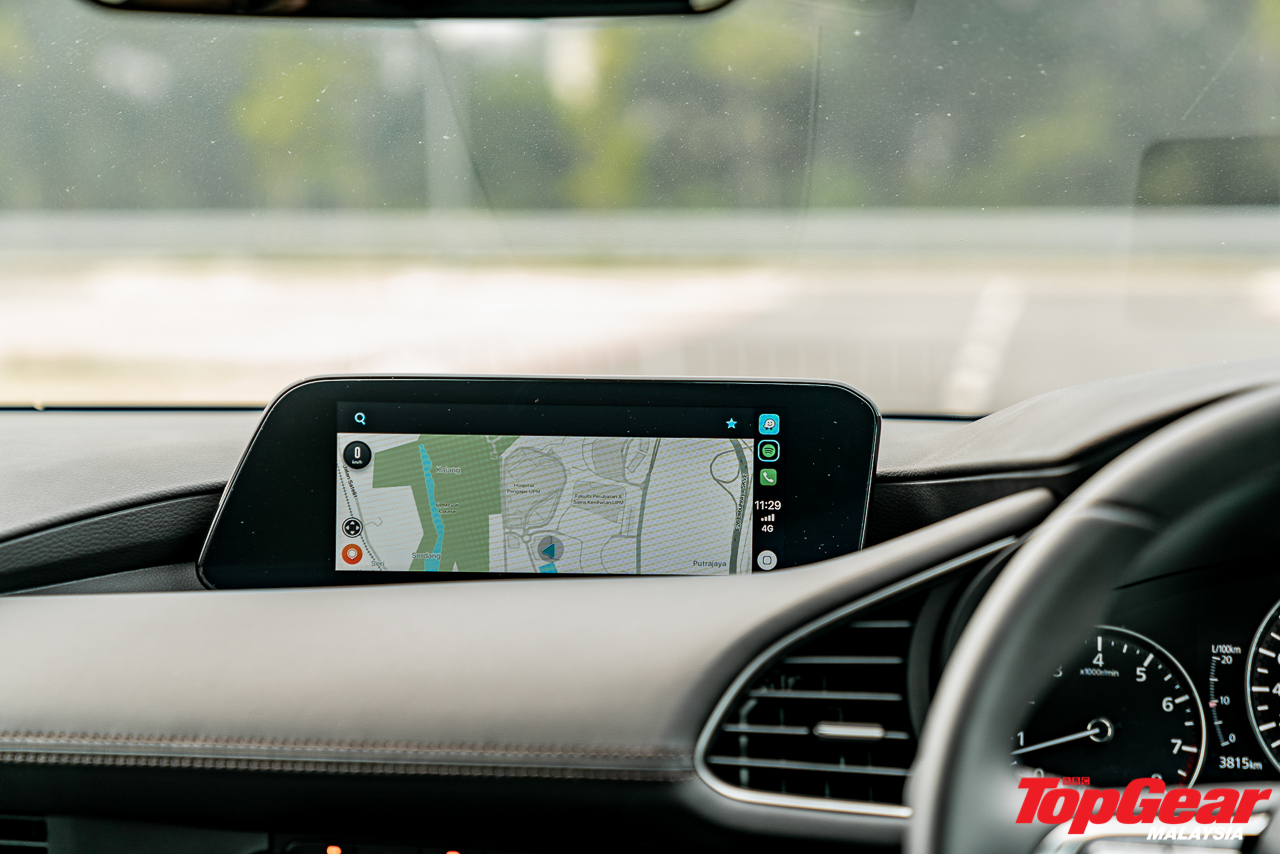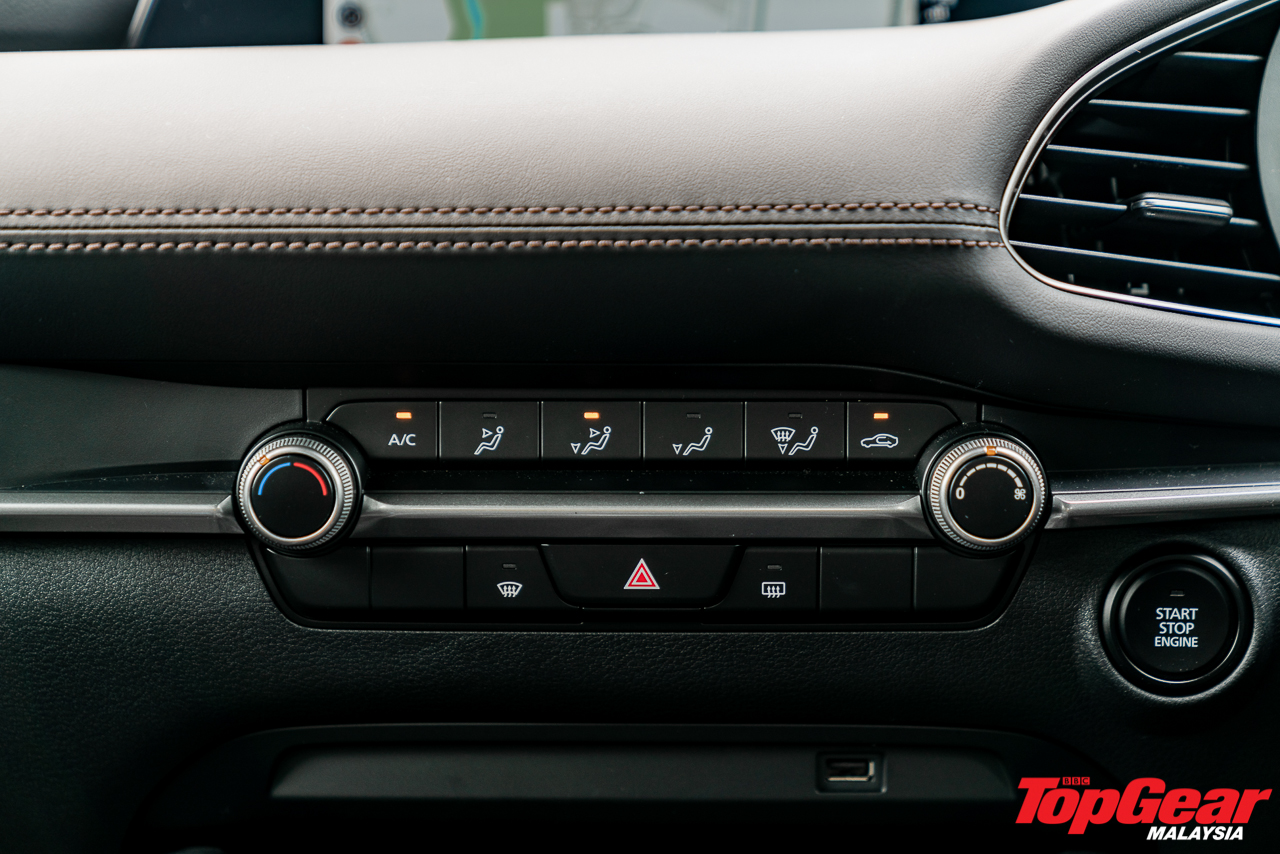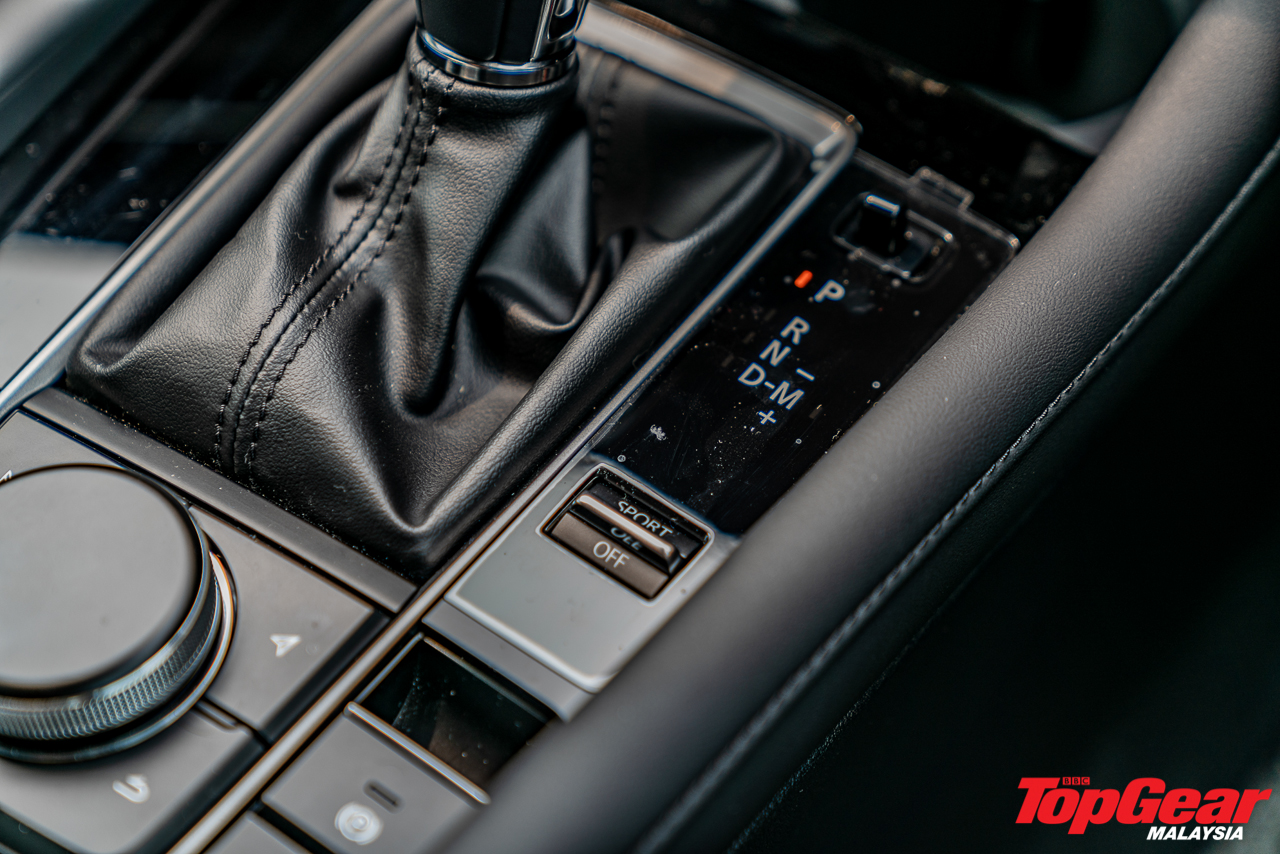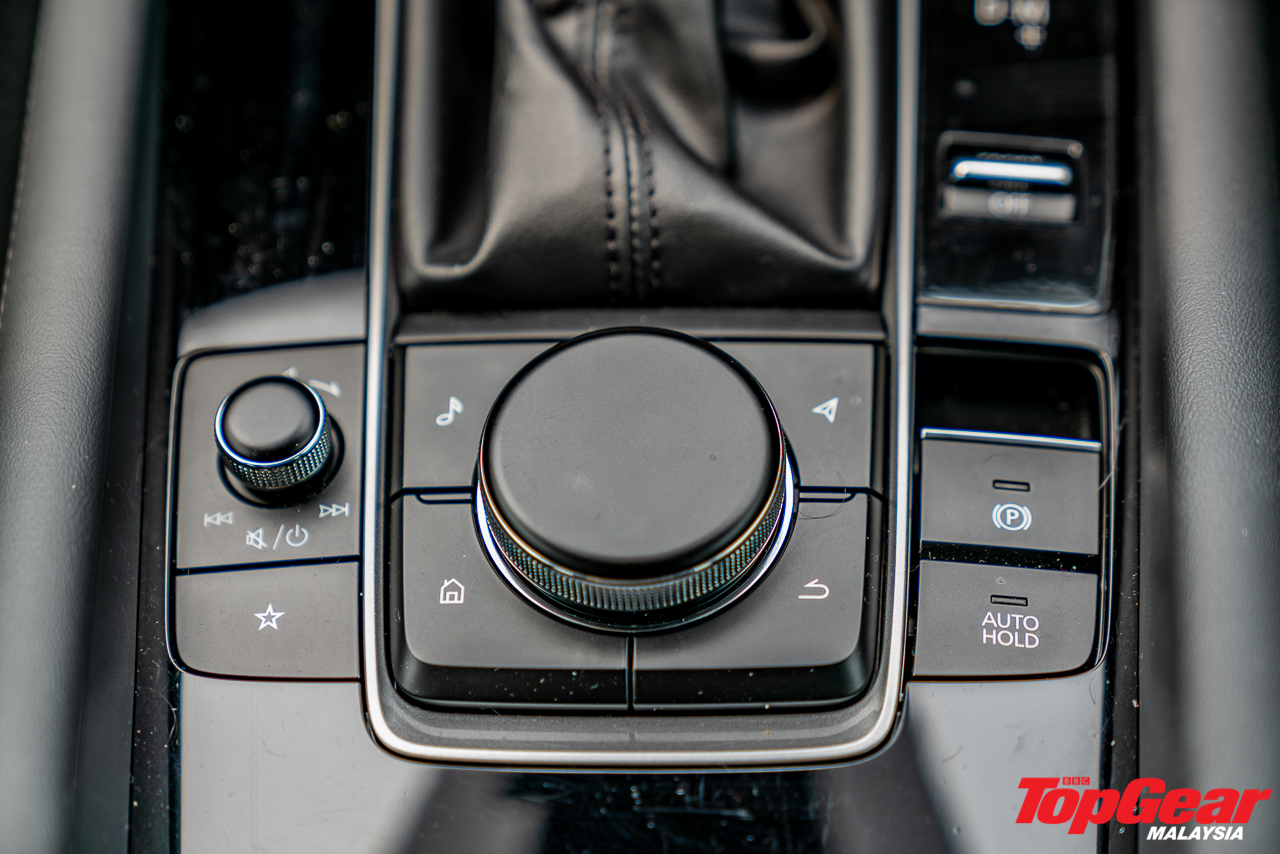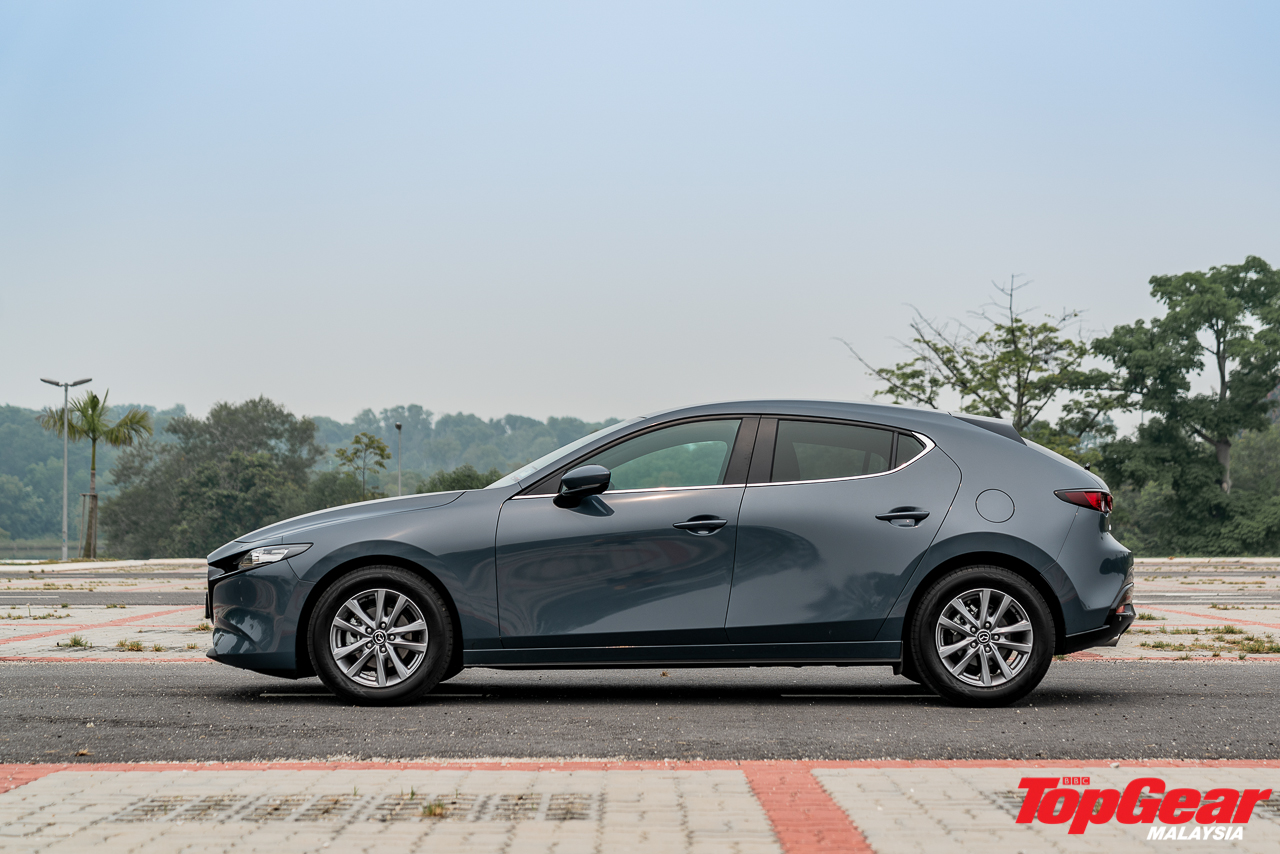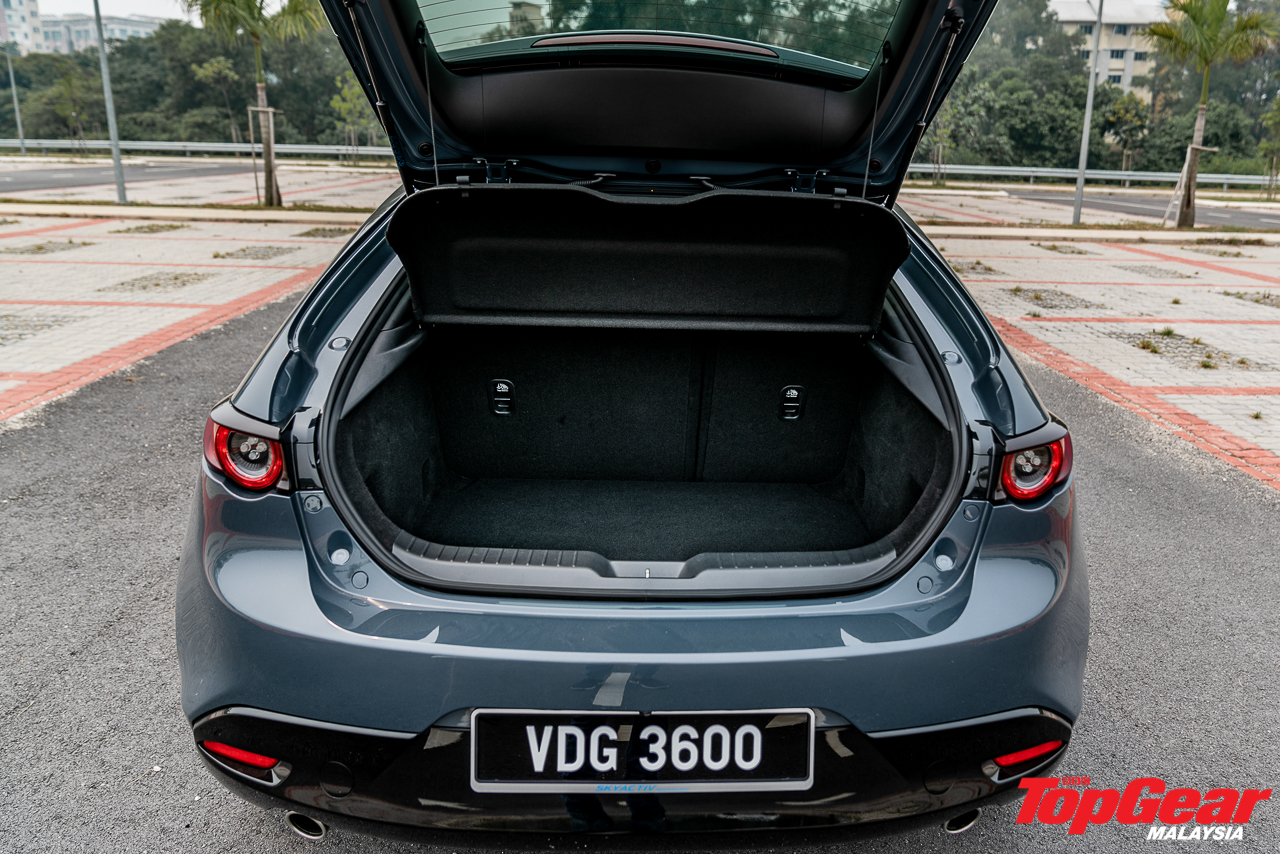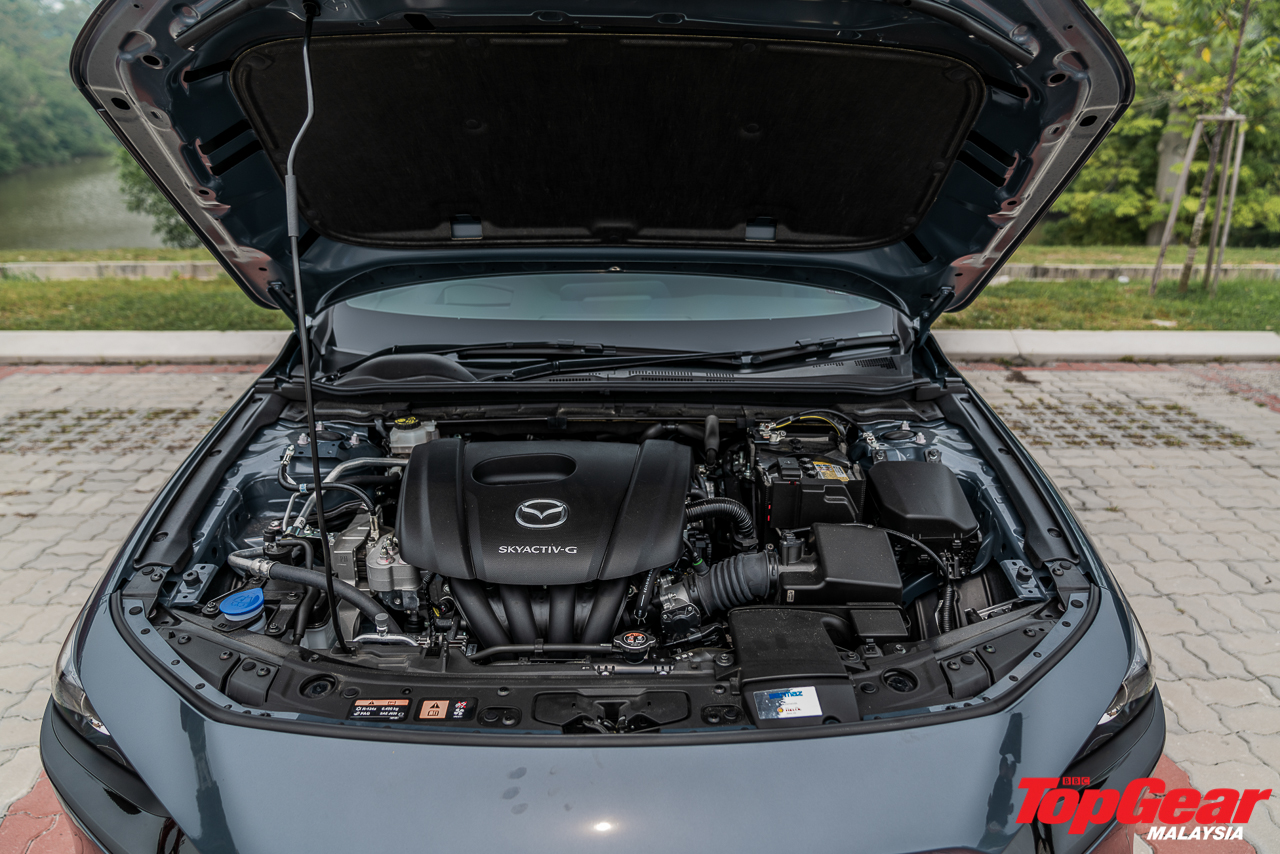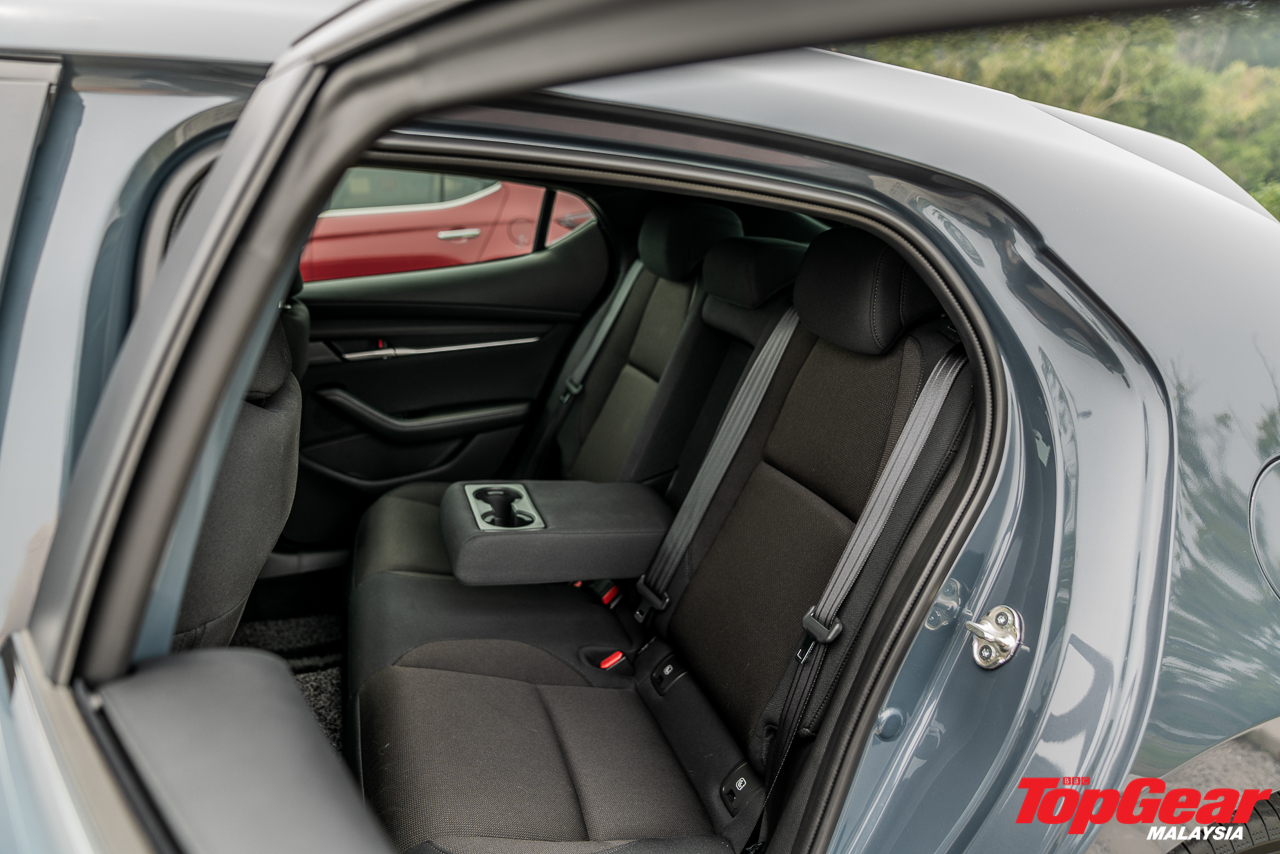Big Test: Mazda3 1.5 vs Honda Civic 1.8 vs Hyundai Elantra 2.0
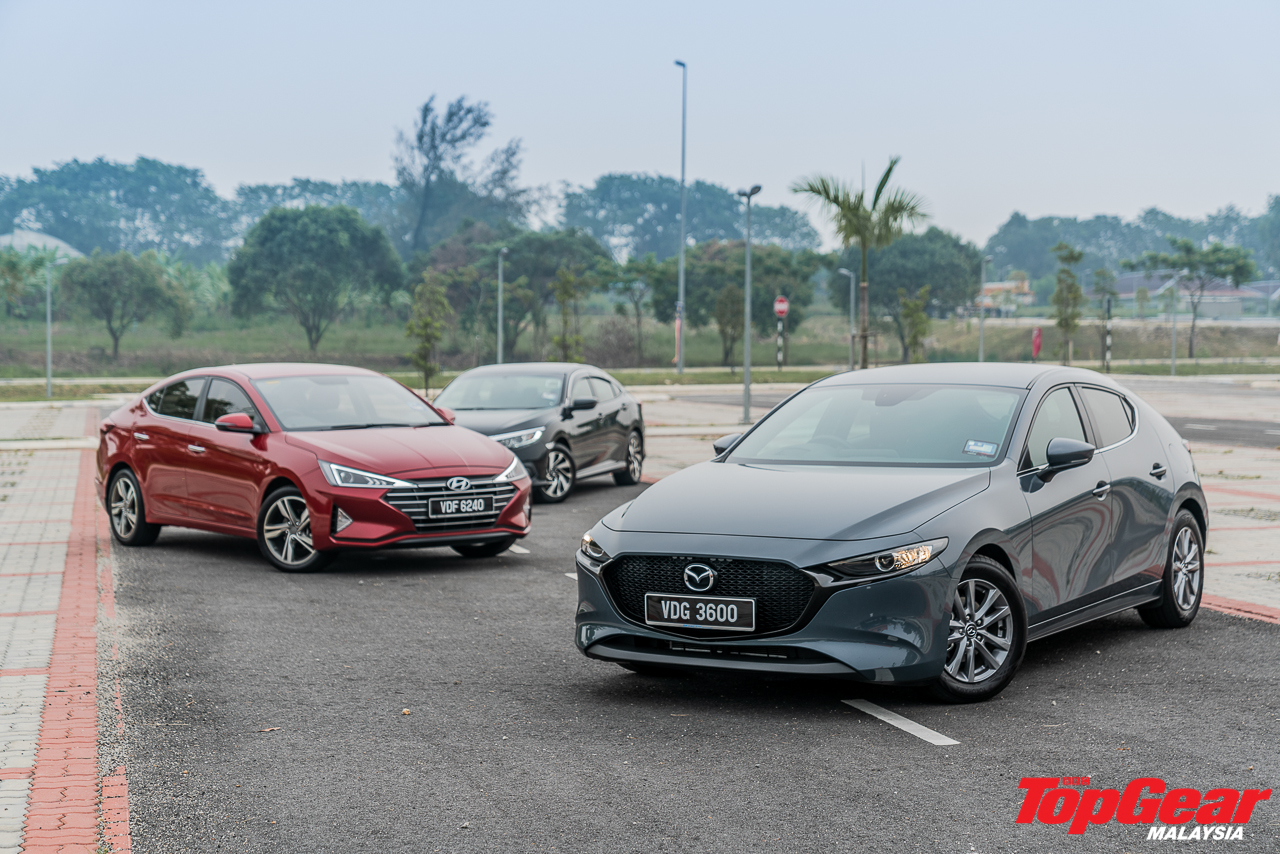
C-segment Confusion
Words: Daryl Loy / Pictures: John Tan
Mazda doesn’t like to play by the rules.
When big engines were in demand, it invested heavily in 1.3-litre rotaries that never really took off in the mainstream. When certain communities began to make demands for diesel to be outlawed, Mazda continued to refine its SkyActiv-D powertrains. The Hiroshima-based carmaker blatantly ignored the numeral system in naming the CX-30, a crossover that naturally slots between the CX-3 and CX-5. And the rebellion is rubbing off on local distributor Bermaz if the pricing of the fourth-generation Mazda3 is anything to go by.
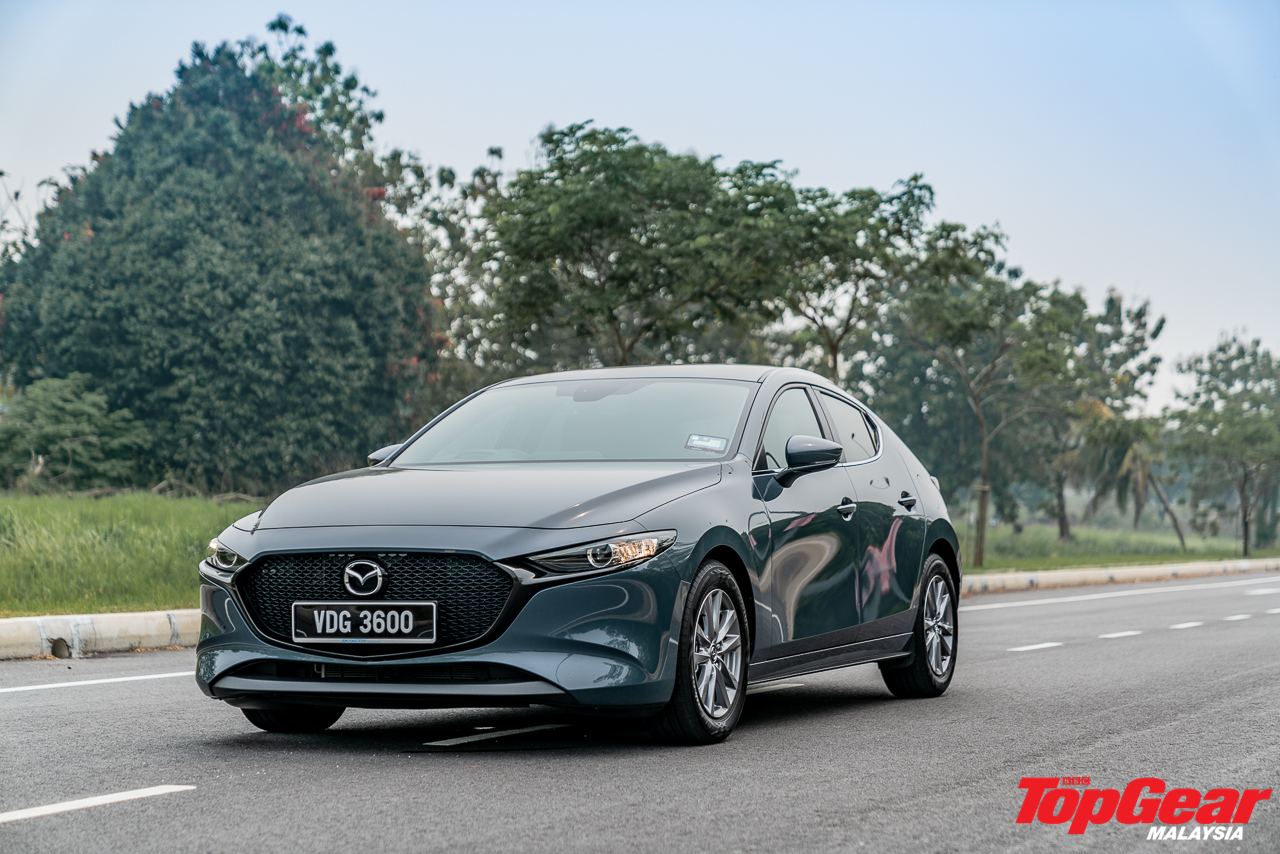
Heads were turned when the recently-launched C-segment fighter arrived, tagged with a CBU starting price of RM139,620. It may be the most premium-looking vehicle in its class at present, with fluid lines and use of sensual materials giving it the visual panache of premium makes like BMW and Mercedes – brands that Mazda wants the new 3 to be associated with. But question marks are inevitable when the base variant, one packing a naturally-aspirated 1.5-litre four banger at that, is priced higher than the range toppers of its rivals.
With only 118bhp and 153Nm at its disposal, the most affordable Mazda3 isn’t going to trouble the darling of the C-segment, the Honda Civic 1.5 Turbo, which is why we’ve roped in the cheaper 1.8-litre variant for comparison’s sake instead. It’s public knowledge that the 10th-generation Civic is due for an update very soon (click these words to read our first drive report of which).
But we think it still looks handsome as is, even if the higher spec’s LED headlights and 17-inch wheels are lost on the 1.8. Mazda’s artistic flair is obviously hard to match, but Honda has managed to instil an air of timelessness in the Civic, validated by the minimal aesthetic changes you’ll see in the upcoming facelift.
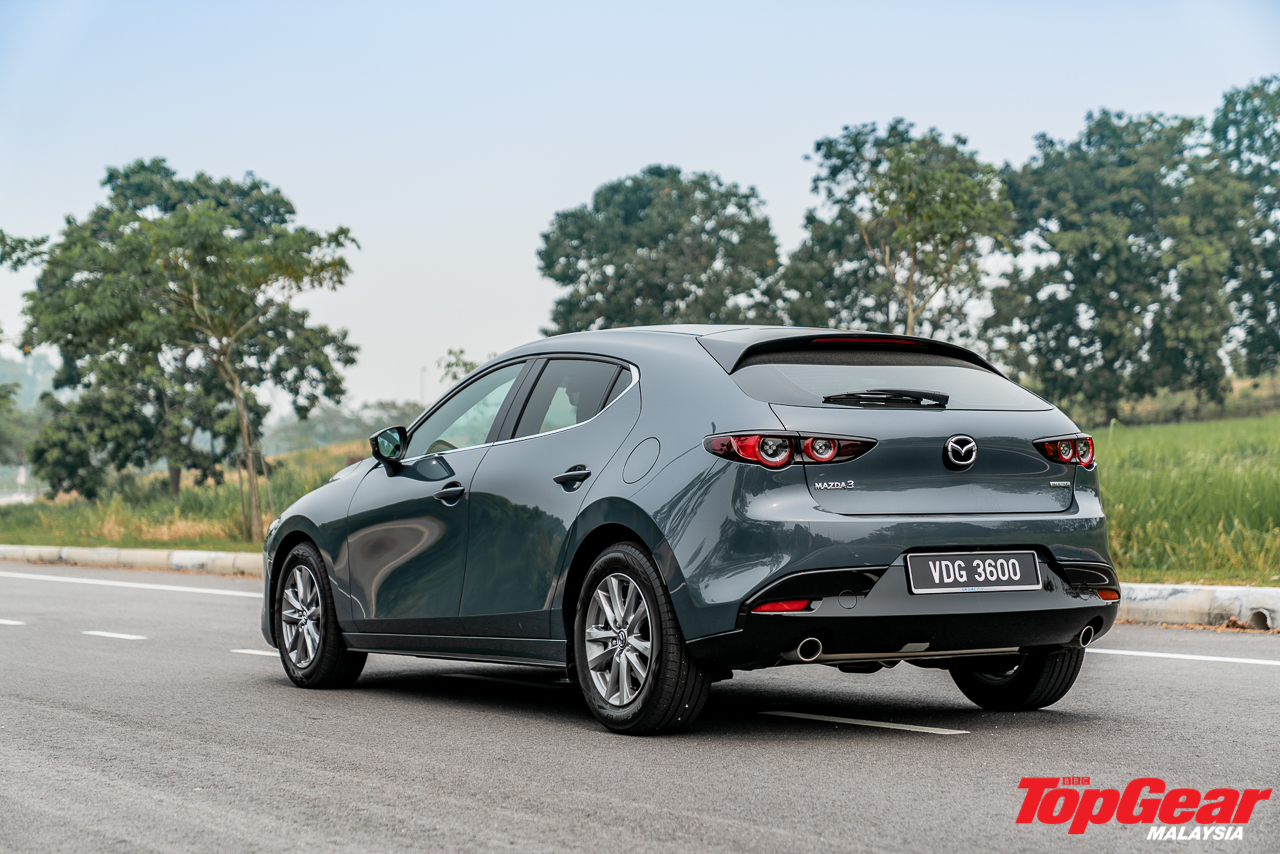
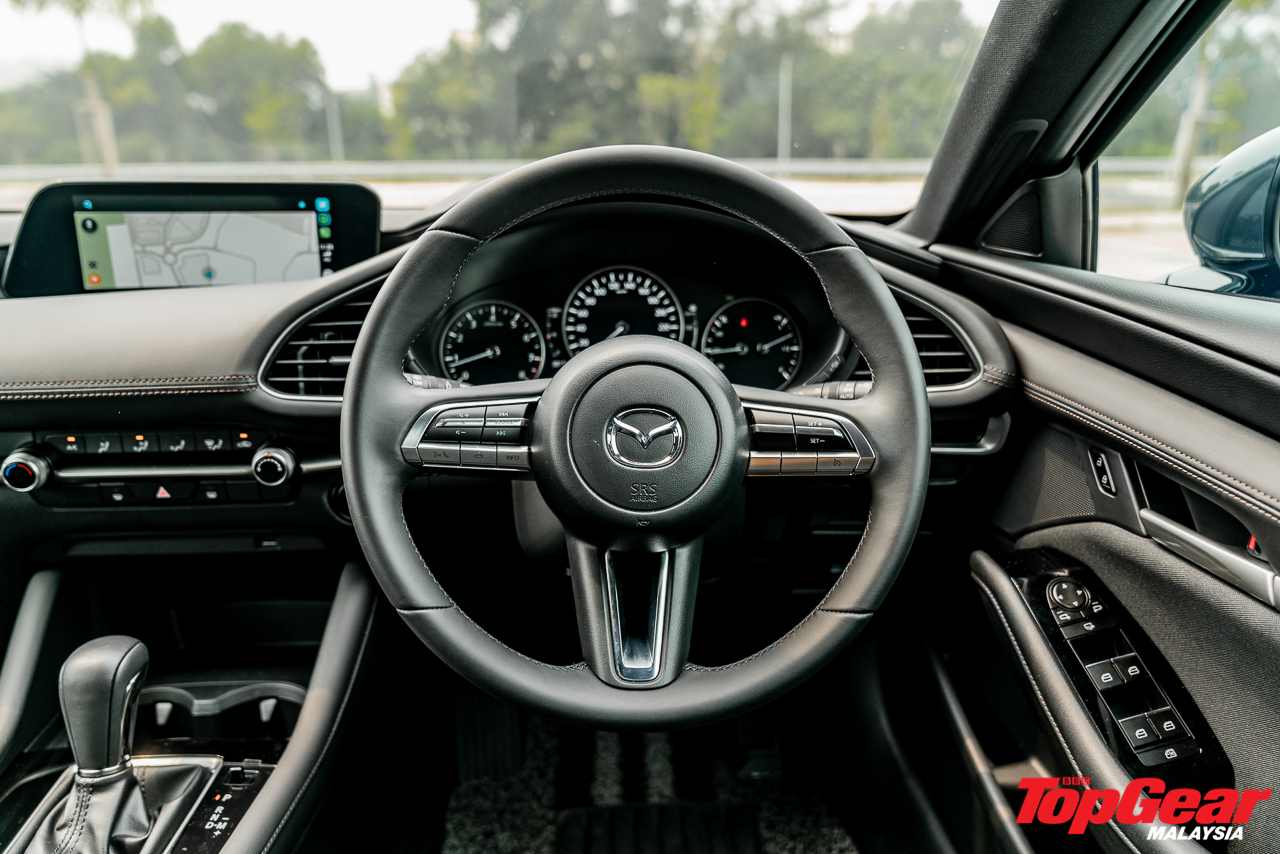
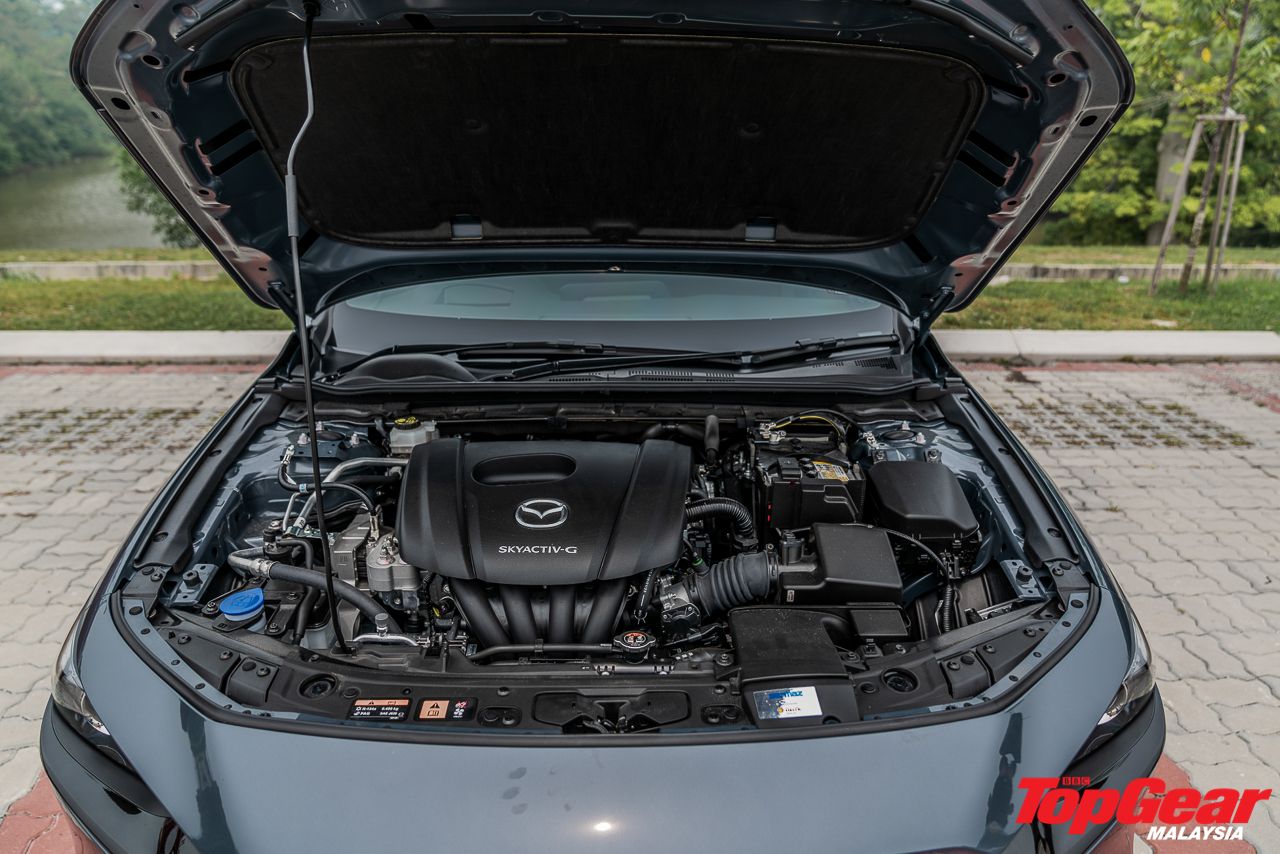
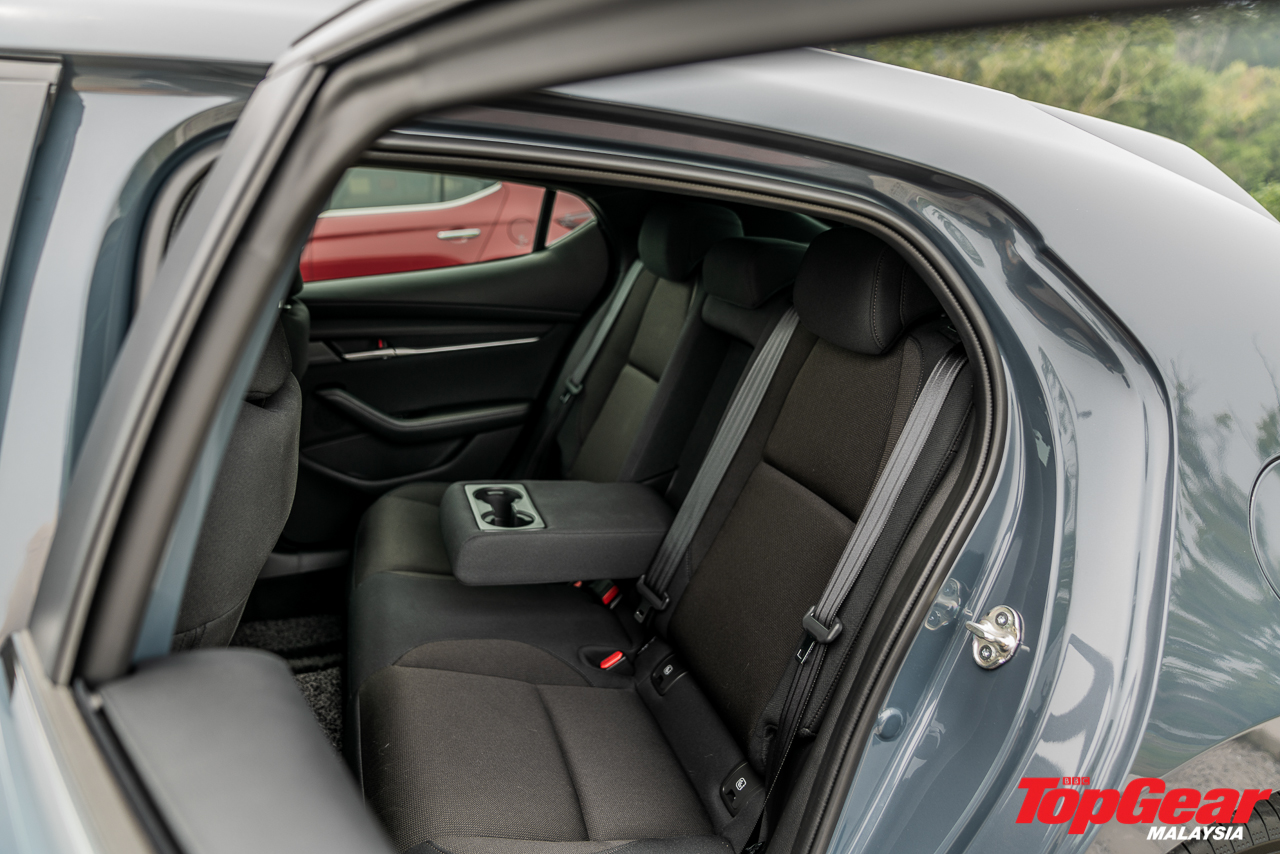
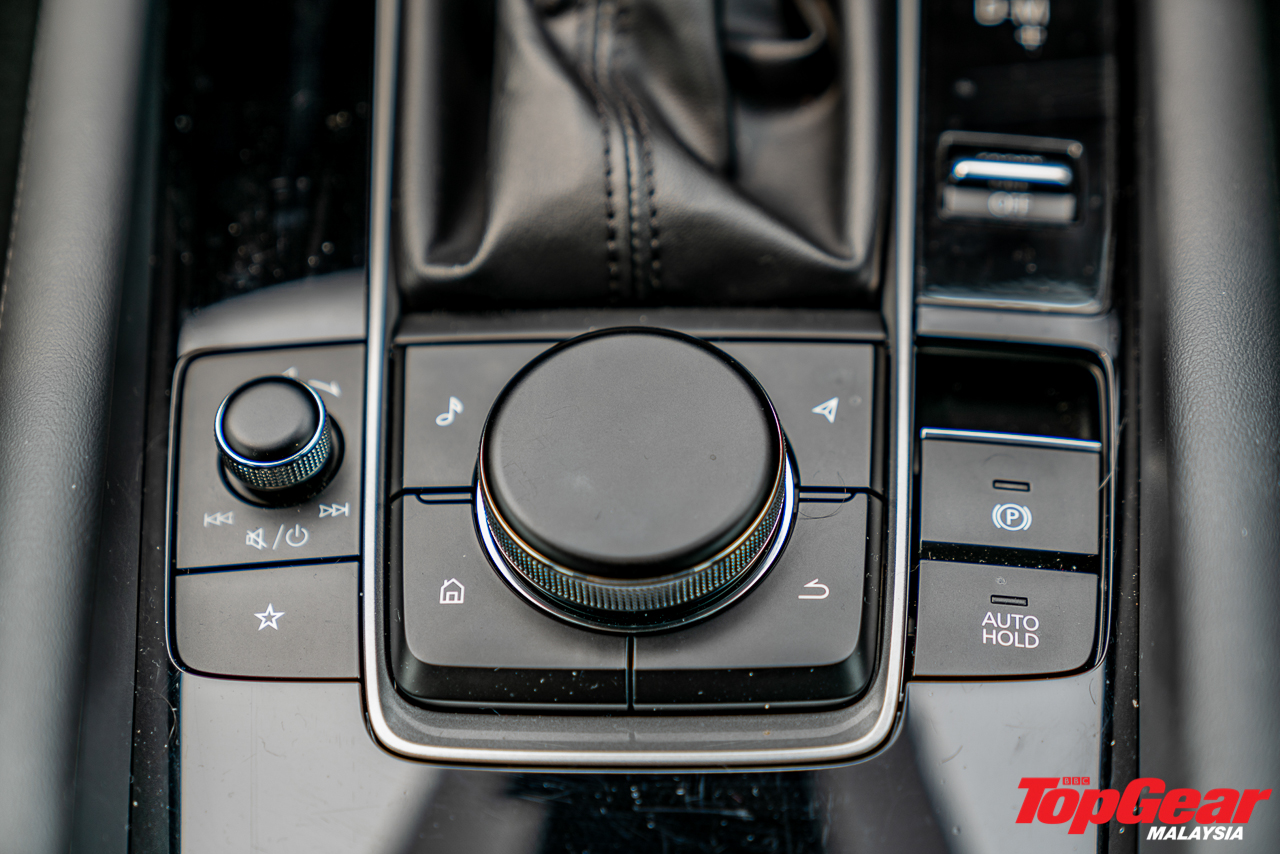
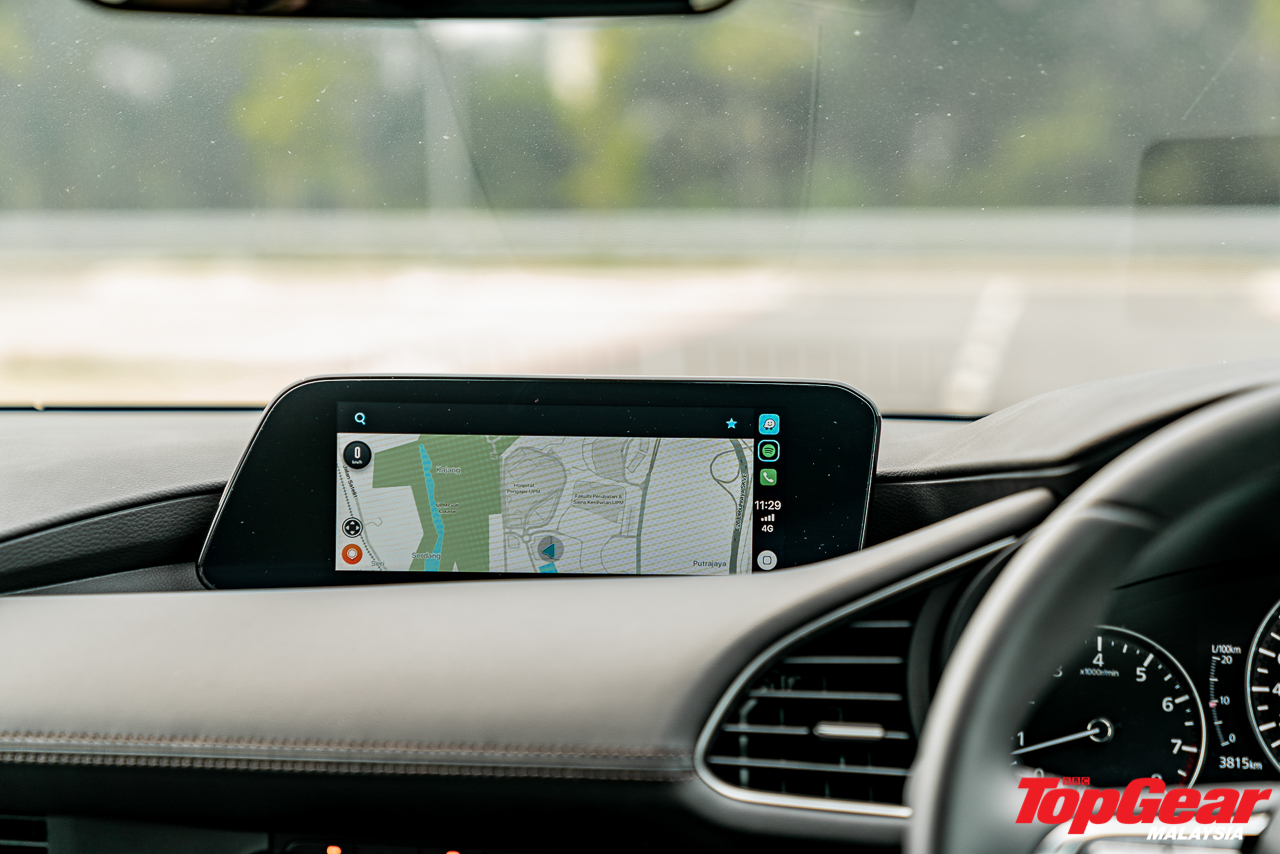
Across the Sea of Japan, Hyundai has already refreshed its C-segment dark horse, the Elantra, and its designers were obviously given more freedom than their peers at Honda. The result is a facelift that’s very love-or-hate – the Elantra’s updated front and rear ends being overly daring with distinct triangular elements shaping its face while a pair of zig-zag light signatures entertain occupants of tailing vehicles. If only the designers were allowed to take this bravado with them into the cabin.
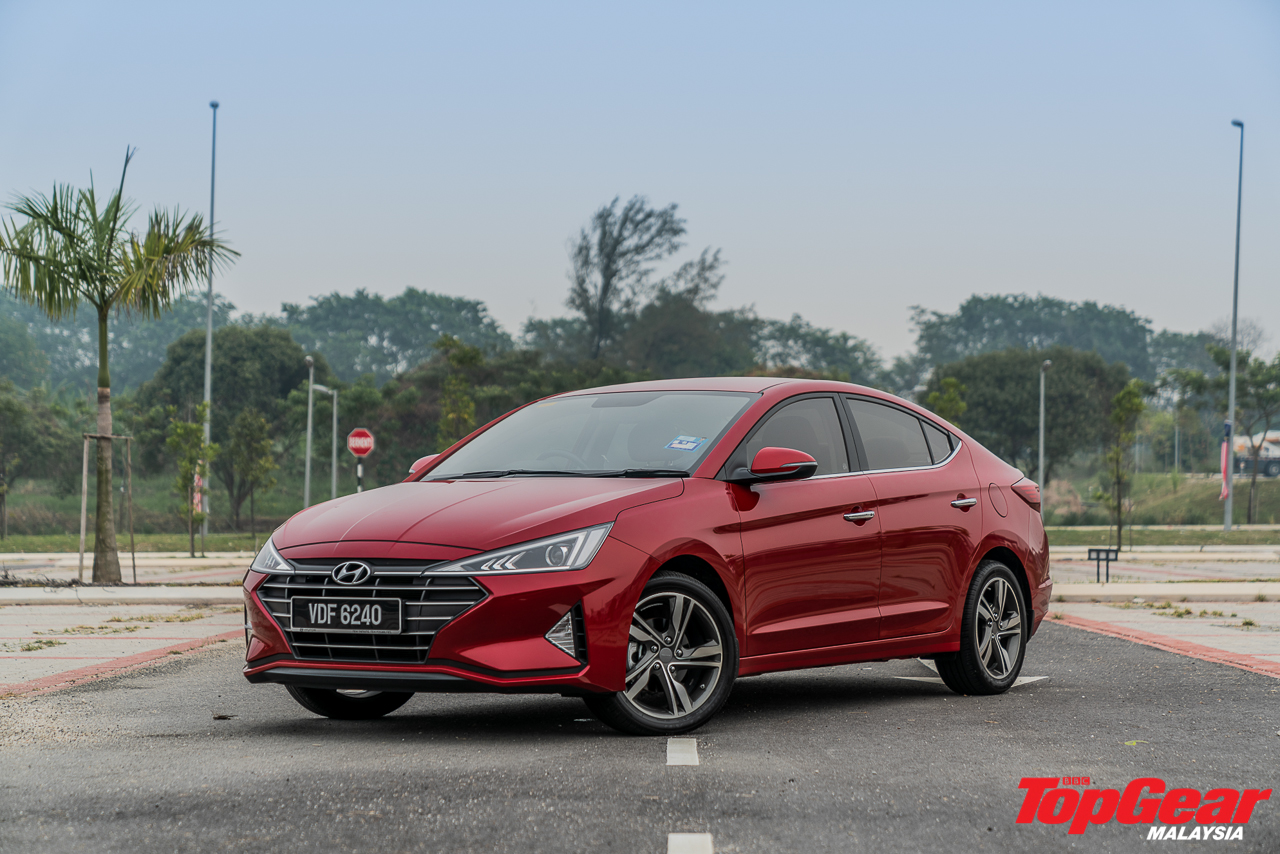
We’re not saying the cabin is small; it’s actually far from it. But owners of the pre-facelift Elantra will feel like nothing has changed behind the wheel of the new one; whether that’s a good or a bad thing is as debatable as the car’s polarising new skin. Speaking of which, the Elantra is the only car of the three to have leather seats, which is nice. On the flipside, it’s also the only one to soldier on with a physical handbrake; fun, but perhaps lacking in premium feel. Then again, it is nearly RM30k cheaper than the Mazda at RM109,888 – the Civic 1.8S costs even less at RM108,165!
For the extra dough, the 3 does give you a leather-wrapped dashboard, windshield-projected head up display (in colour), and arguably the most intuitive infotainment of the lot, even if its 8.8-inch Mazda Connect display isn’t touch-sensitive. All three units support Android Auto and Apple CarPlay, so there’s little disparity in addressing your multimedia needs. But we’re gravitating towards the Civic, which has the most functional cabin, even though improvements can still be made in build quality. The Honda packs a digital instrument cluster like the Mazda, and it’s also the only one with an electrically-adjustable driver’s seat.
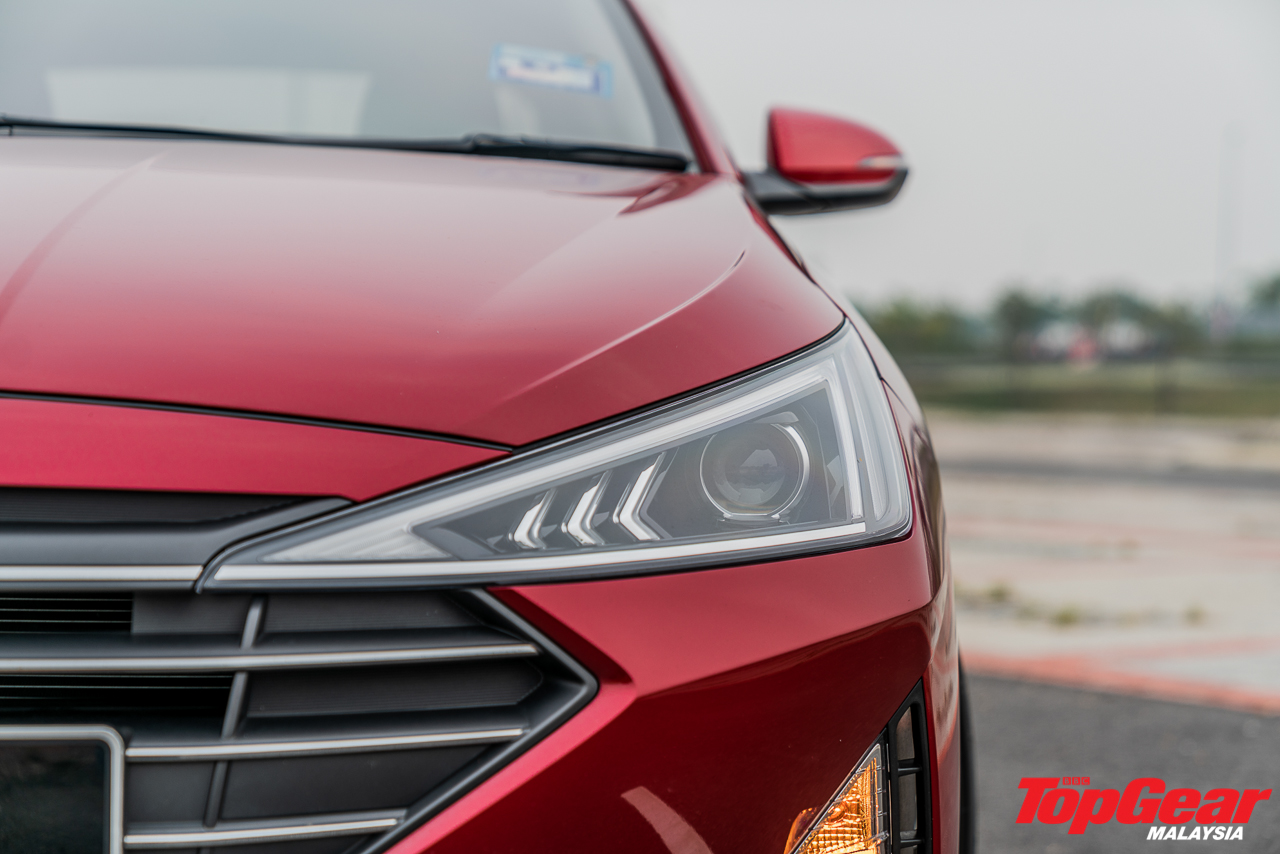
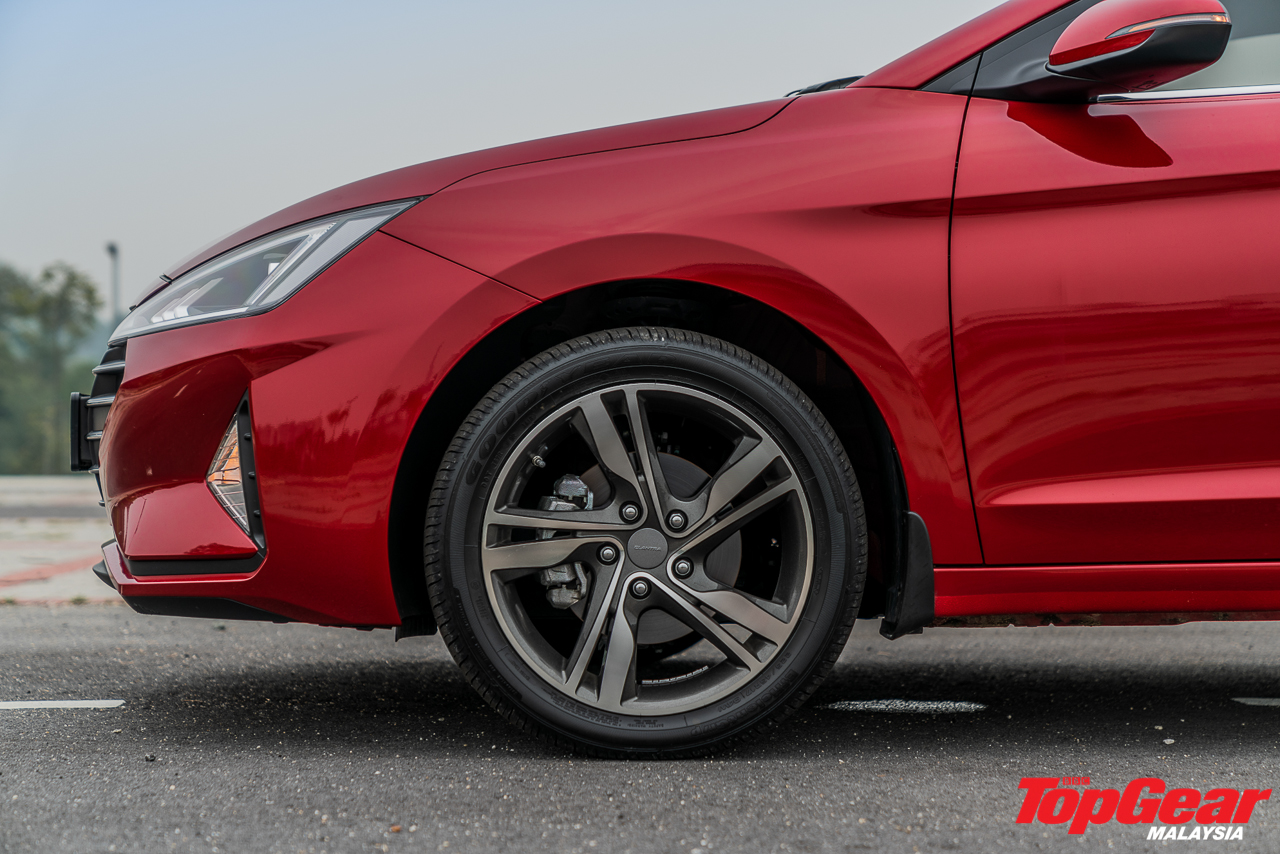
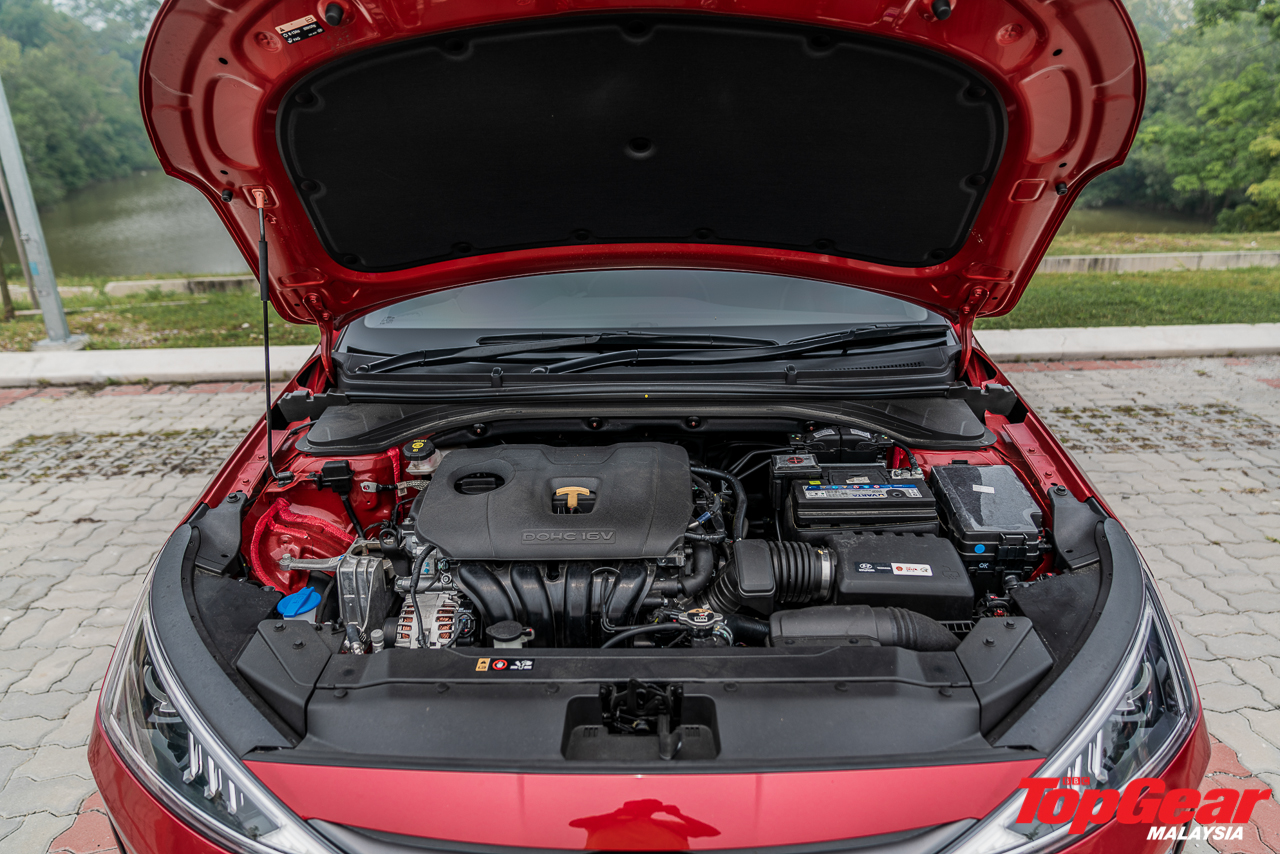
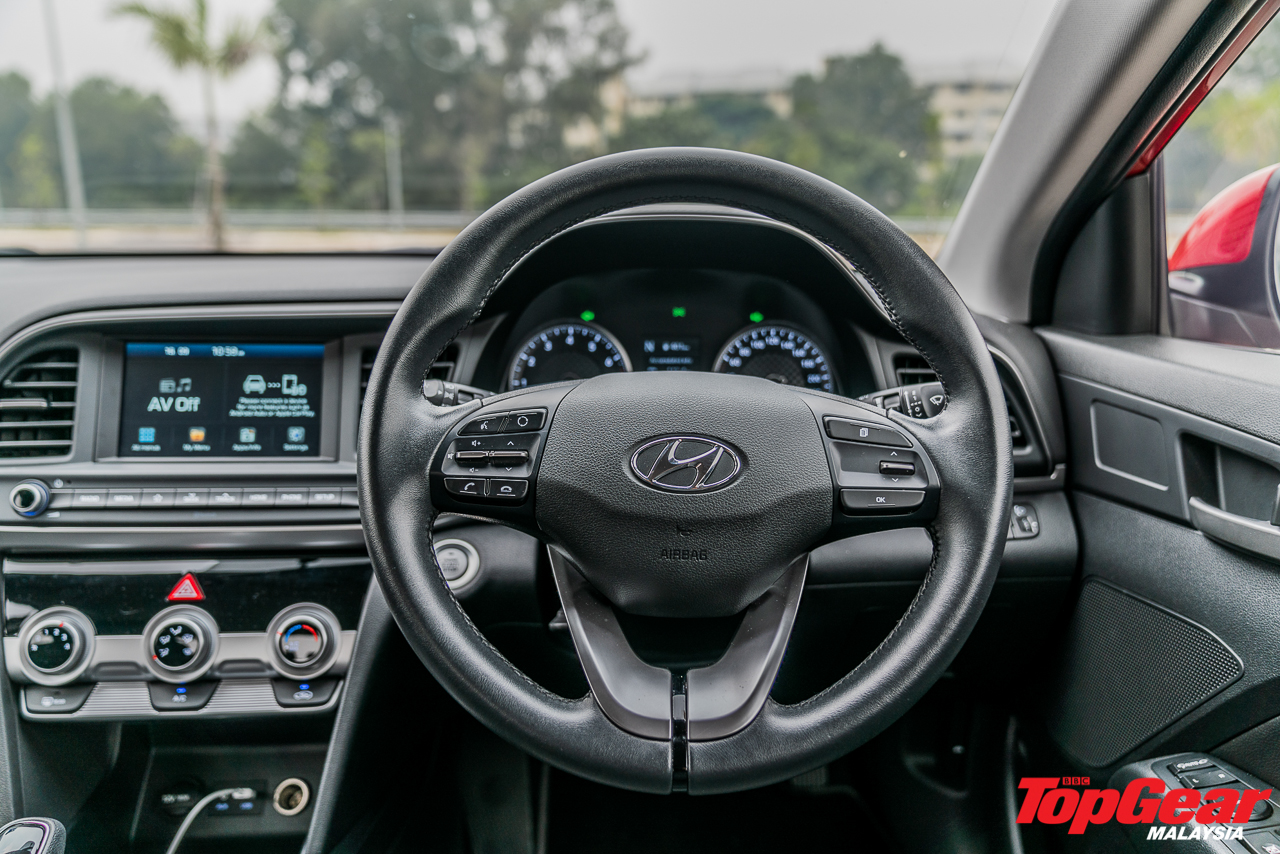
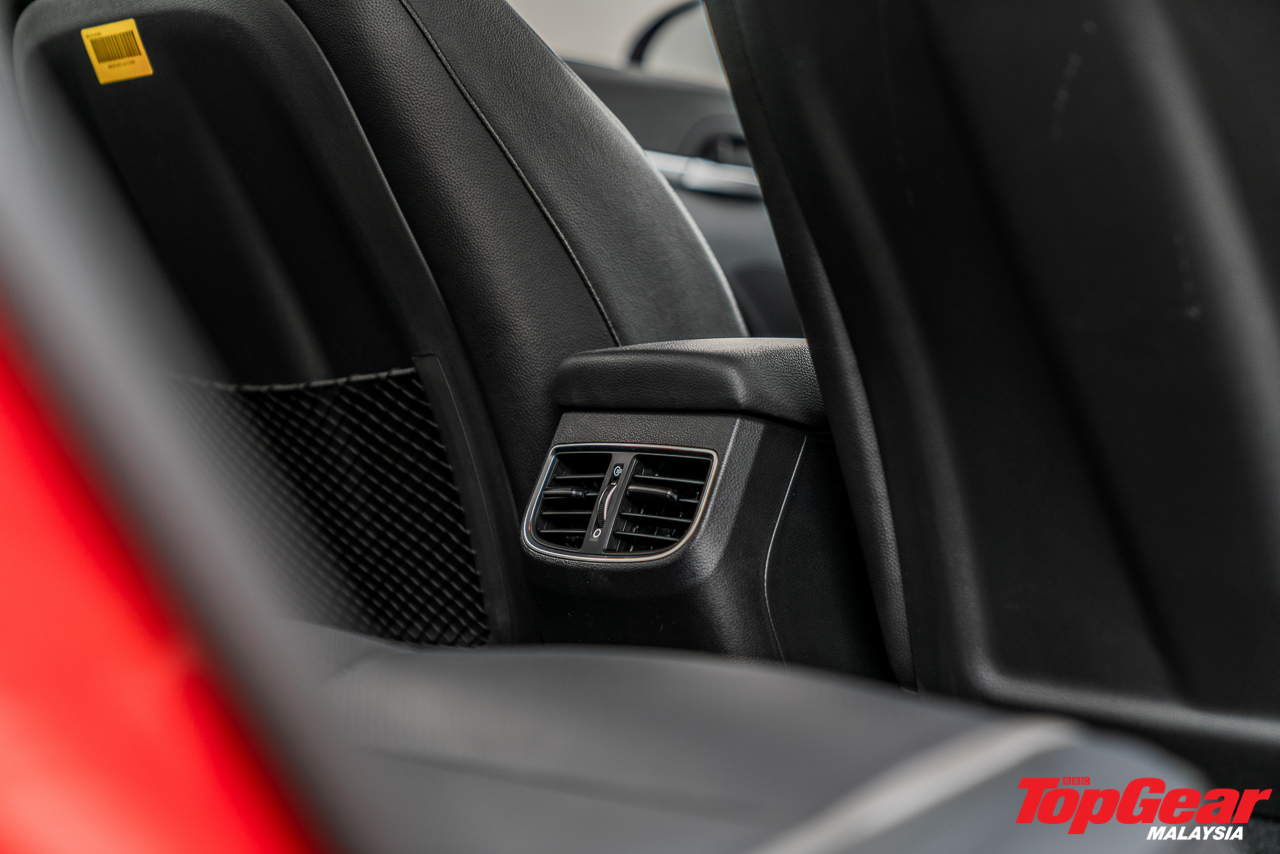
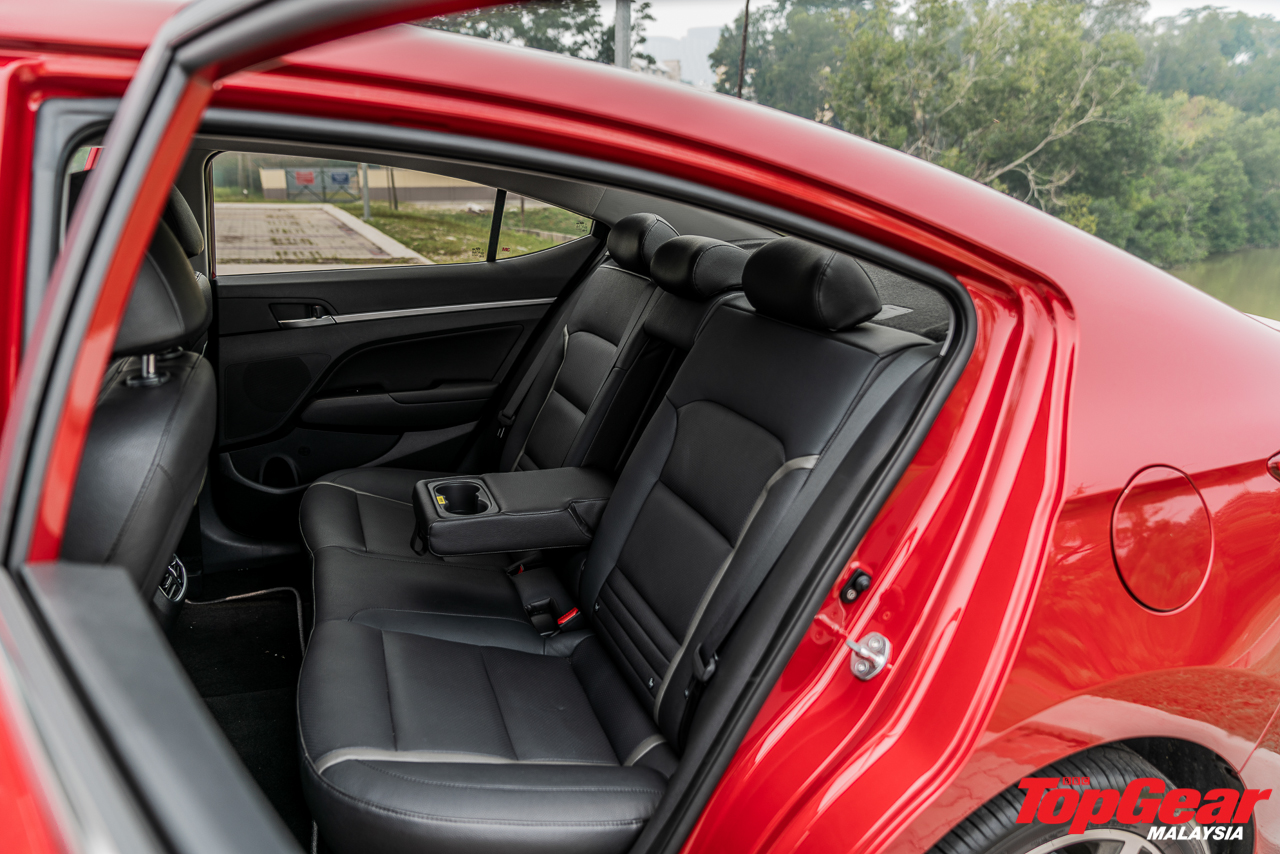
On the topic of seats, the Civic also boasts the most spacious ones in the rear, albeit with a low seating position might trouble older passengers. The Hyundai comes a close second in the space race, but its liftback-like styling puts a rather steep gradient towards the rear of the roofline which eats into a little bit of headroom. It’s still a much more comfortable place to be in than the back of the Mazda. However, the sedan version of the entry-level 3, which was unavailable for review at time of writing, might have been able to up the ante a little.
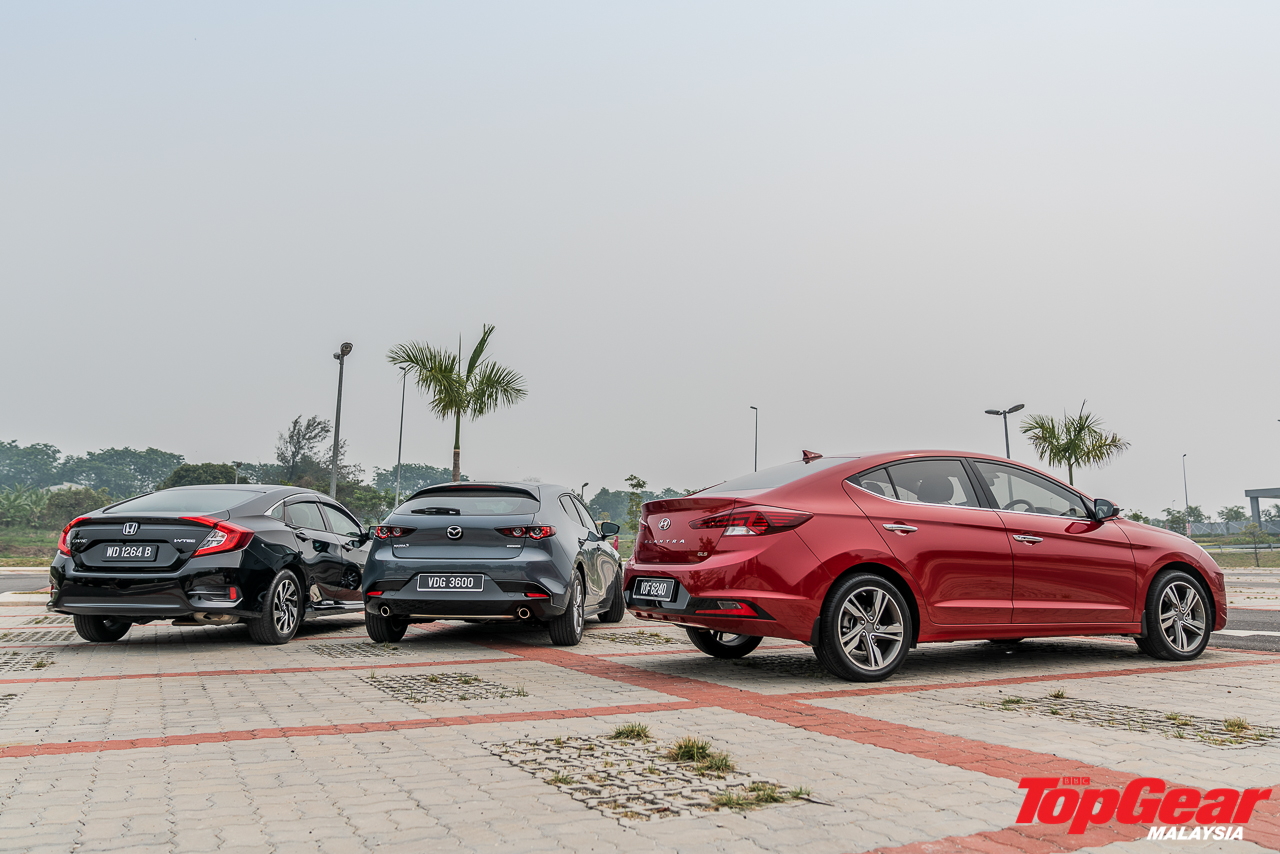
The same order can be observed when judging boot space, with the Civic leading the pack, followed by the Elantra and the Mazda. Having driven the 3 sedan, we’re convinced that it will close the gap on the Honda, which, shockingly, doesn’t allow you to fold the rear seats for extra cargo haulage. Surely the bars that run across the back of the seats can’t be too important…
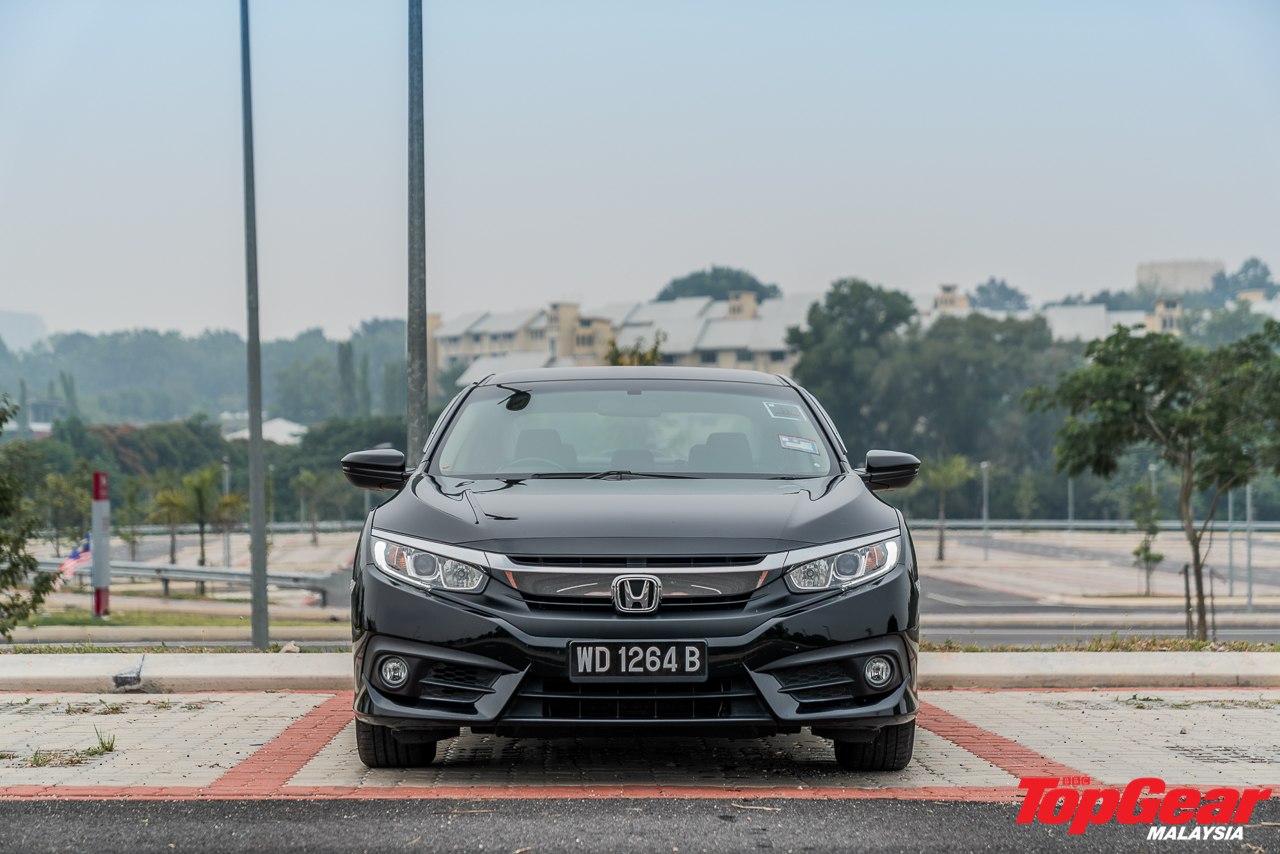
Oddity aside, the Civic remains the most fuss-free and practical C-segment car of the lot at this point, with the Mazda going down a markedly different route with a strong, creative approach to woo customers on the showroom floor. The Hyundai looks quite lost in the middle, carrying the tools to stay alive in this fight on its back but struggling to identify its overall purpose– a sense of identity that only starts to unravel once you’ve driven it for a while.
Displacement matters when there are three cars but not a single turbocharger in sight. In that respect, the Elantra’s two-litre Nu engine is arguably the most complete of the three. The lack of forced induction means it can be hard-revving in a traditional sense. But the delivery of its 150bhp and 192Nm to the front wheels is smooth and composed, with NVH levels kept to a minimum under heavy loads. Sure there’s some exertion at full throttle, but it doesn’t sound as coarse as most NA four-pot mills would when stressed. Topping it off is a silky six-speeder that makes the Hyundai far more delightful to drive than most would expect.
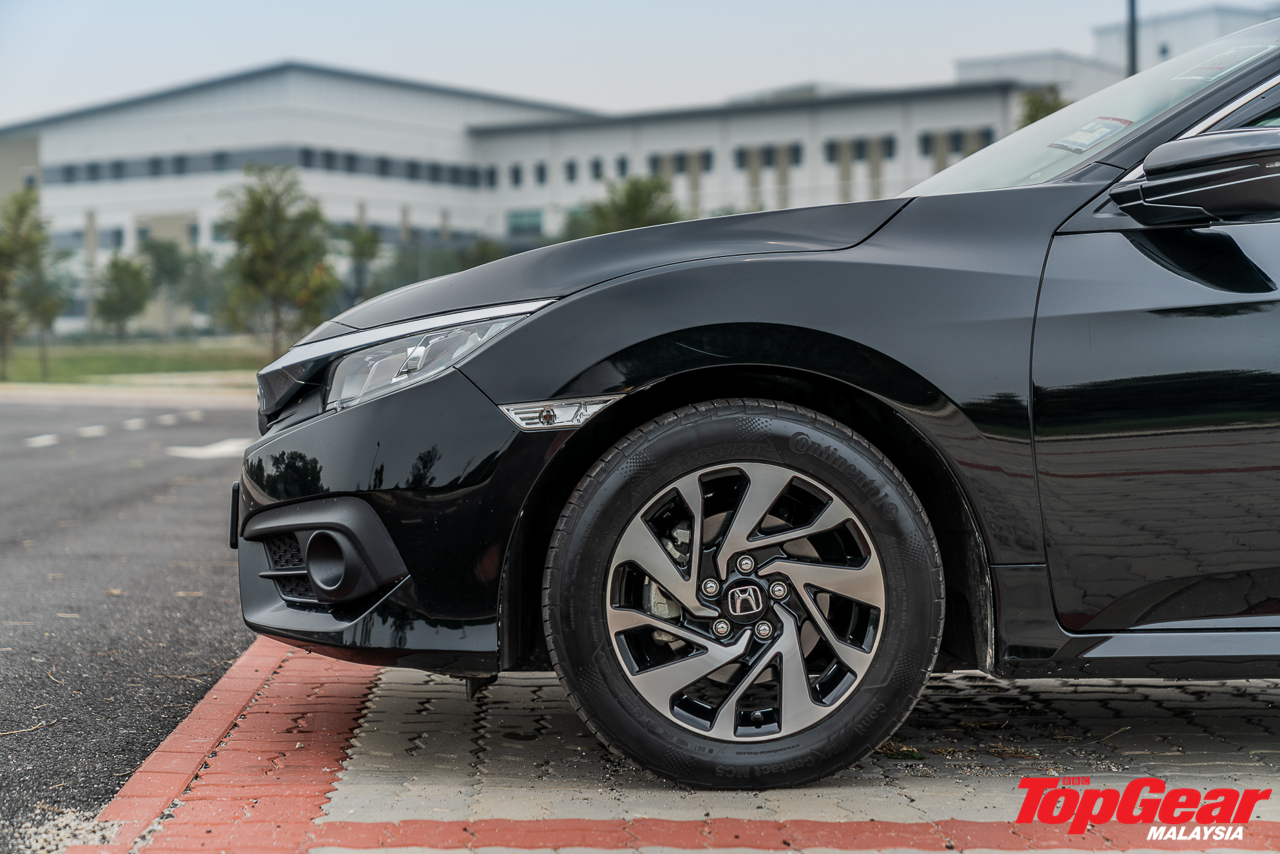
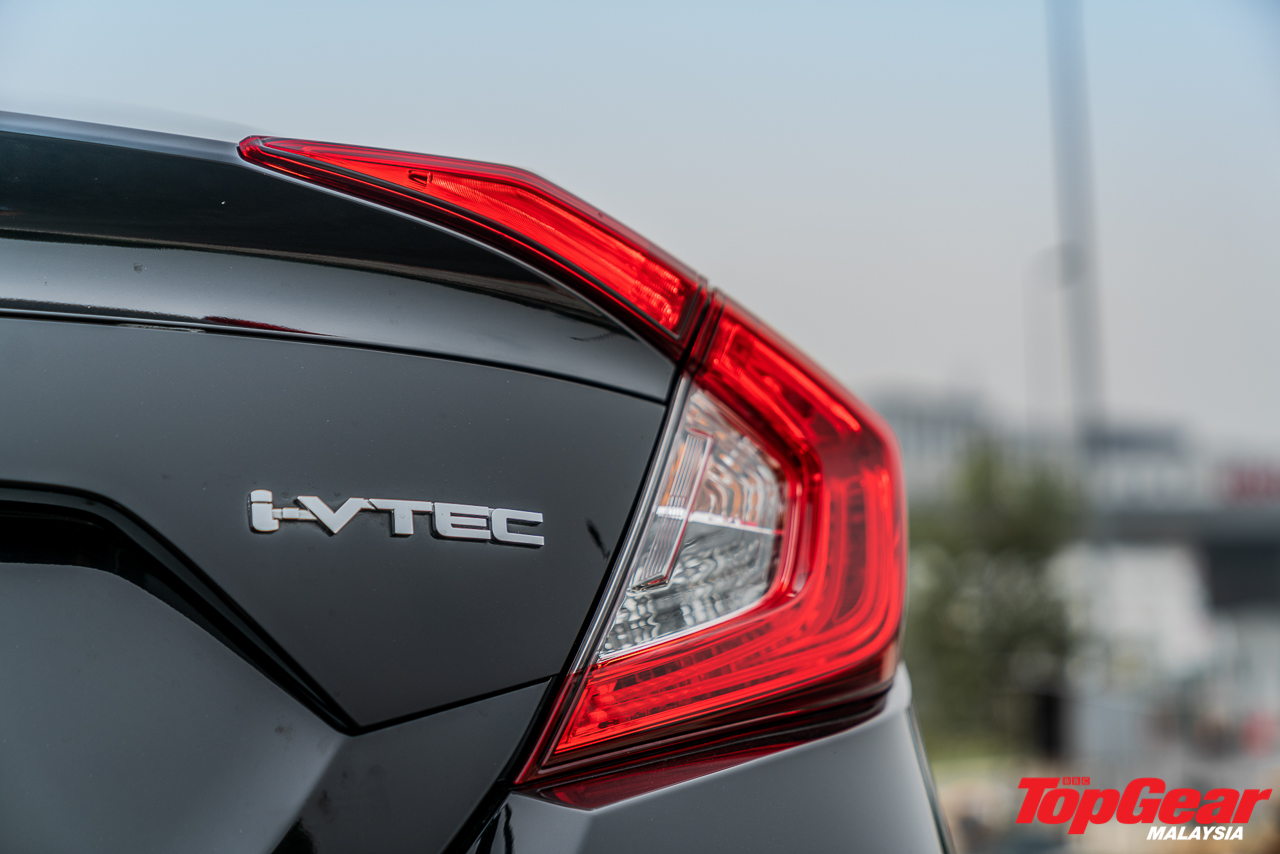
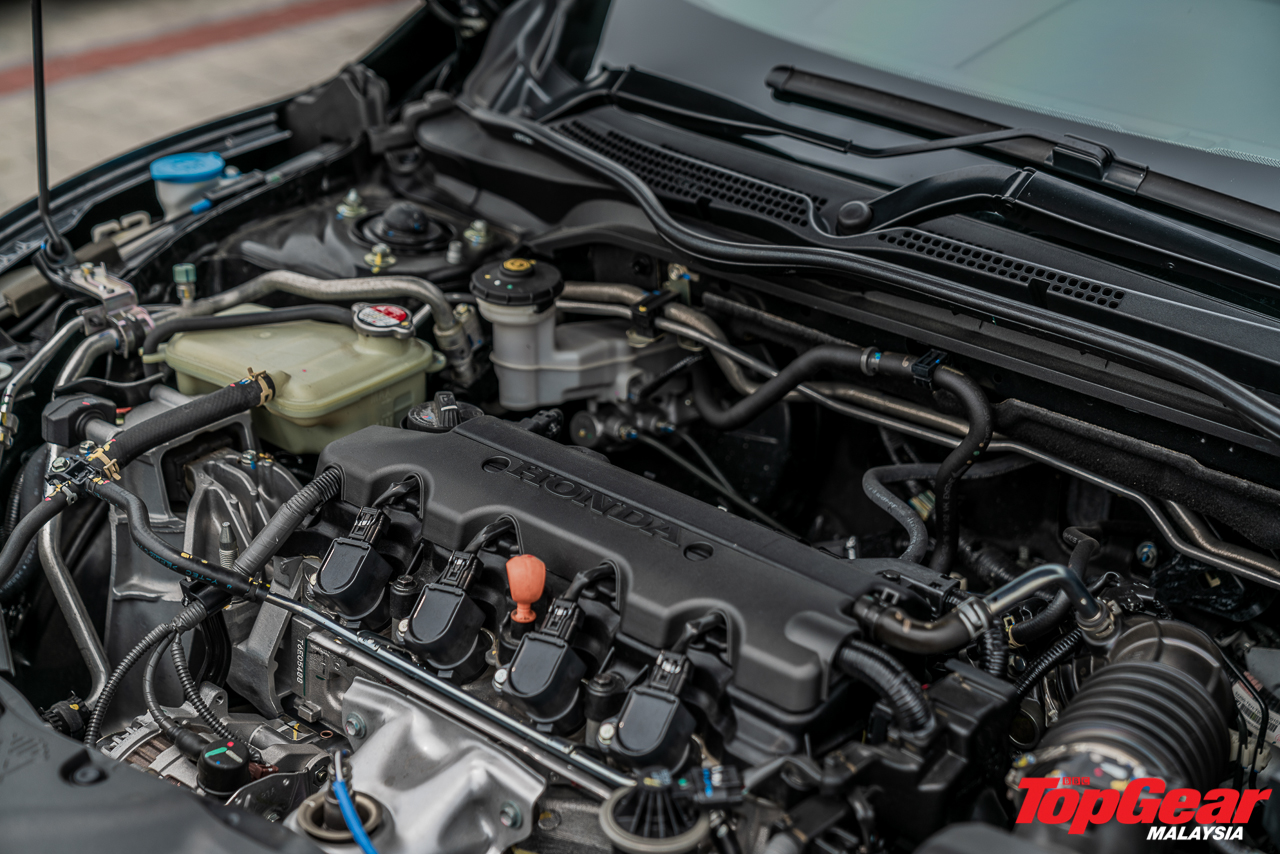
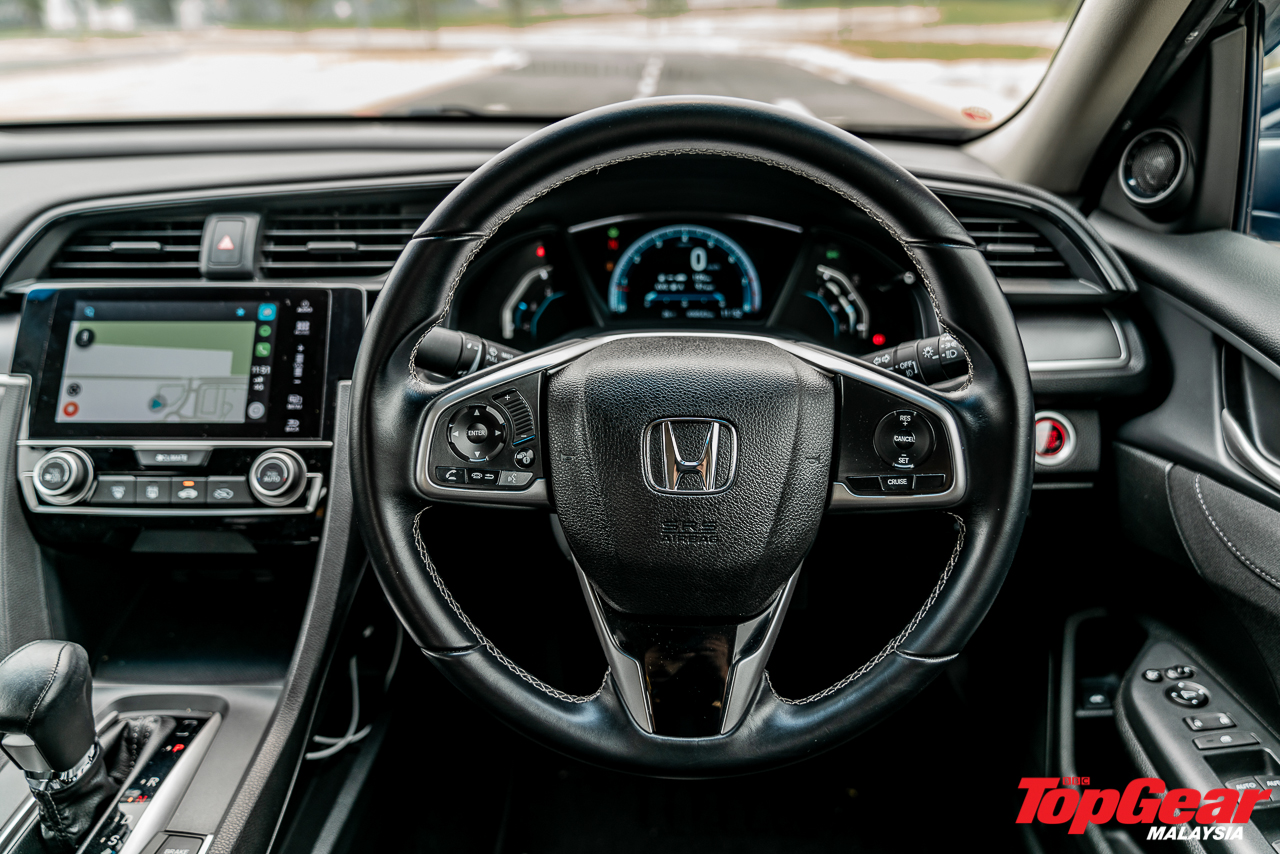
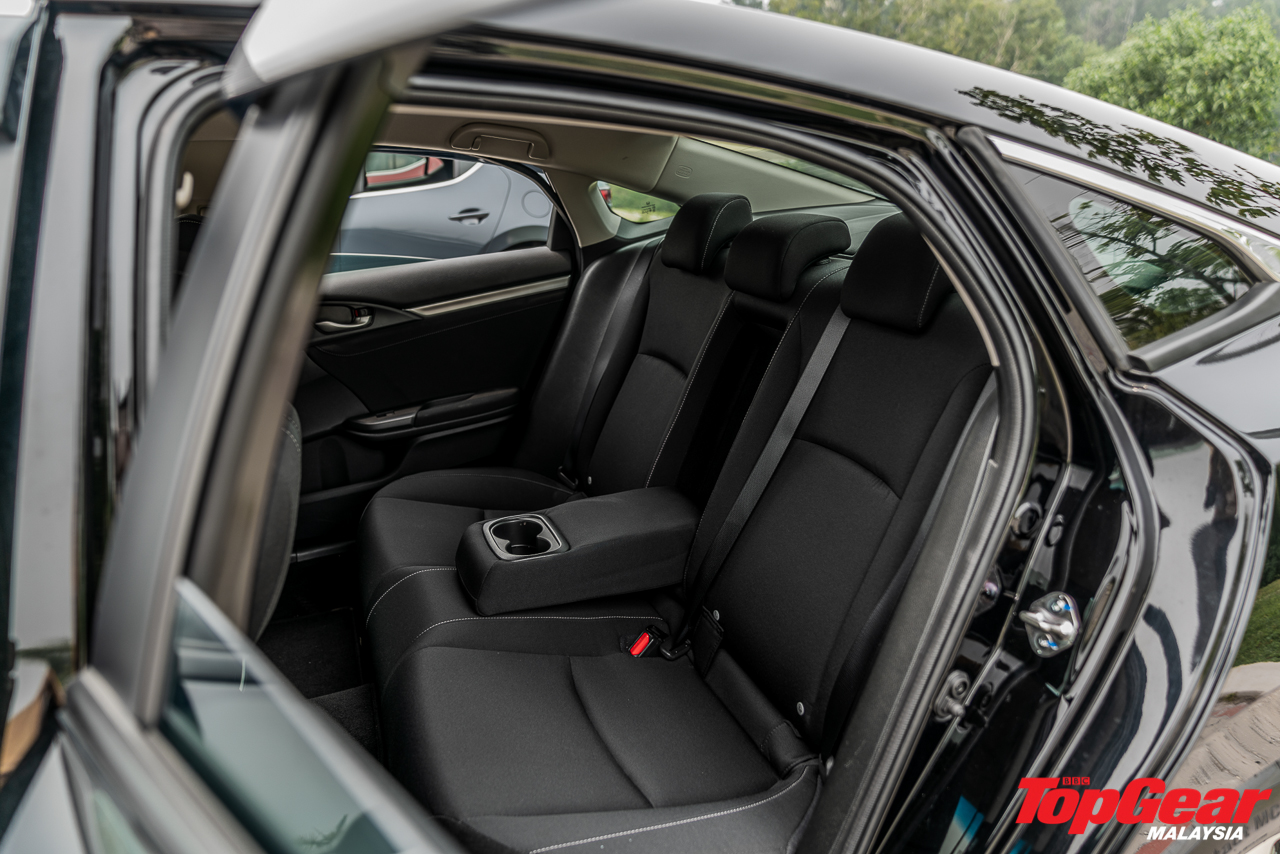
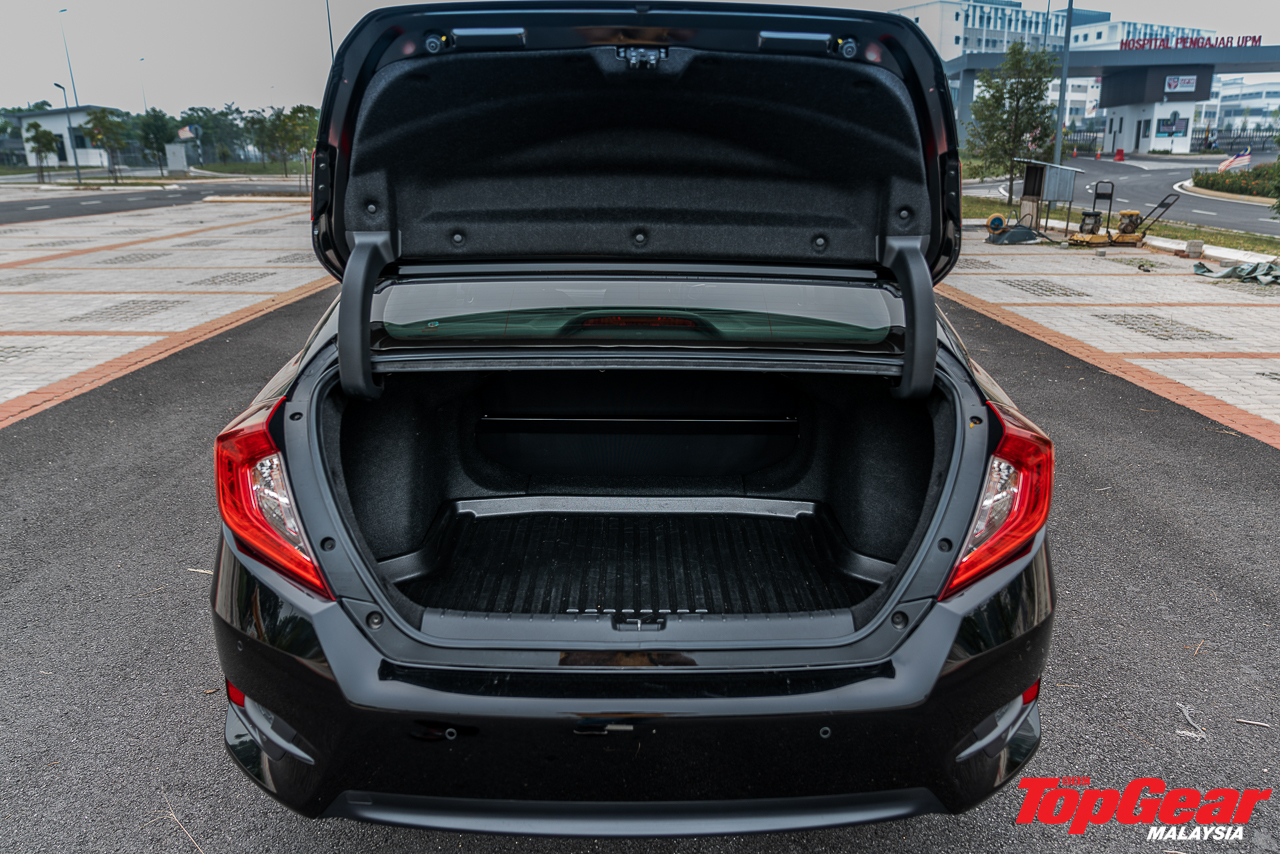
The Mazda3’s SkyActiv-Drive six-speed auto may edge the Hyundai’s in terms of overall engagement and urgency, but its 1.5-litre engine has to work harder too. When we last drove the base model in the Sepang International Circuit, the experience was largely entertaining as you can always drive an engine of this capacity to the limit for the most part. But in daily scenarios where you’ll have to endure stop-and-go traffic, overtaking and pulling out of lights and junctions, the bigger power plants in the Elantra and Civic get the job done more effortlessly.
Back in the Civic, Honda skirts controversy by opting to pair its 139bhp/174Nm motor with a CVT. It’s certainly not the most engaging bit of kit here, but it gets the job done with a fair amount of polish. The i-VTEC engine is difficult to fault as well. It may not have any headlining stats in such company, but the 1.8-litre Civic plays the midfield like a pro.
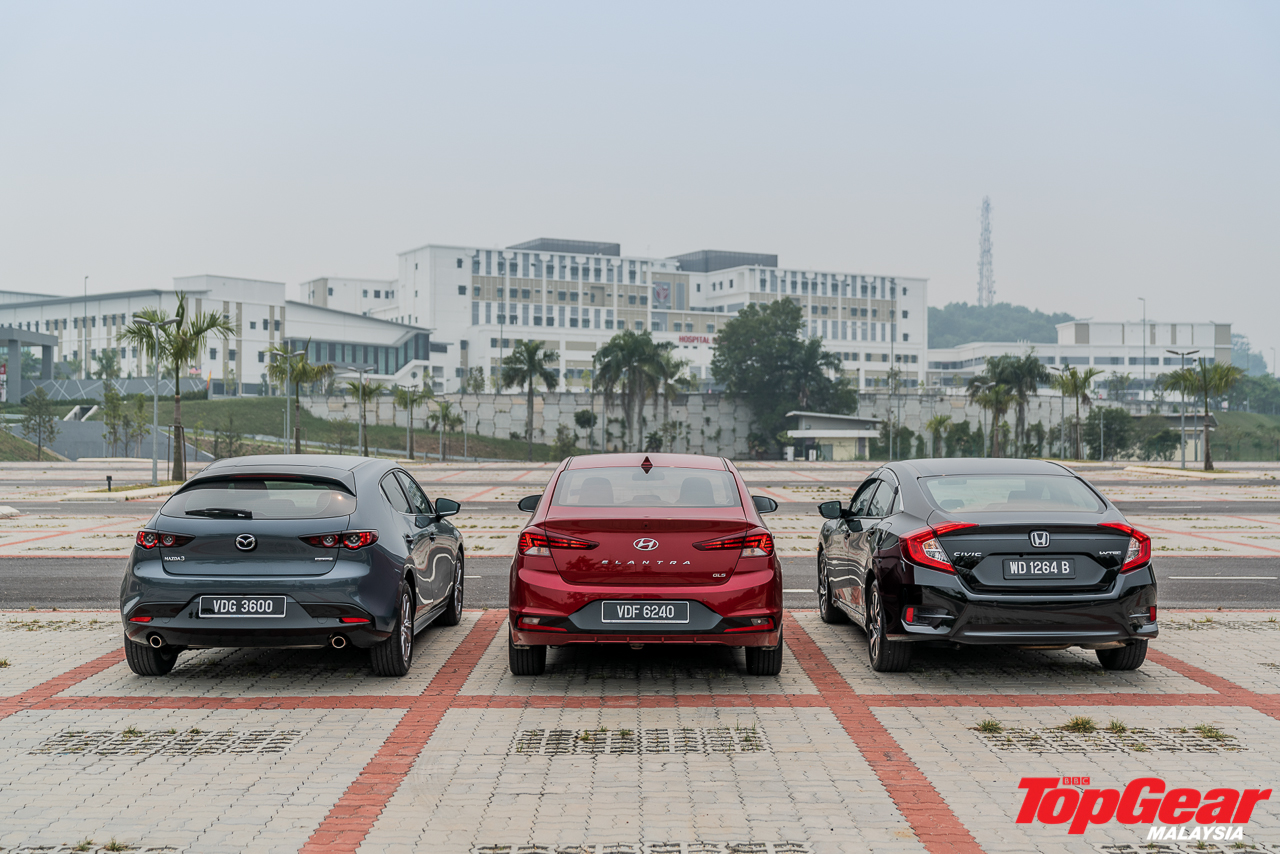
Turn the page to ride quality and you’ll see Honda veering off the middle lane to lean towards a comfort-biased setup instead. The softness in its ride contributes to quite a bit of sway on the turn, which can be nauseating depending on who’s at the wheel. There are many lateral forces at work when applying steering on the move that may affect the serenity of the ride, especially on longer journeys through winding sectors. But some experienced enthusiasts may find the unfiltered dynamic feedback useful in isolating imperfections in the suspension, wheels and tyres.
Regular drivers who couldn’t care less will likely favour the 3 for its G-Vectoring Control Plus (GVC Plus) feature, which modulates engine response depending on steering angle to minimise the effects of the same, unsavoury sensations the Civic delivers when cornering at speed. It’s a computer-aided solution to ride comfort backed by a driver-oriented suspension that’s level yet supple around the bends – Mazda’s switch from multi links in the rear to a torsion beam causing no obvious signs of detriment in the way the chassis behaves under spirited driving.
Splitting the Japanese duo it battles in the ride and handling department, the Elantra offers the best of both worlds between the Civic’s determination to keep things comfy and the Mazda’s sporty strategy. The ride in the sole Korean number is taut where it needs to be – there’s a distinct firmness over uneven roads, but not overwhelmingly so – but it’s balanced with just the right amount of damping for the daily grind. This gels well with the Elantra’s largely mature powertrain. And we daresay it’s as close as you can get to a continental driving experience at this spec and price.
That said, the 1.8-litre Civic – even in its un-updated format that has been around since 2016 – continues to demonstrate Honda’s grasp on the Malaysian C-segment by offering one of the most well-rounded packages you can get in a mid-size family car today (until the new Toyota Corolla arrives, that is), at a reasonably affordable ticket. Pricing is imperative in a heavily-taxed market like ours, and the fully-imported Mazda was always going to struggle to pull out the wow factor required to justify its hefty tag.
And if party tricks are really what you’re after, the Civic’s remote ignition is still pretty hard to beat.
VERDICT & SPECS:
1ST - Honda Civic 1.8
SCORE: 8/10
Cheapest car of the lot offers the most comfort and practicality, with a decent drive to boot
2ND - Hyundai Elantra 2.0 Executive
SCORE: 7/10
Polarising design hides the most polished powertrain for its price. Rides nicely too
3RD - Mazda3 1.5 (Hatch)
SCORE: 7/10
Looks and feels incredibly premium, but lacks power and kit to justify its hefty tag
| Honda Civic 1.8 | Hyundai Elantra 2.0 | Mazda3 1.5 (hatch) | |
| ENGINE |
1.8 4cyl petrol |
2.0 4cyl petrol |
1.5 4cyl petrol |
| POWER | 139bhp | 150bhp | 118bhp |
| TORQUE | 174Nm | 192Nm | 153Nm |
| 0-100KPH | 10.4 secs | n/a | n/a |
| V-MAX | n/a | n/a | n/a |
| ECONOMY |
6.3 litres/100km |
7.2 litres/100km |
5.9 litres/100km |
| WEIGHT | 1,251kg | 1,280kg | 1,368kg |
| TANK | 57 litres | 50 litres | 51 litres |
| BOOT | 519 litres | 458 litres |
295 litres / 444 litres (sedan) |
